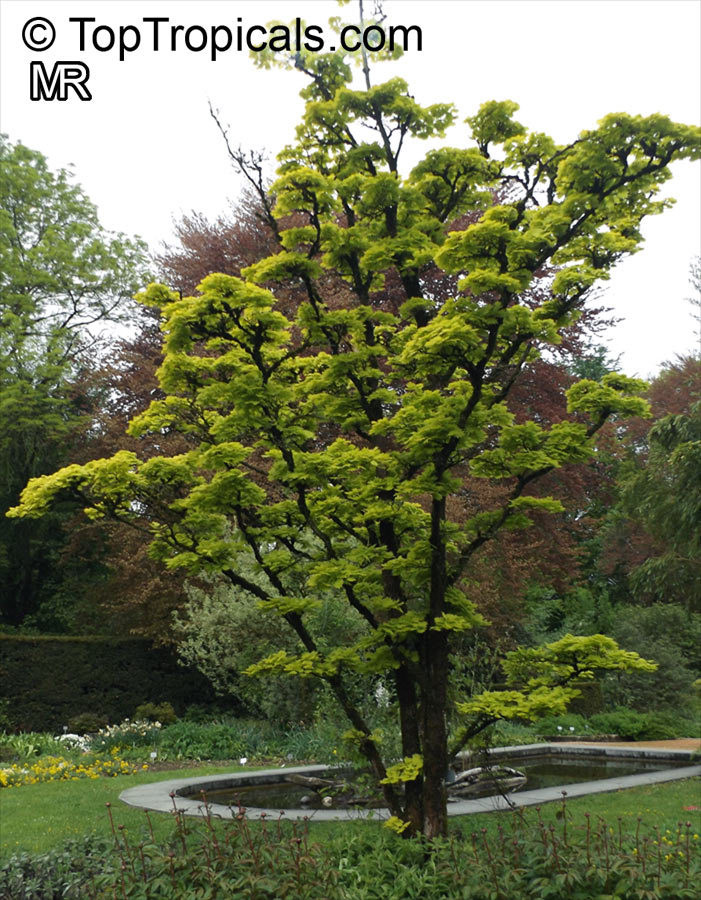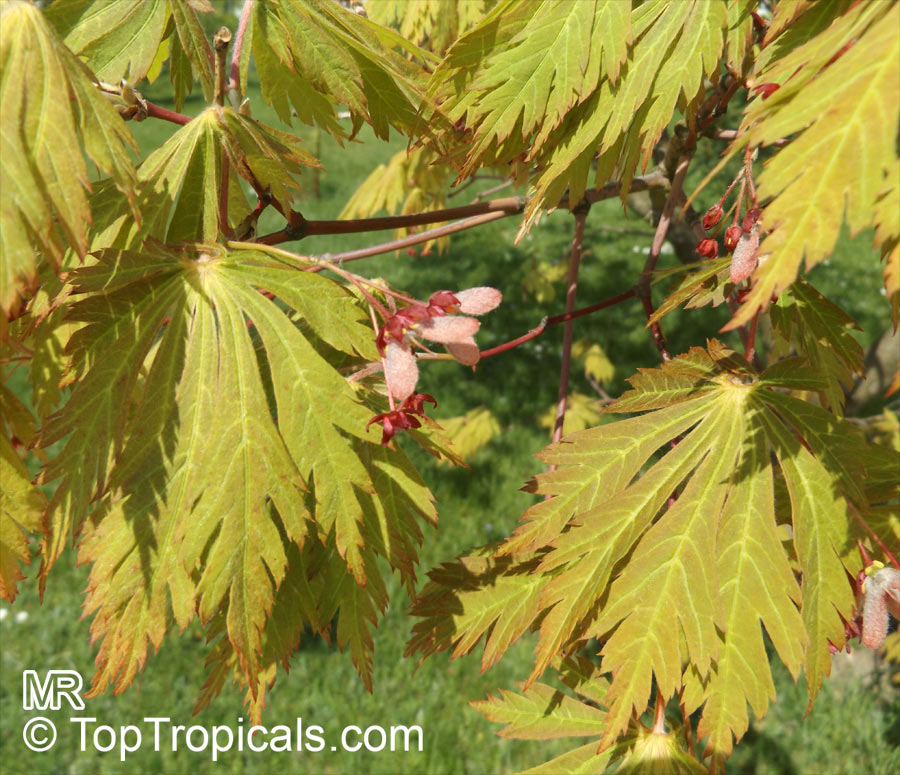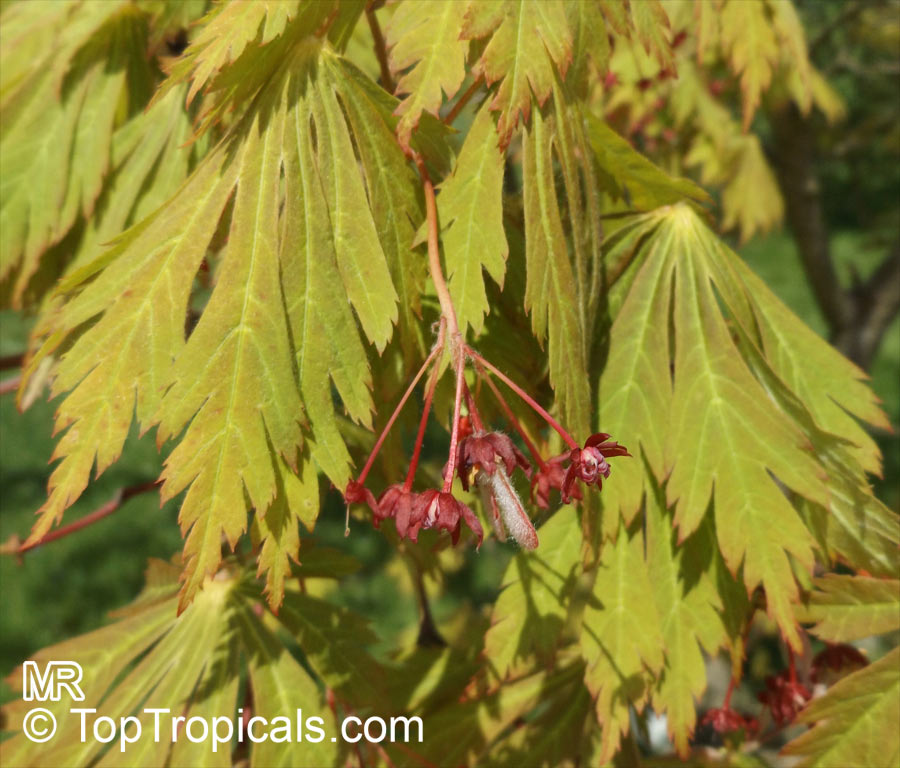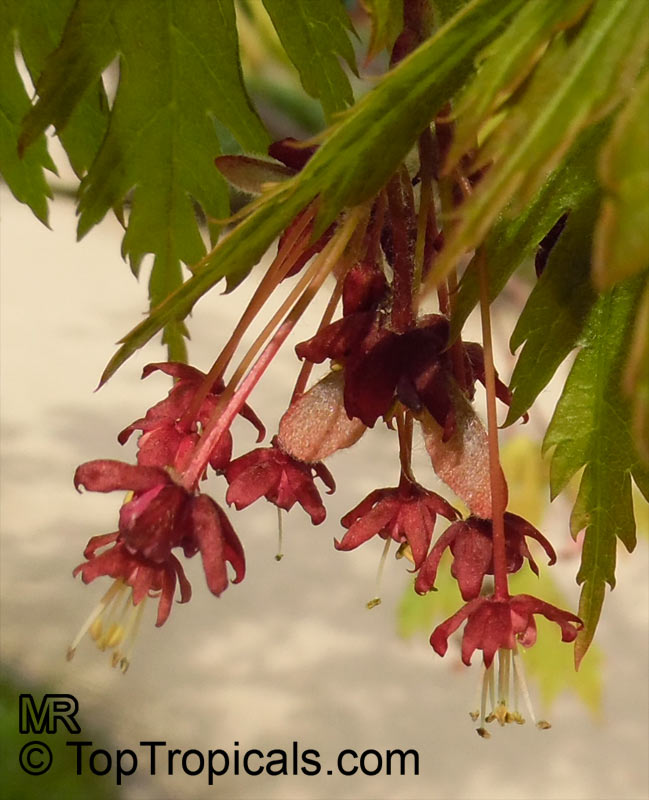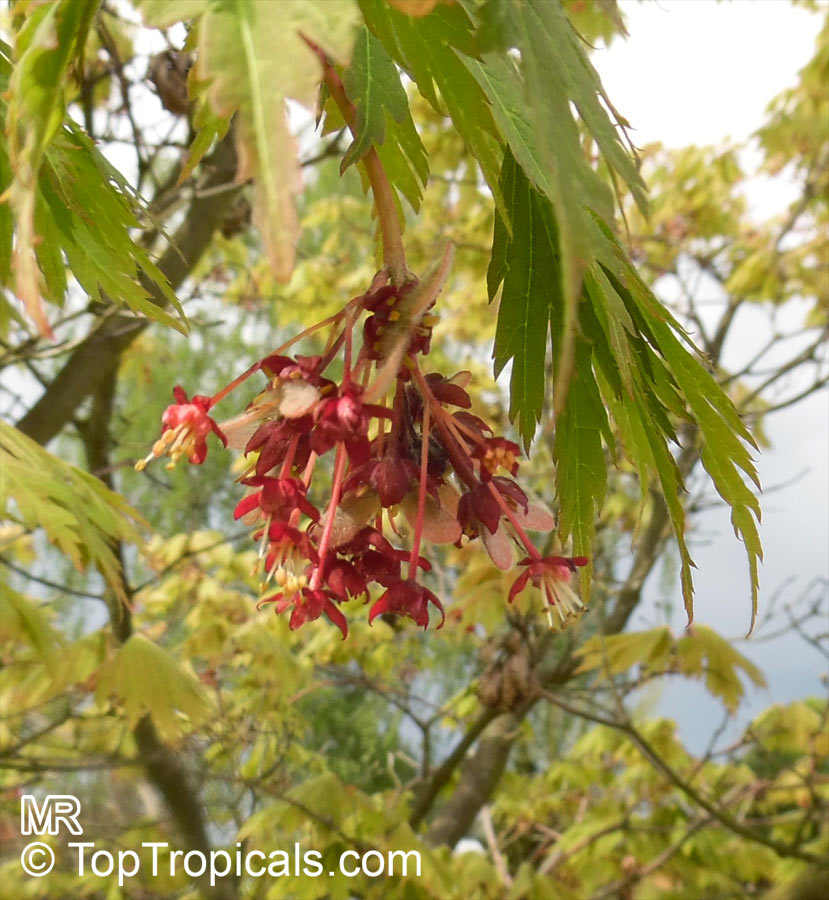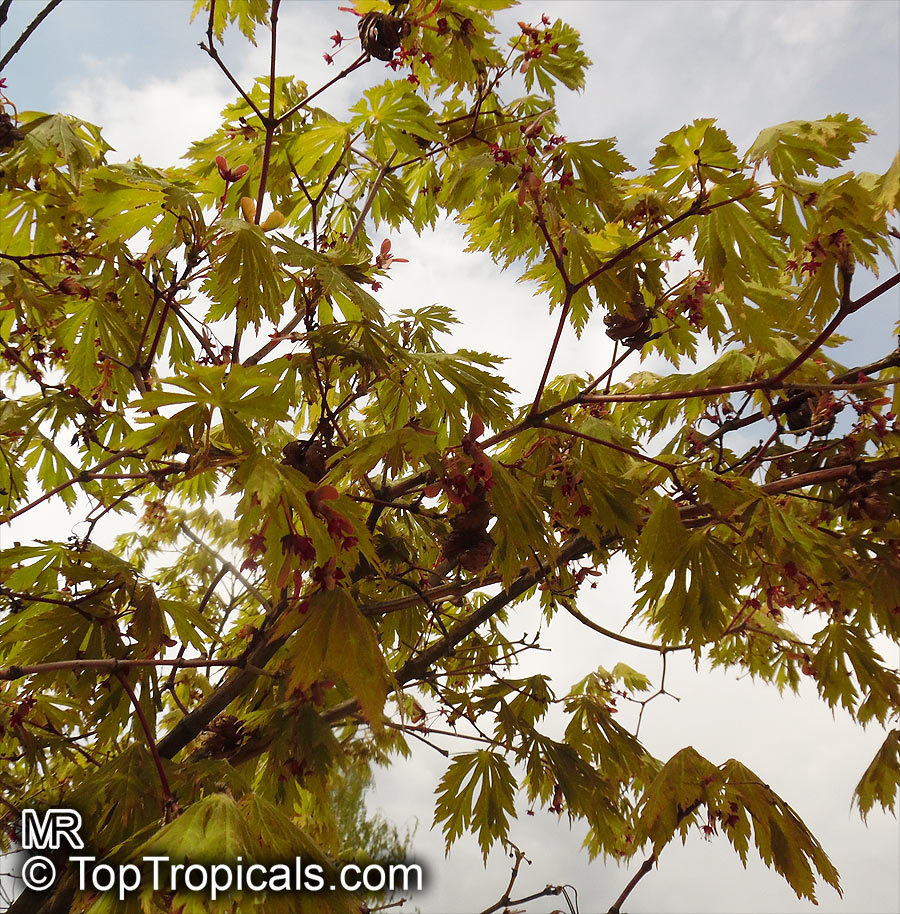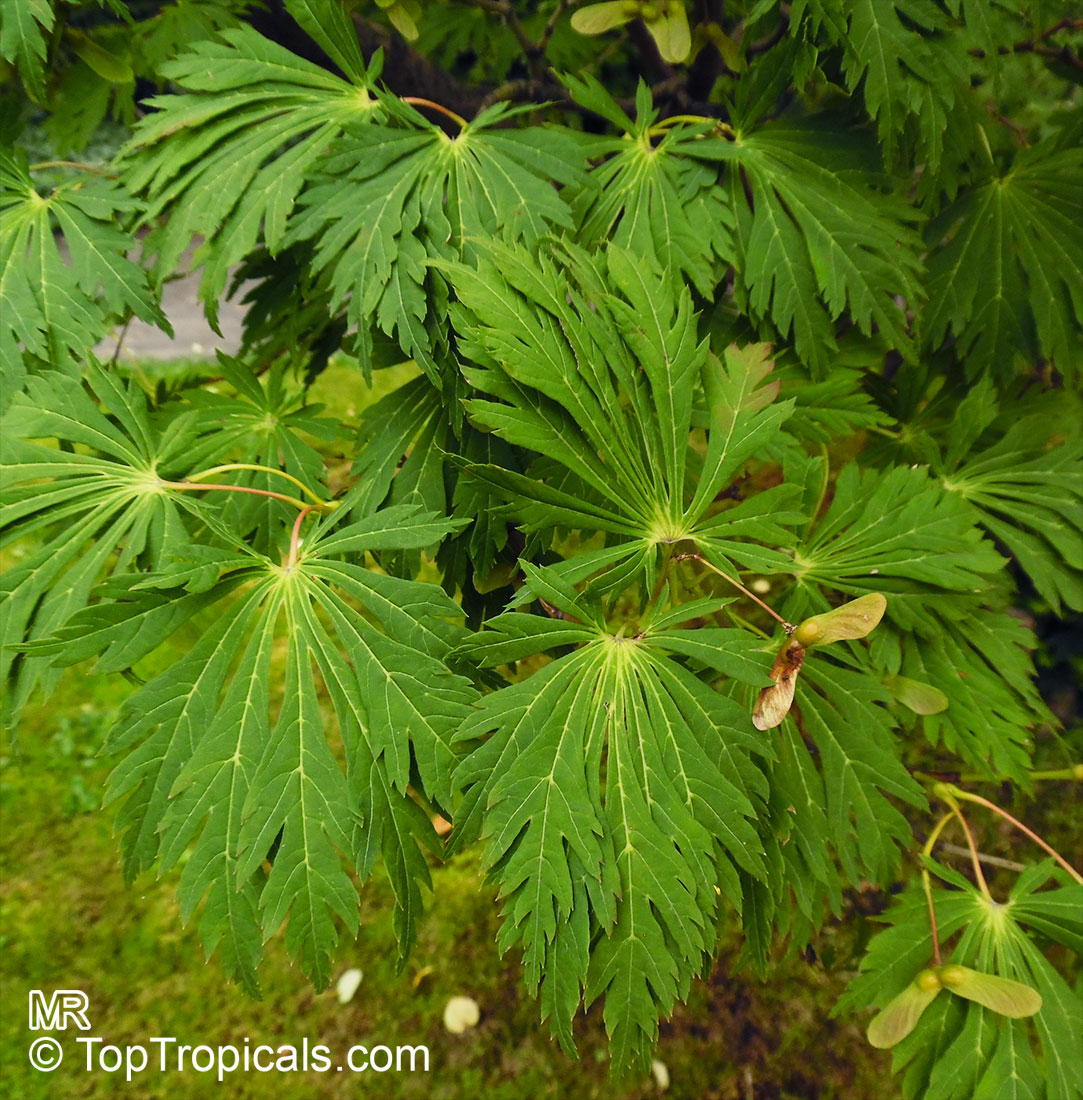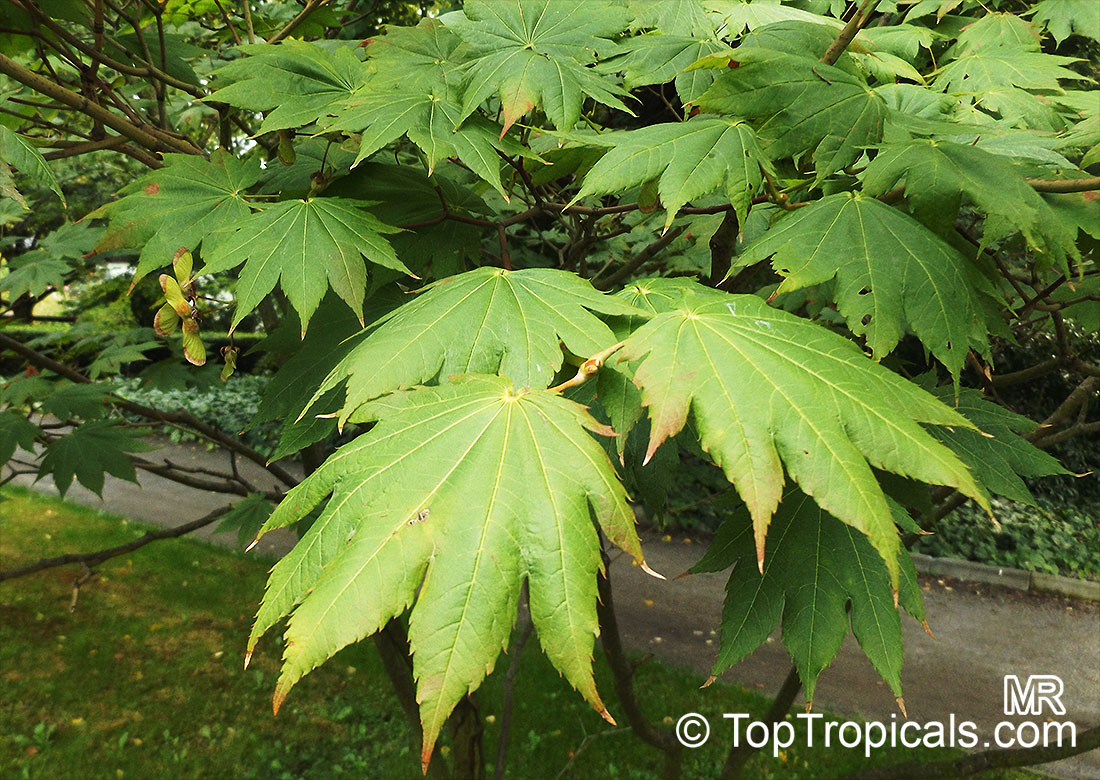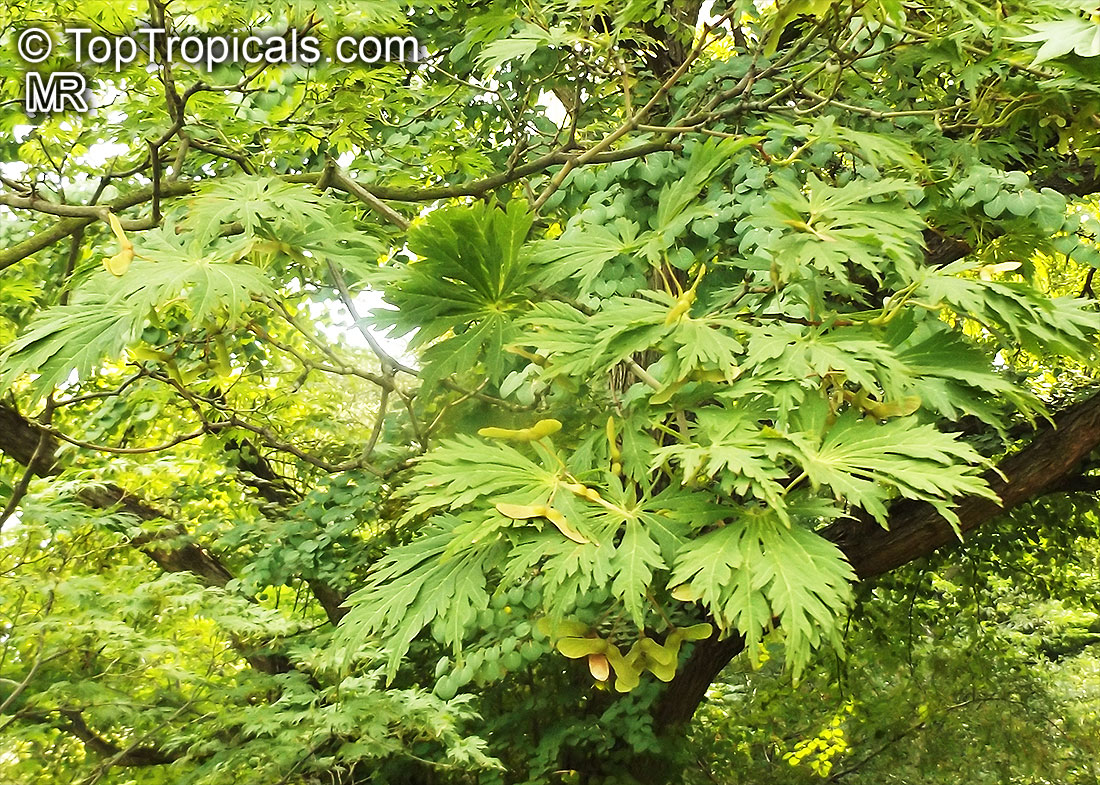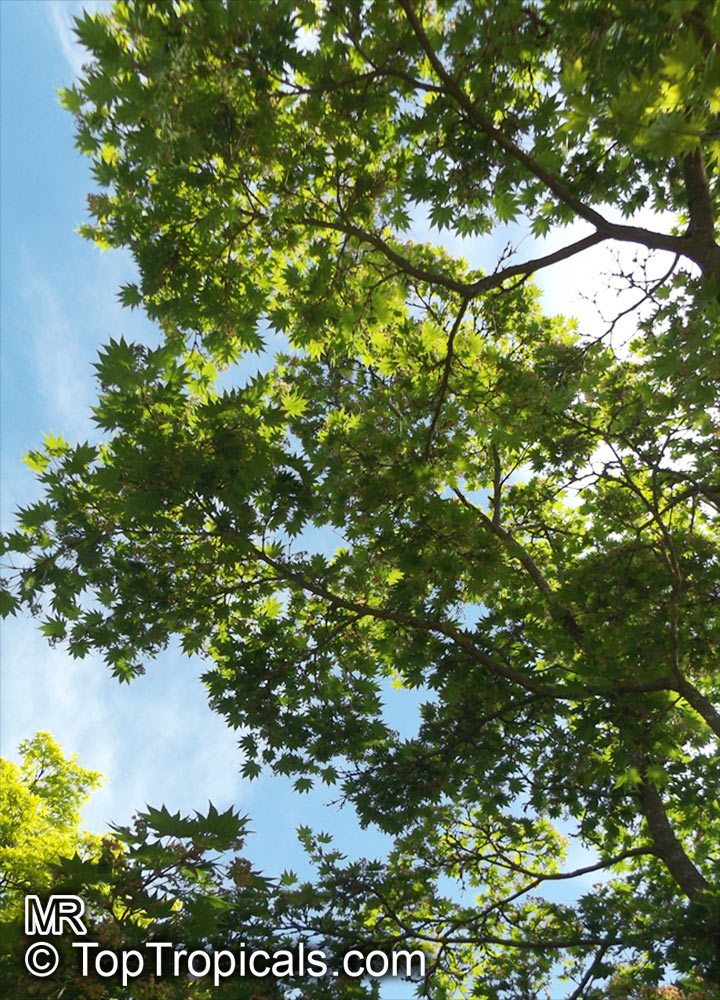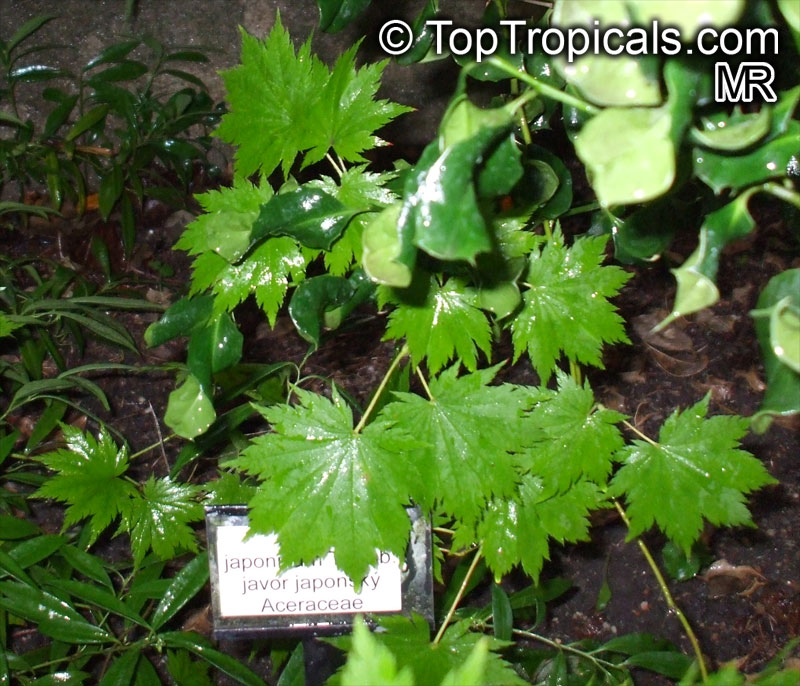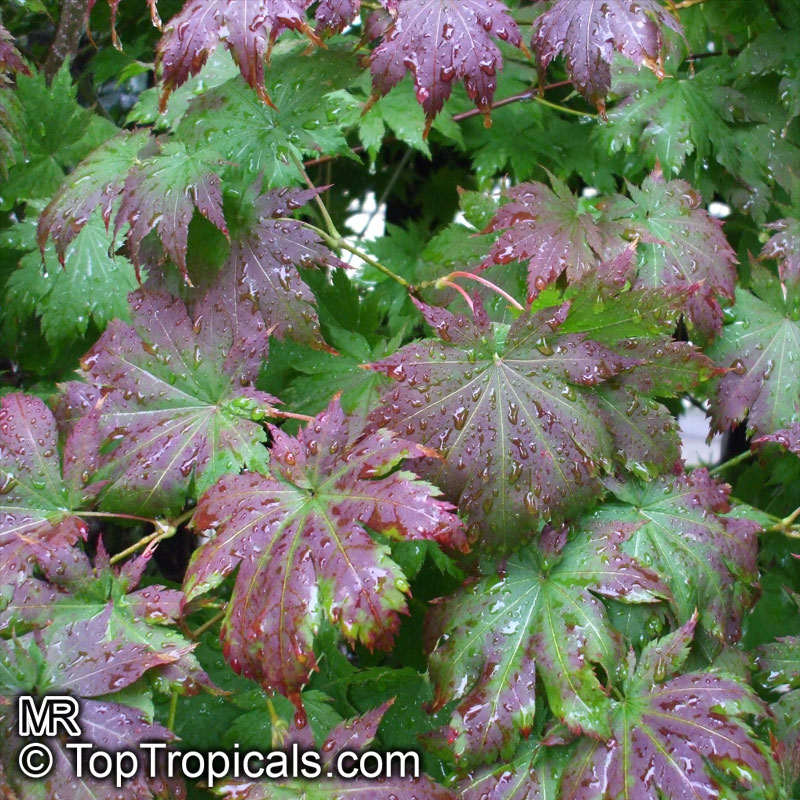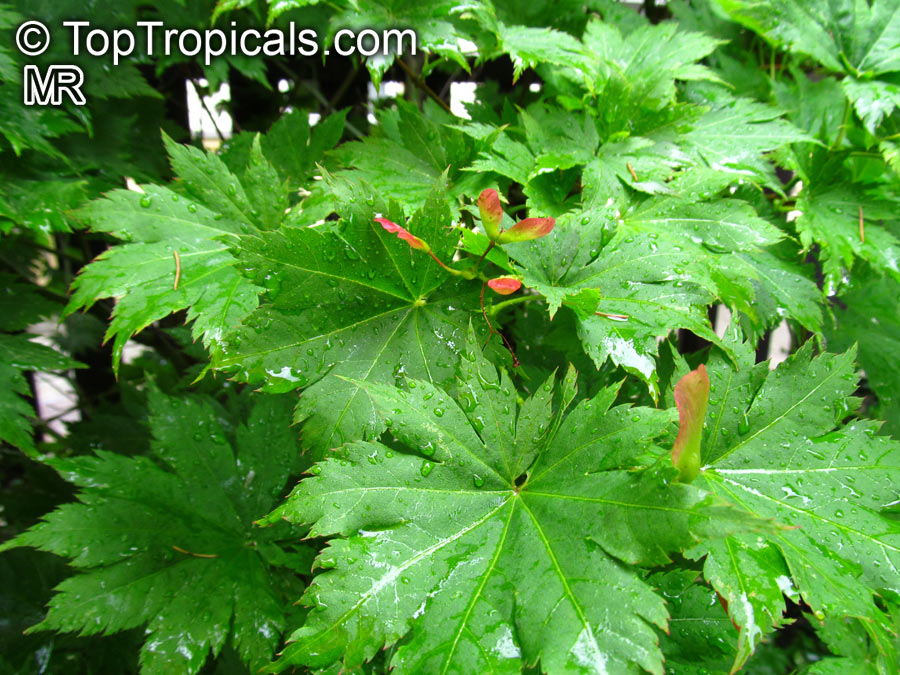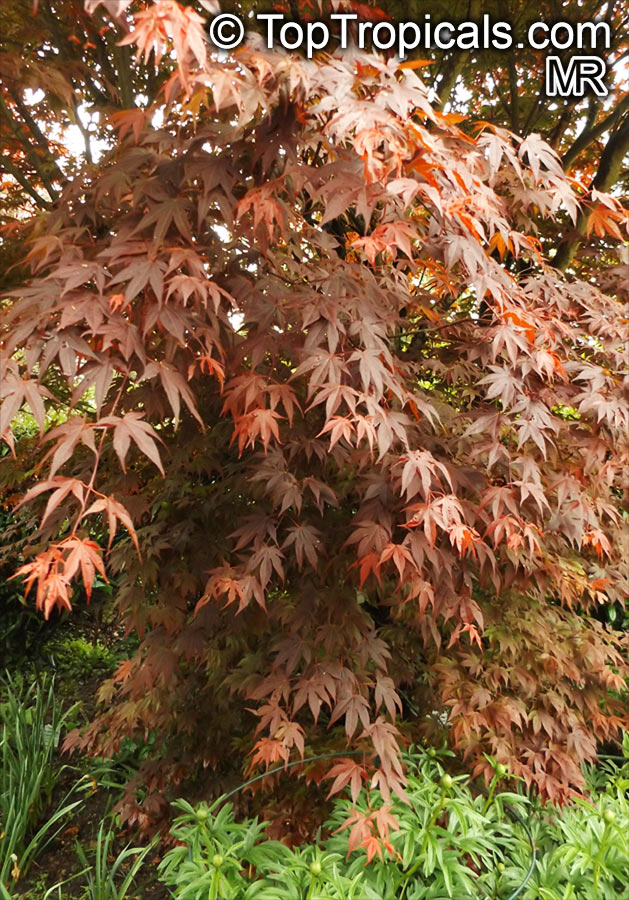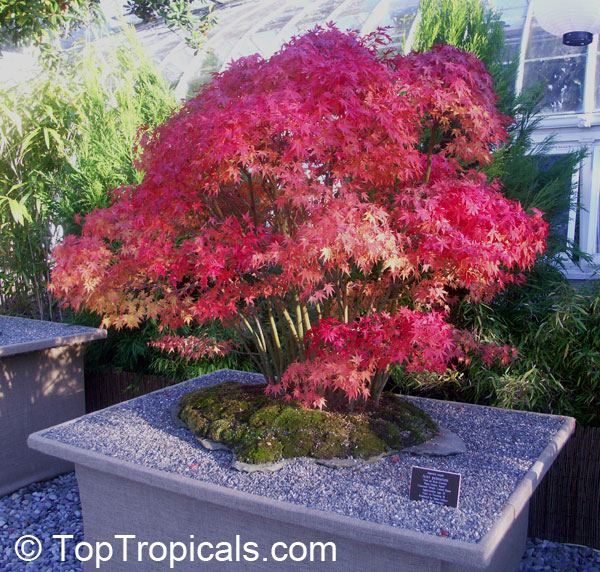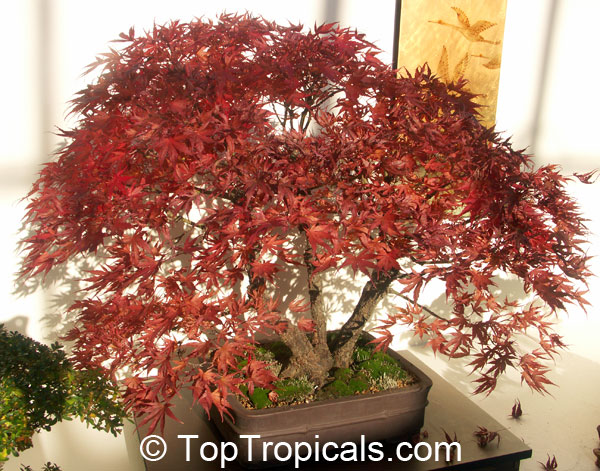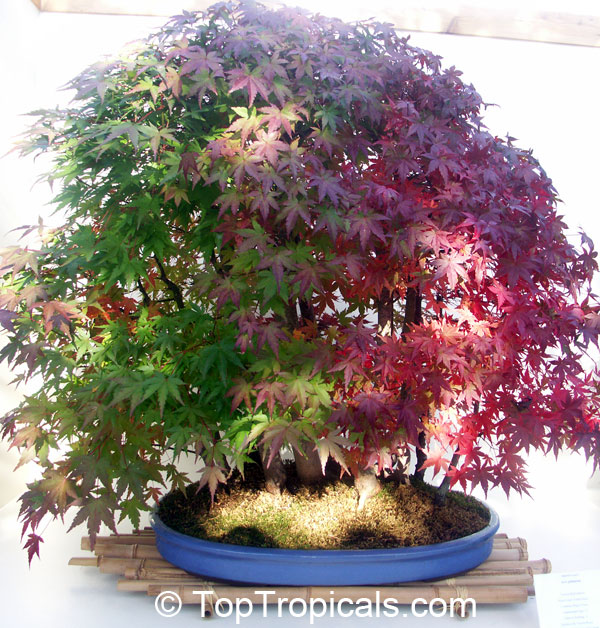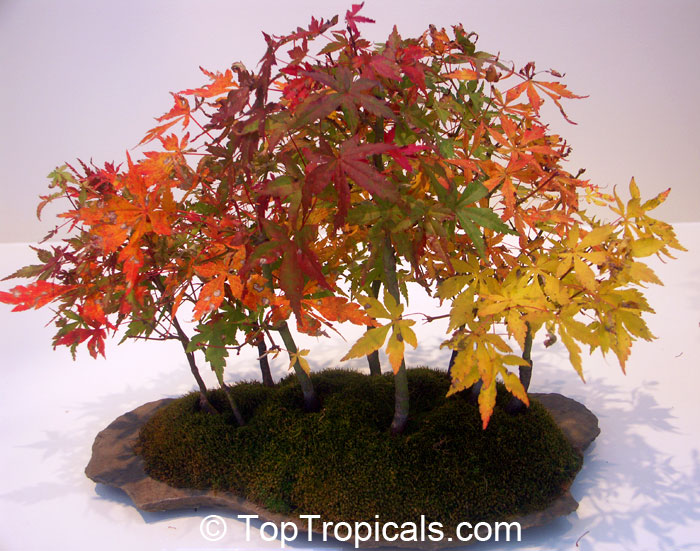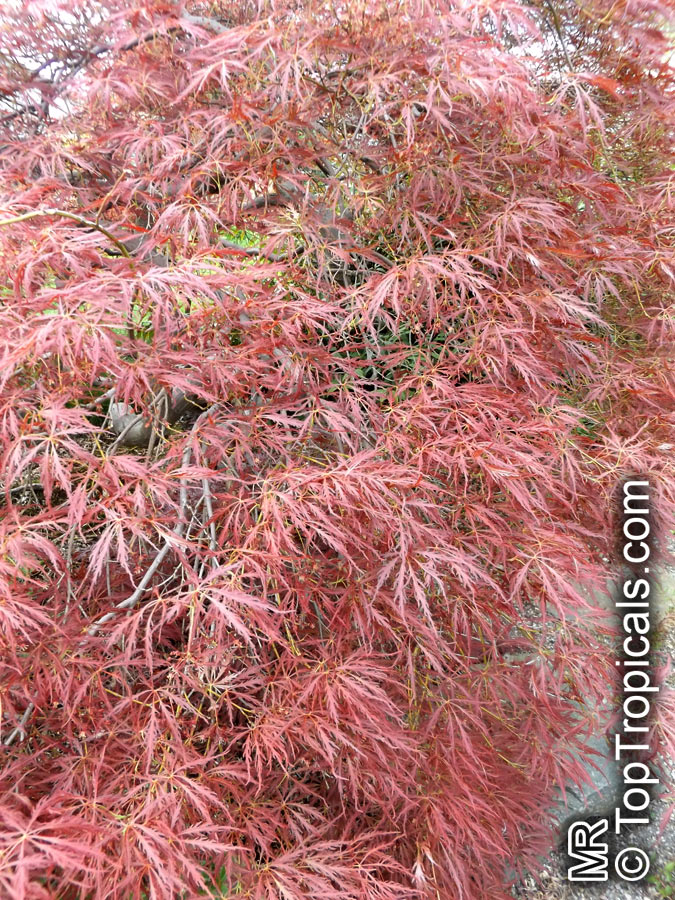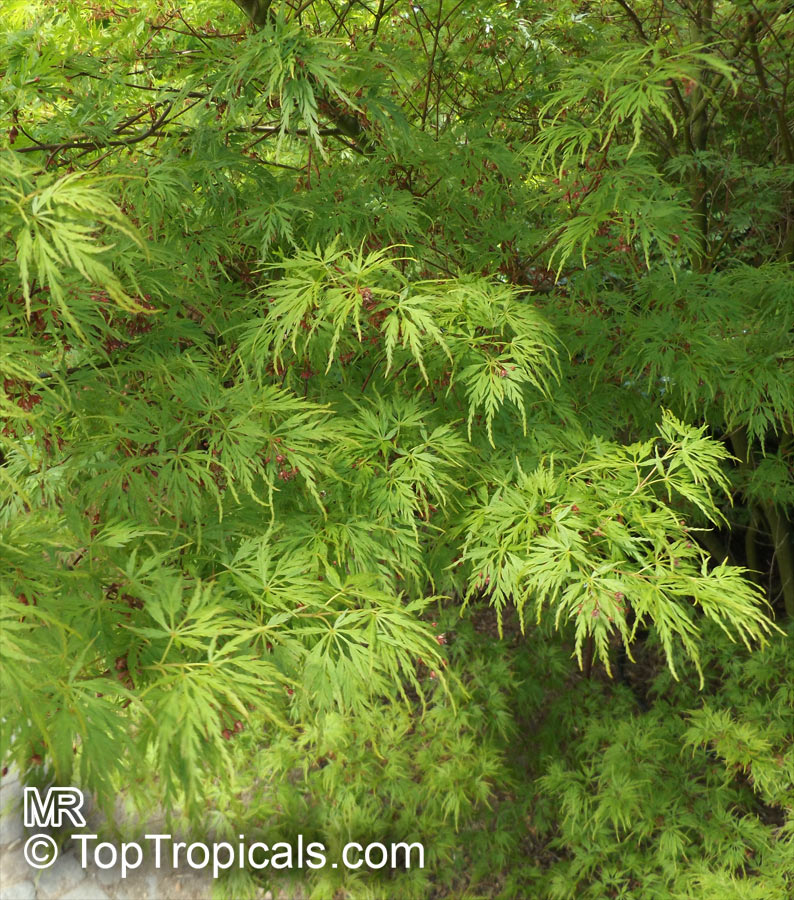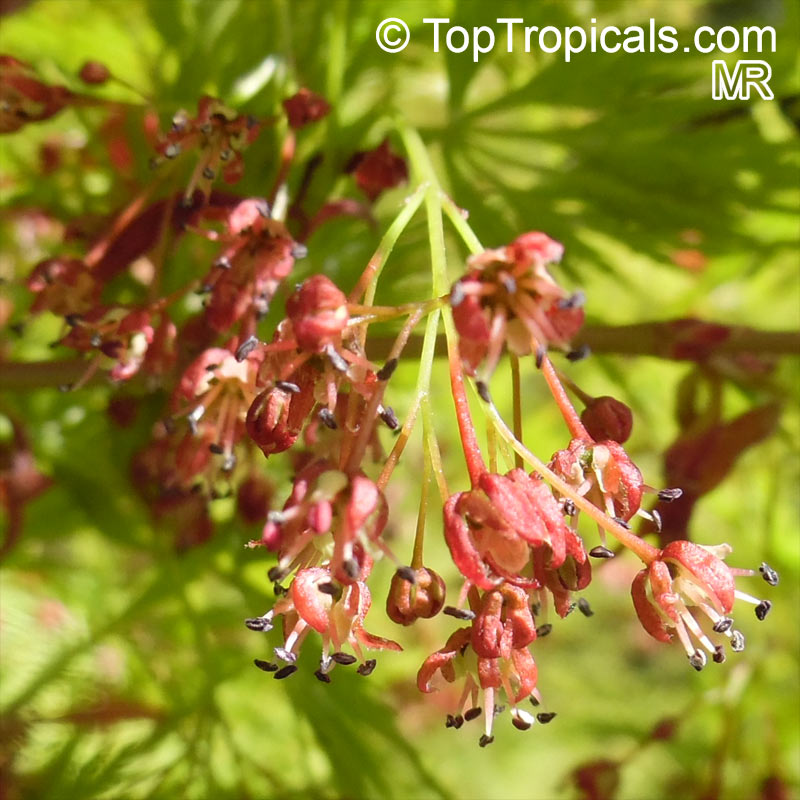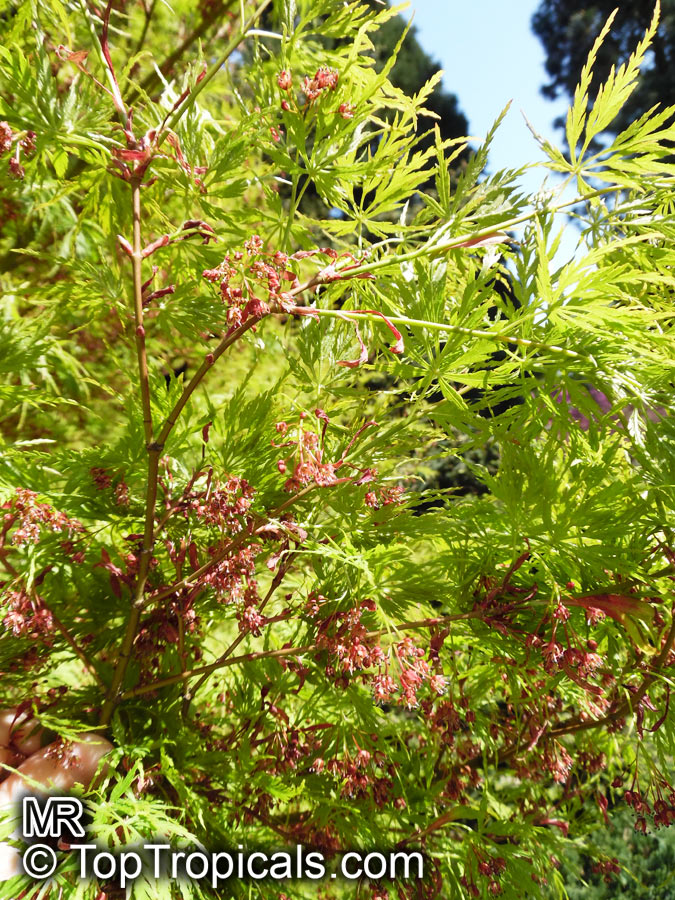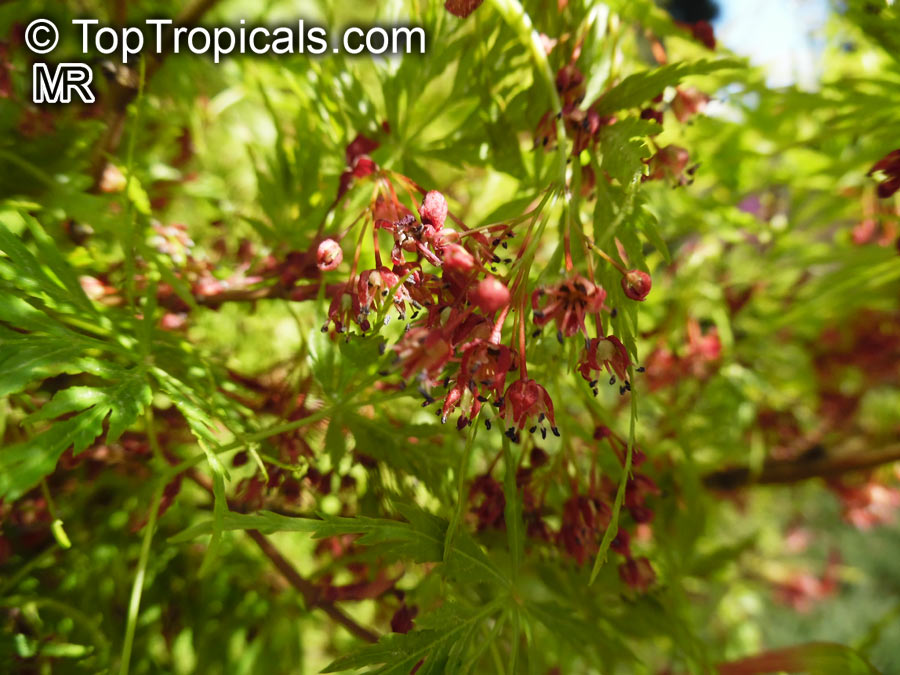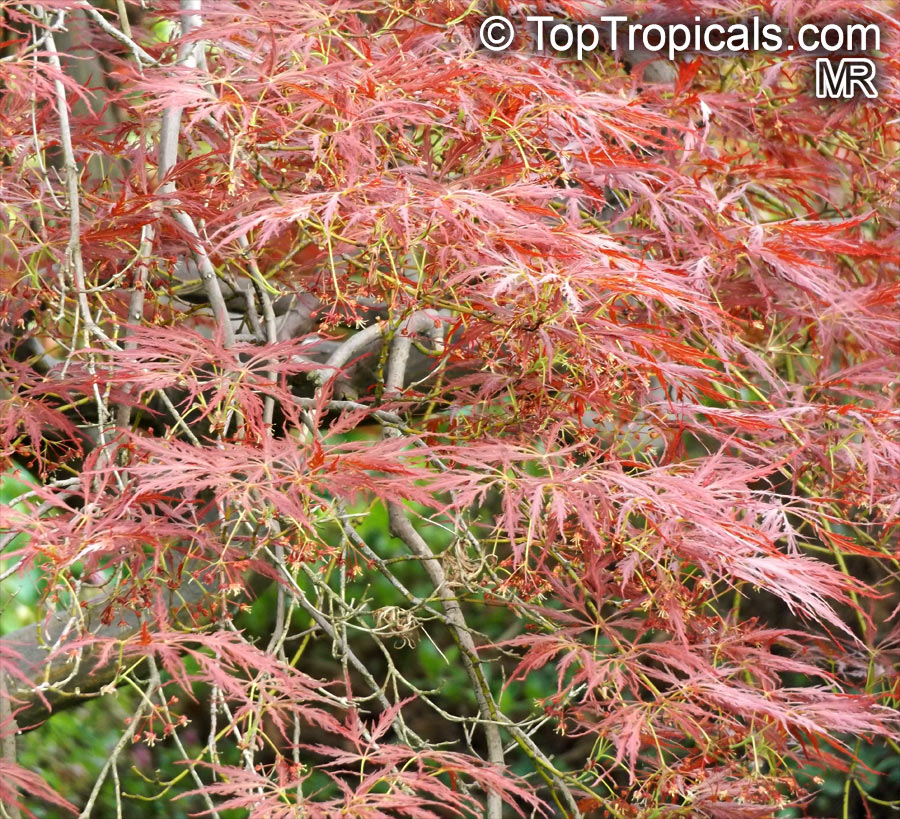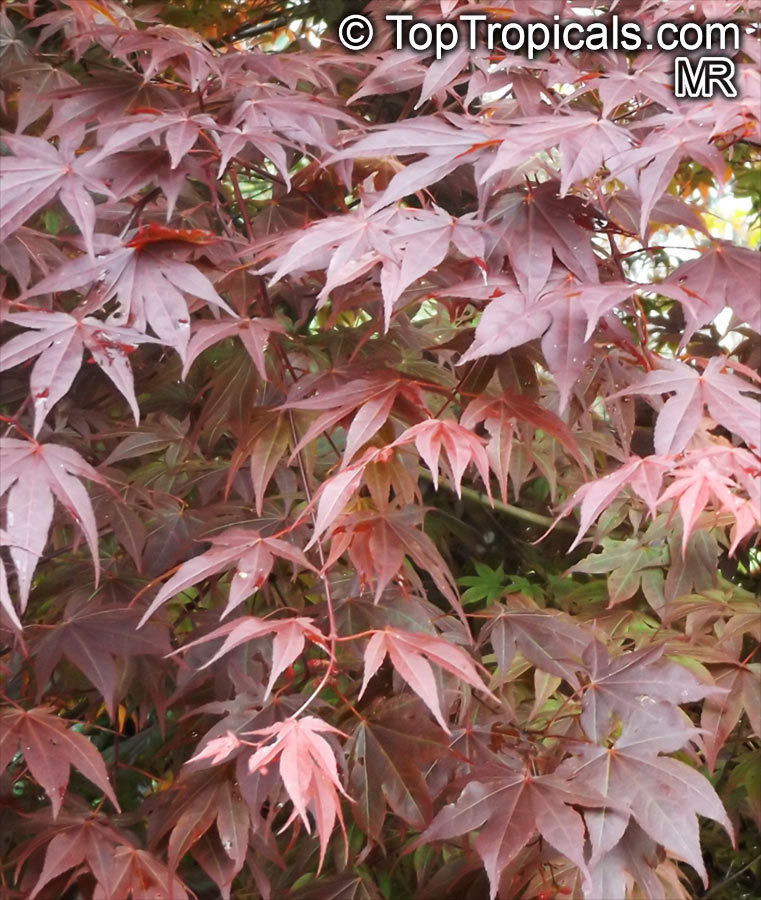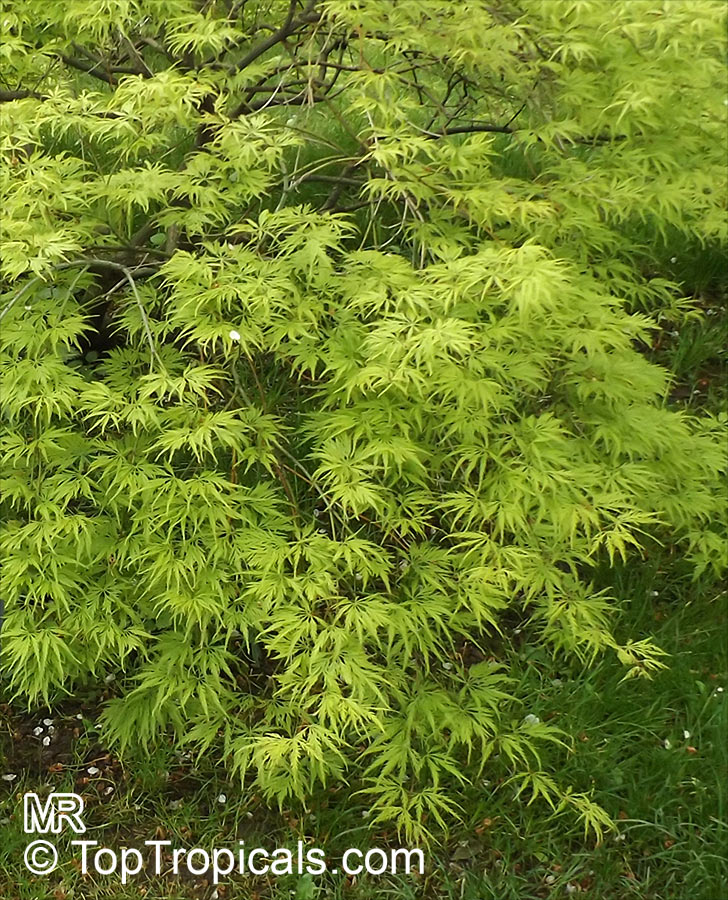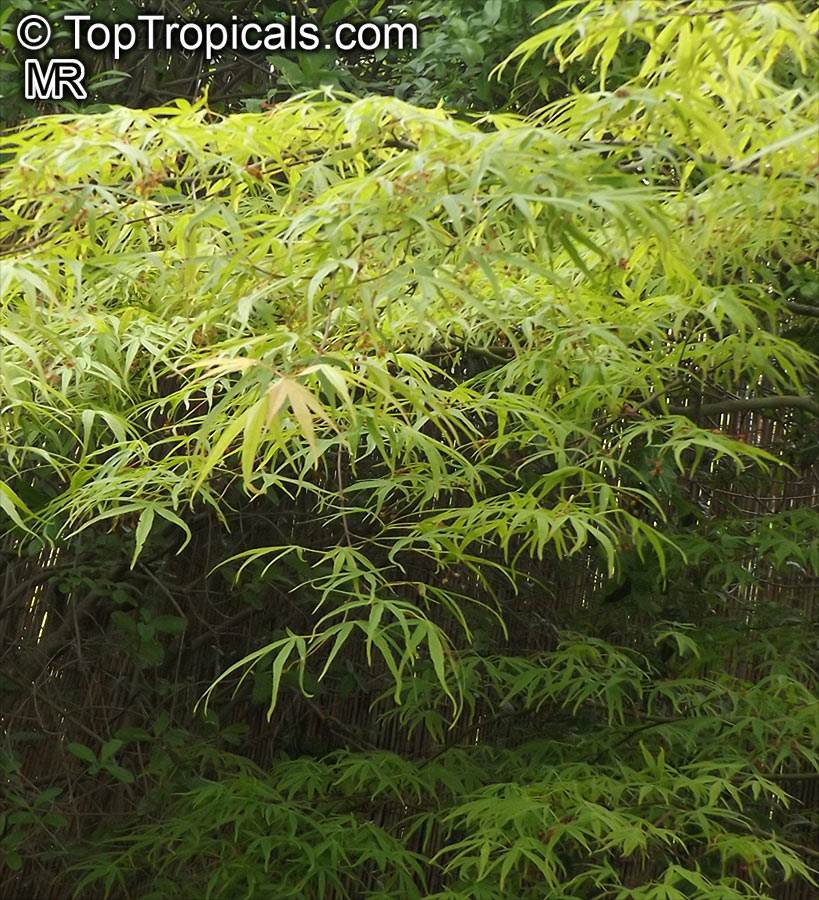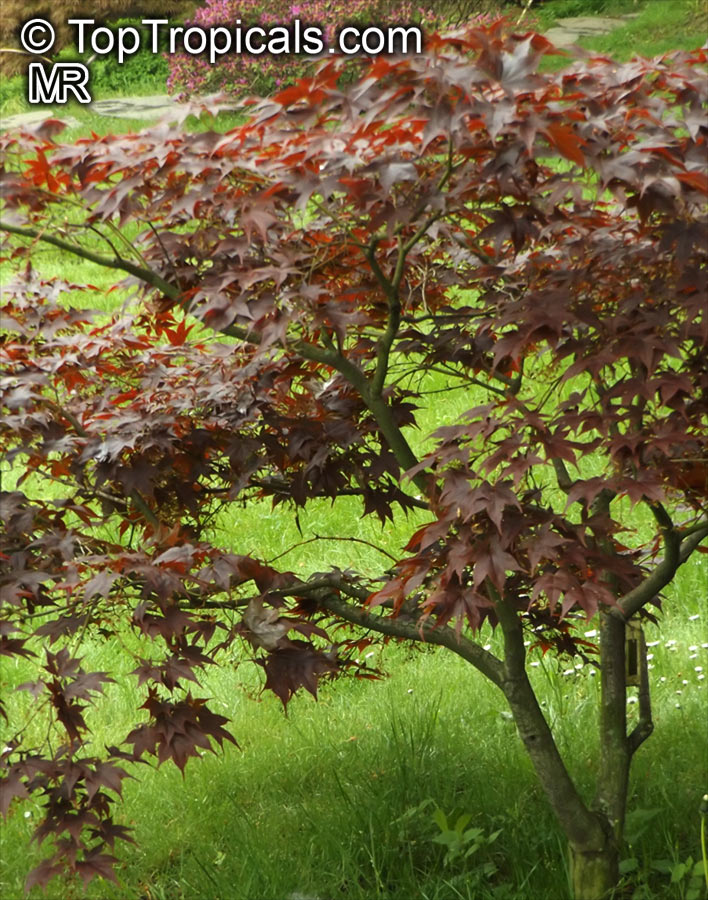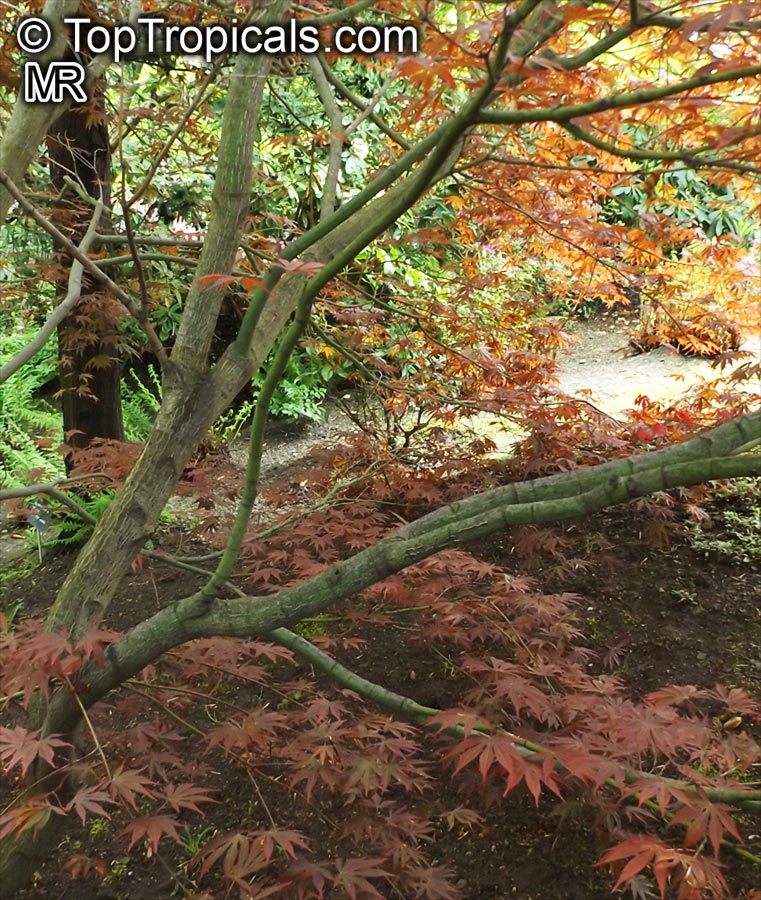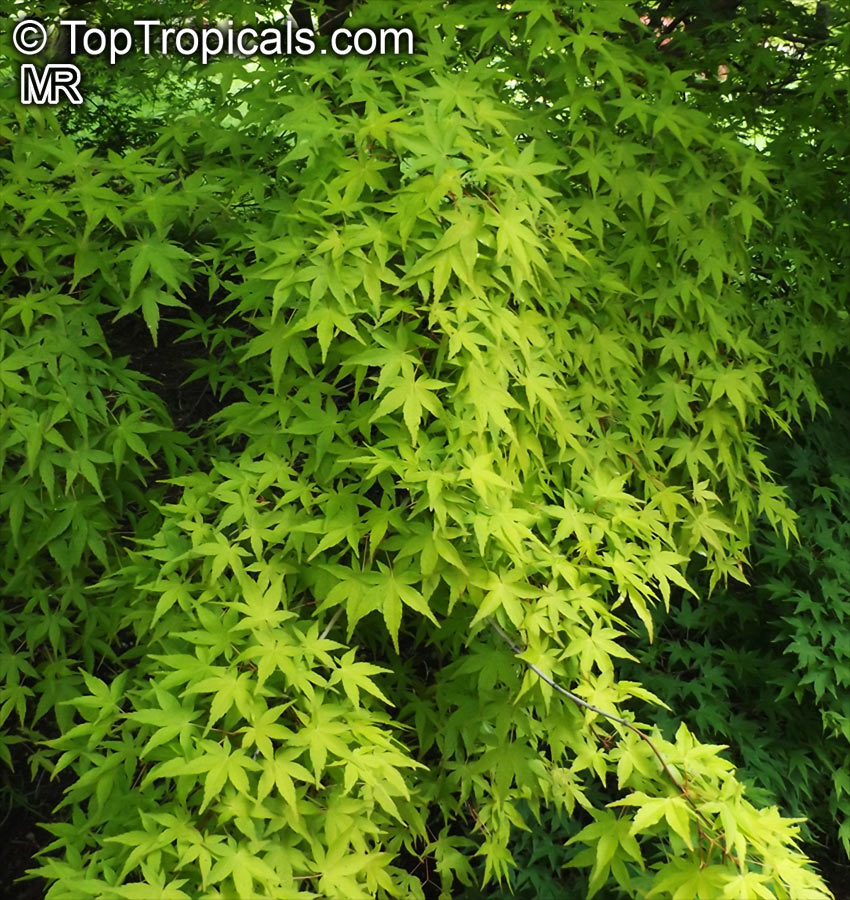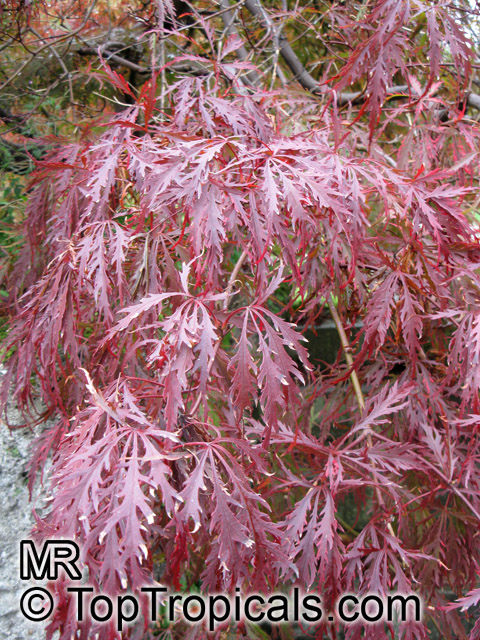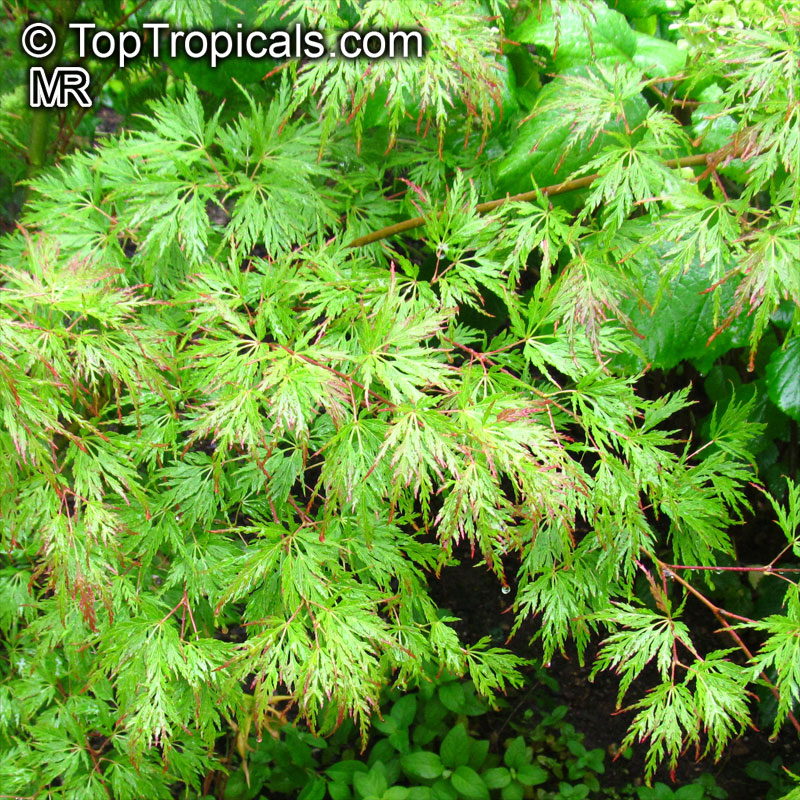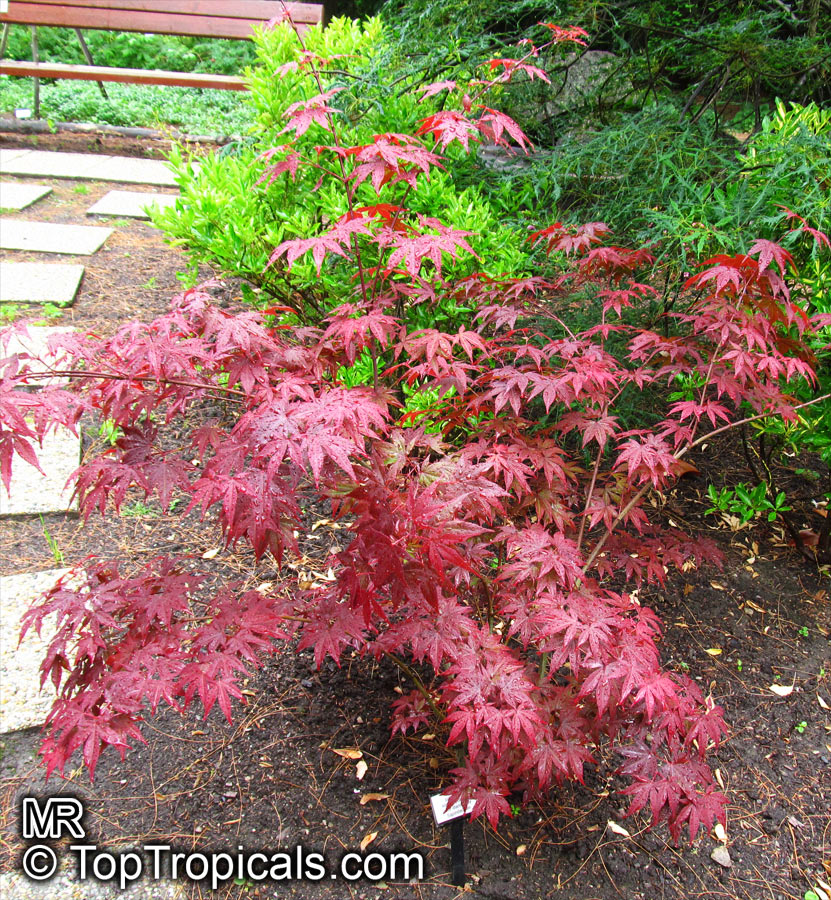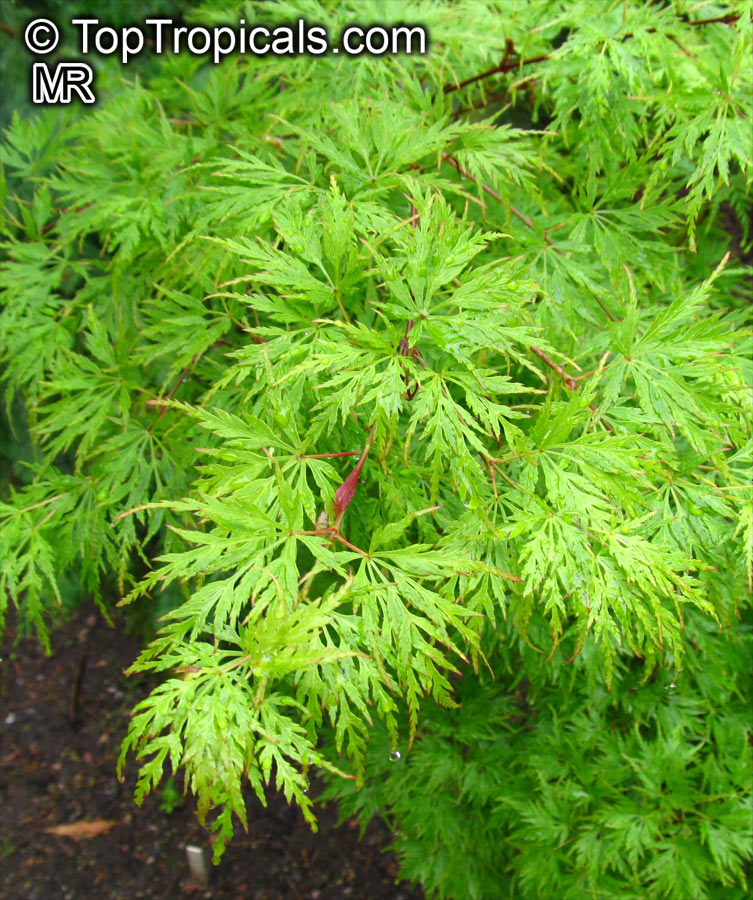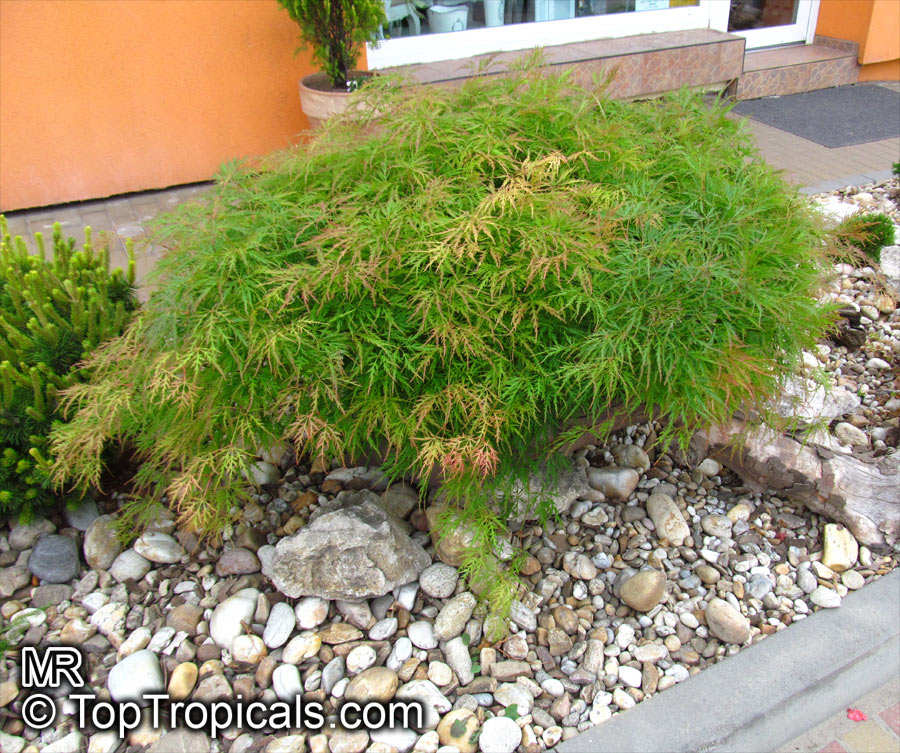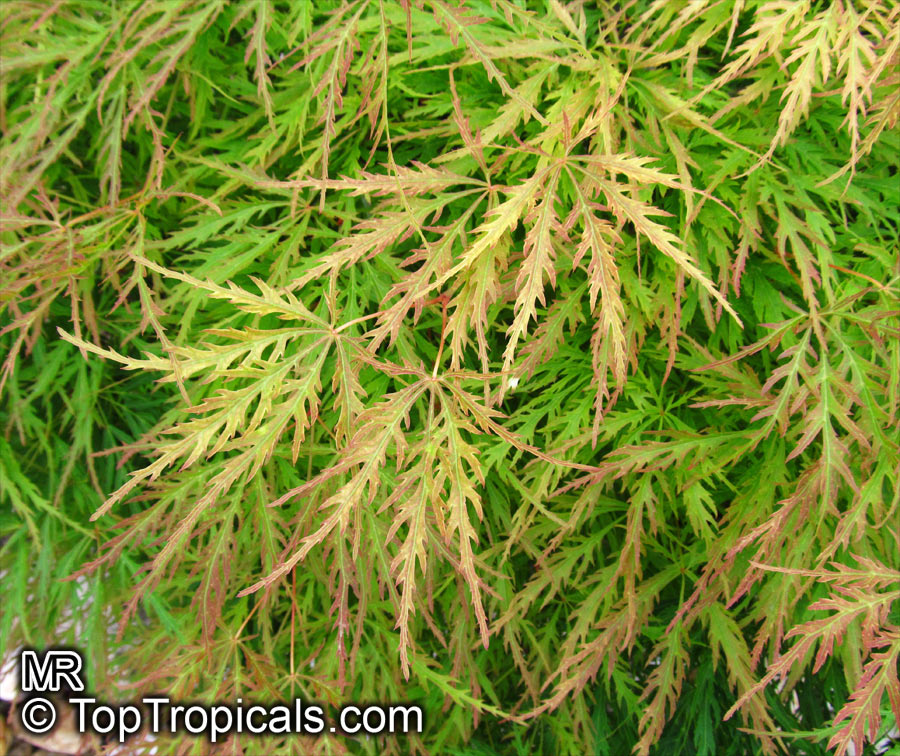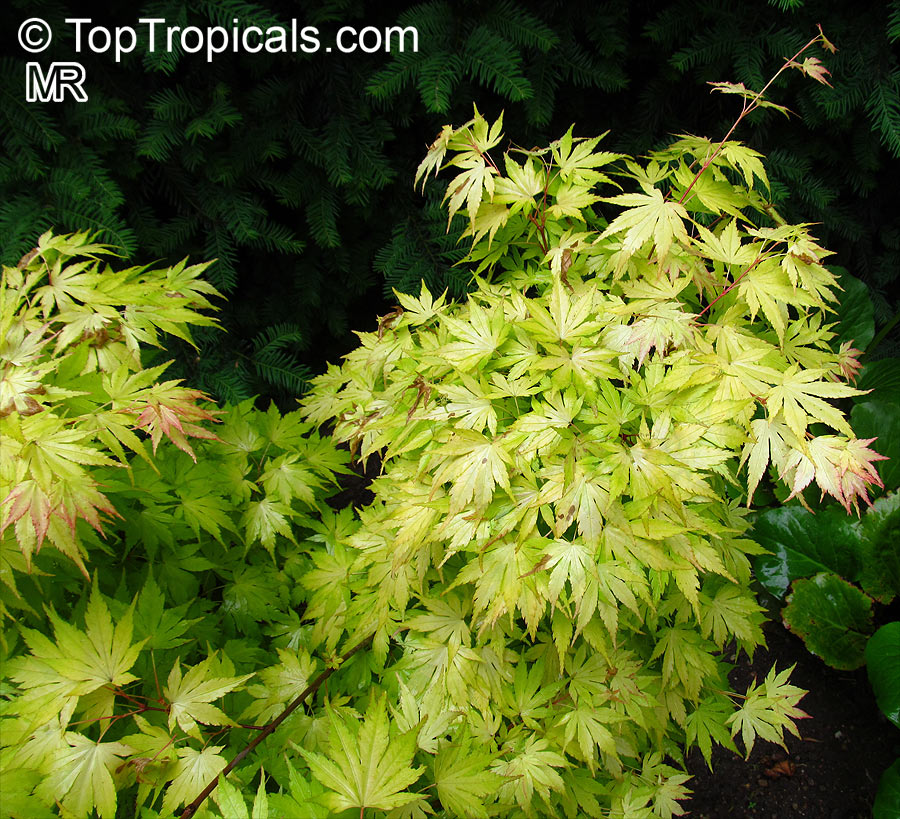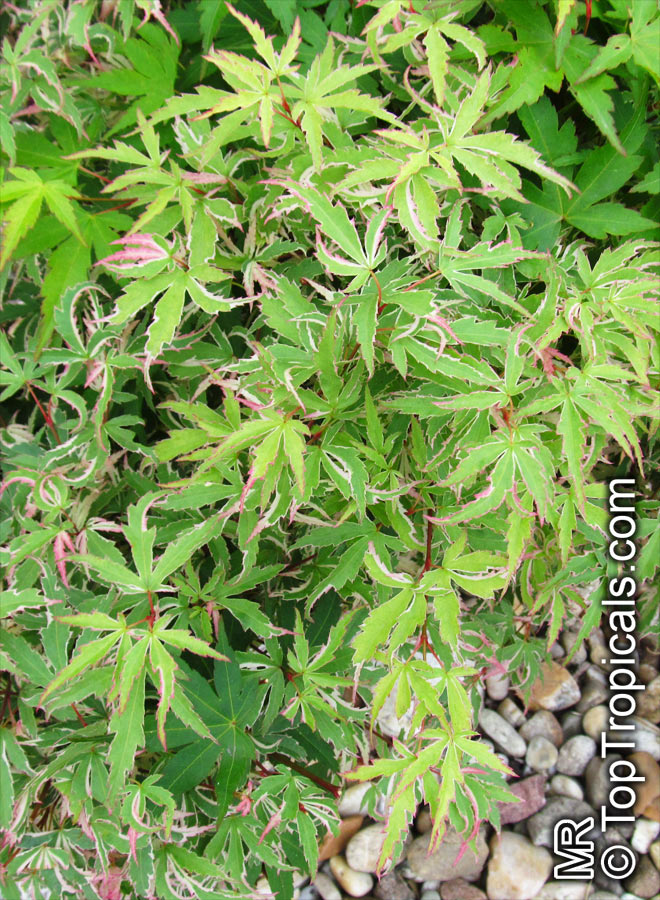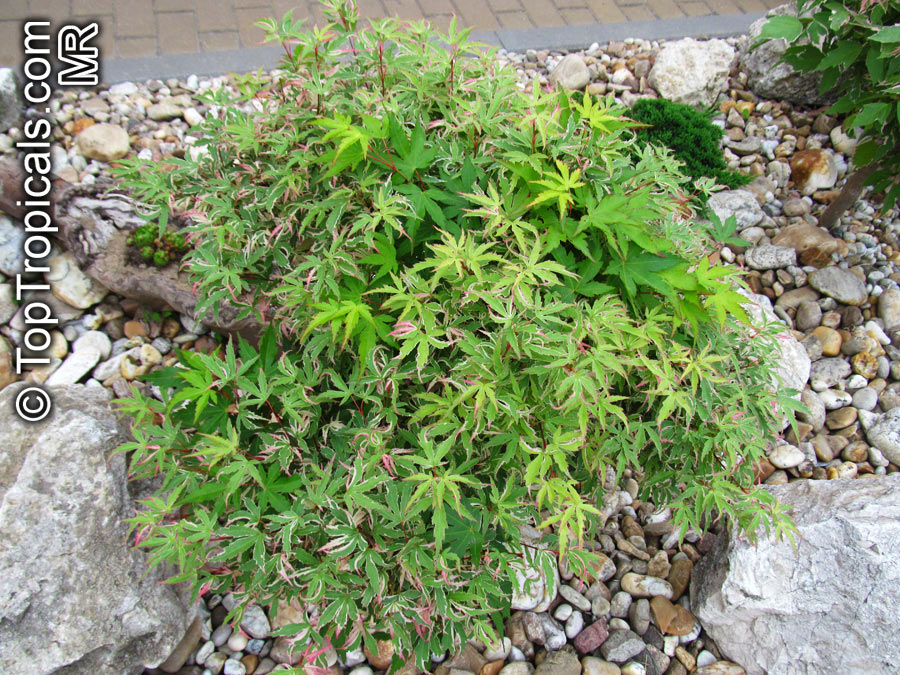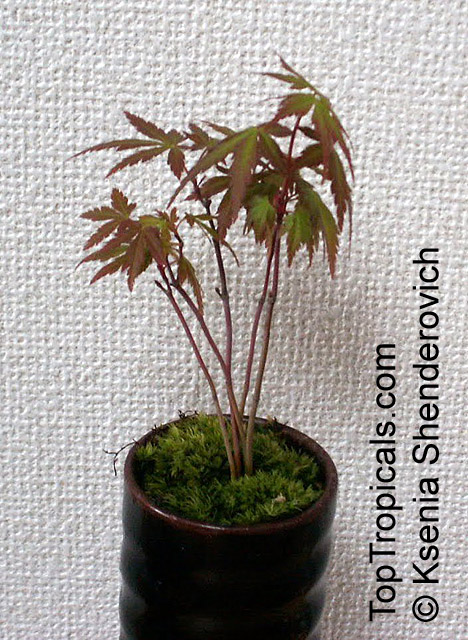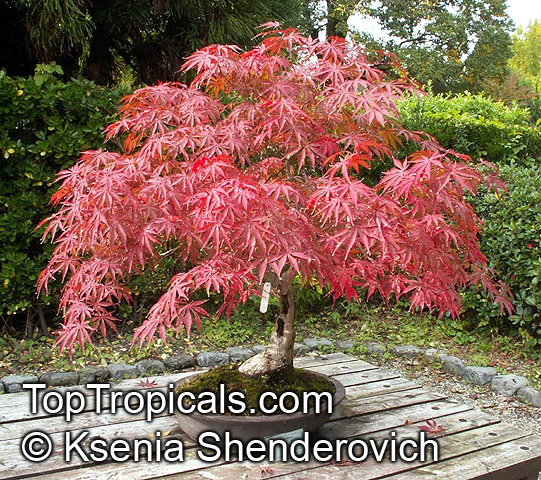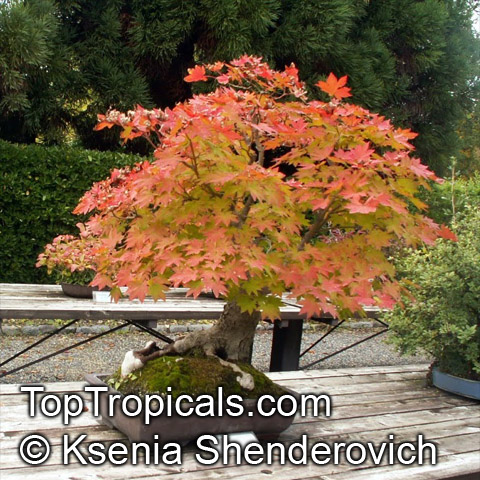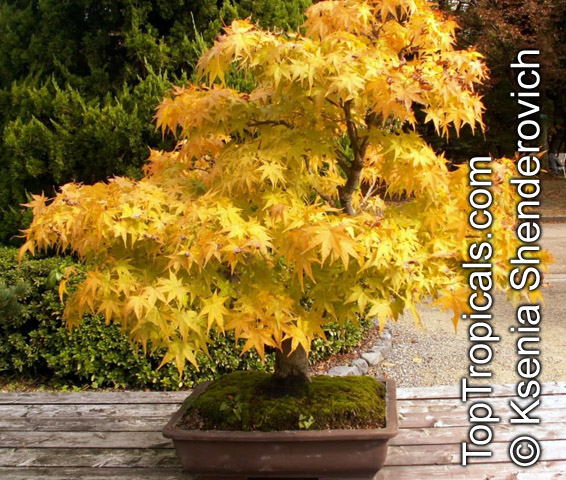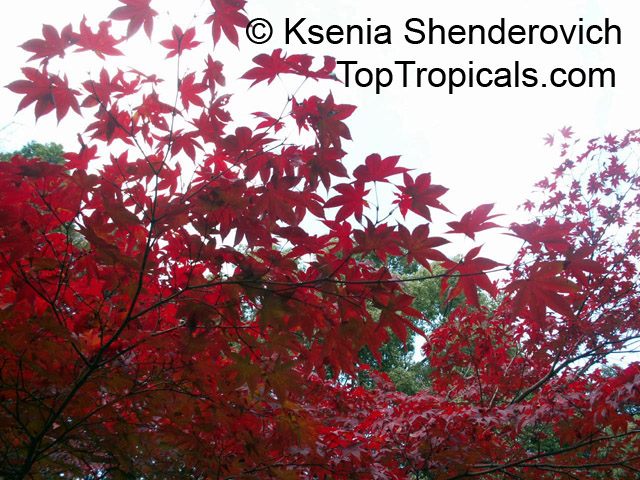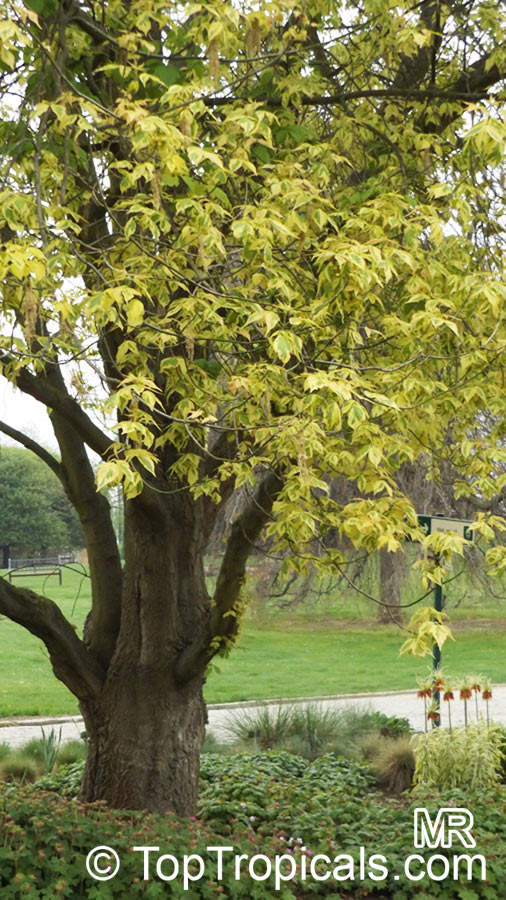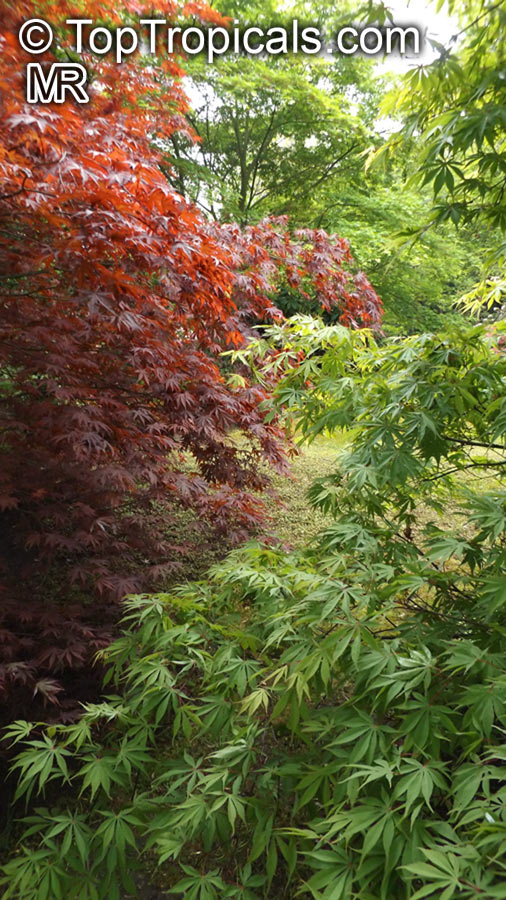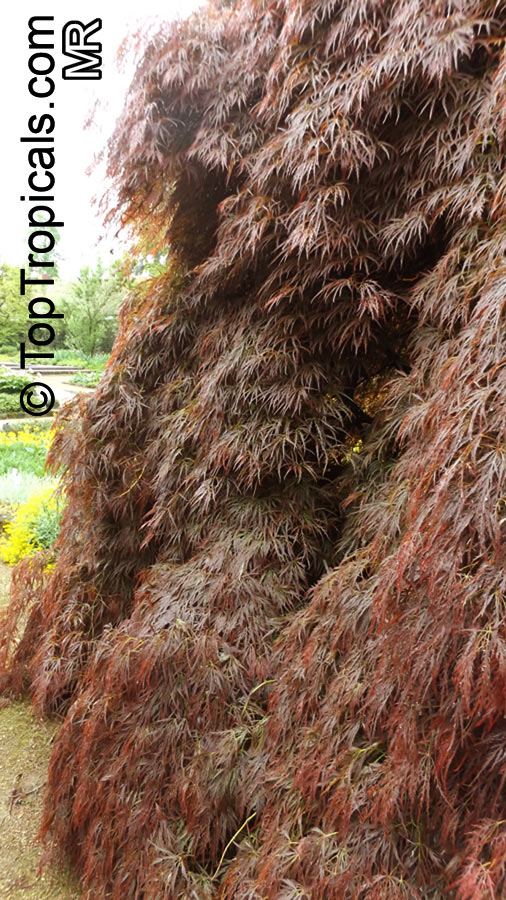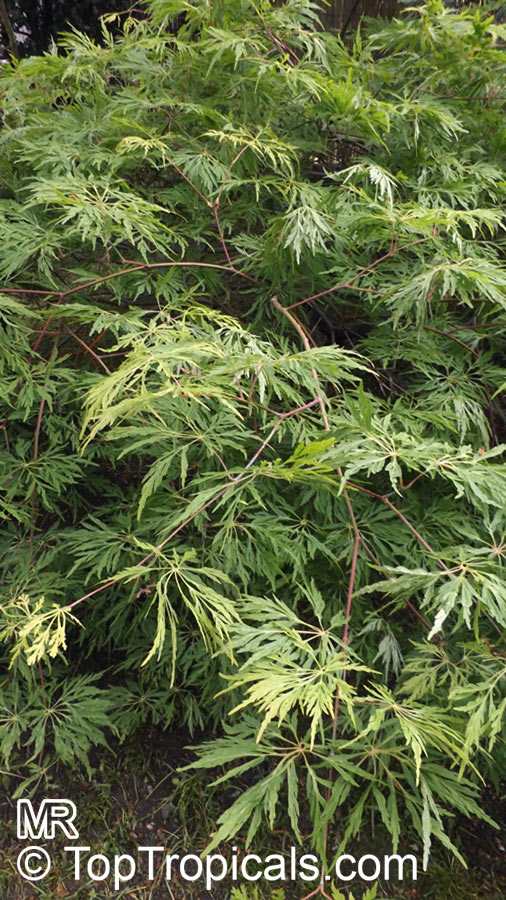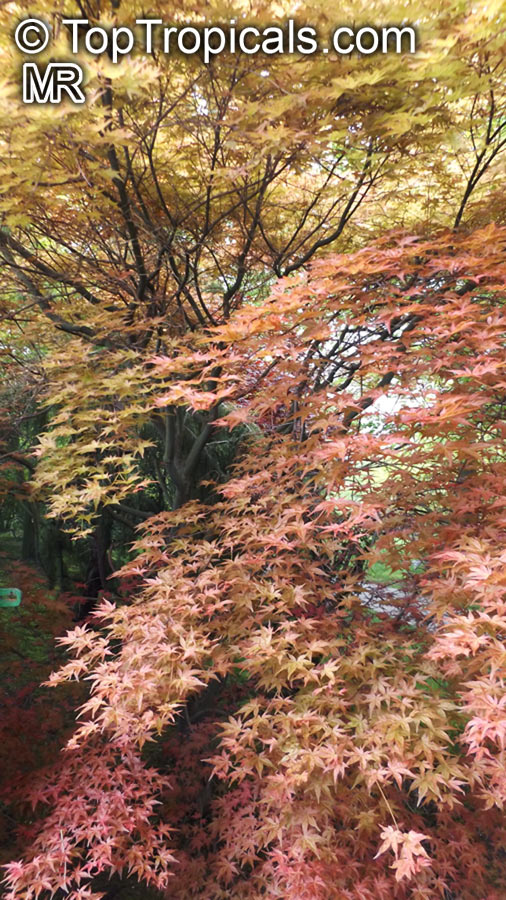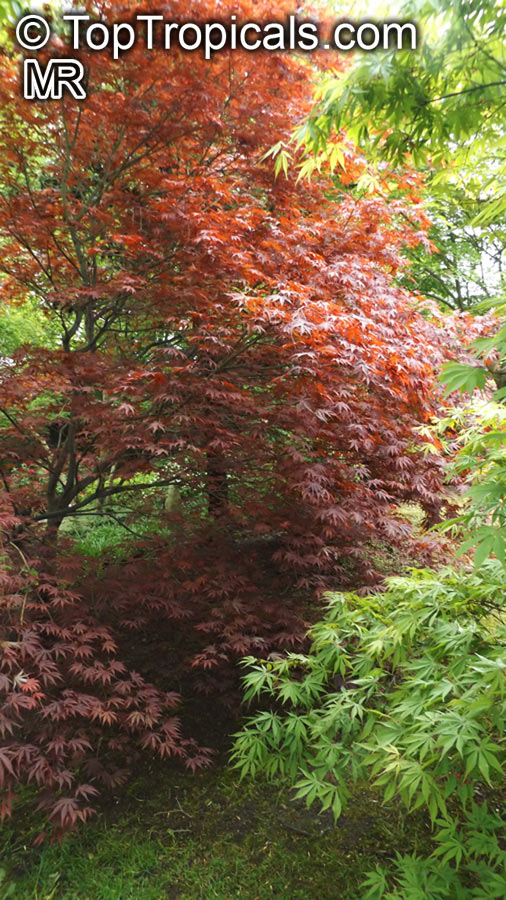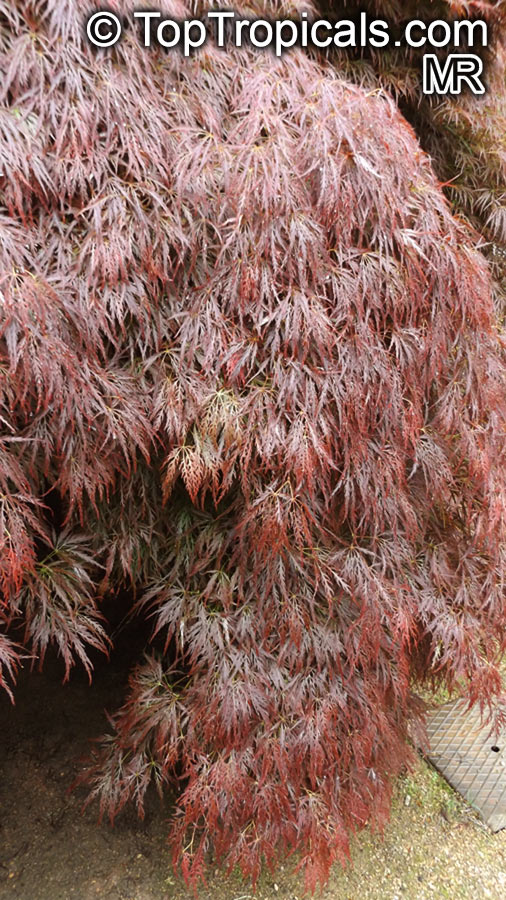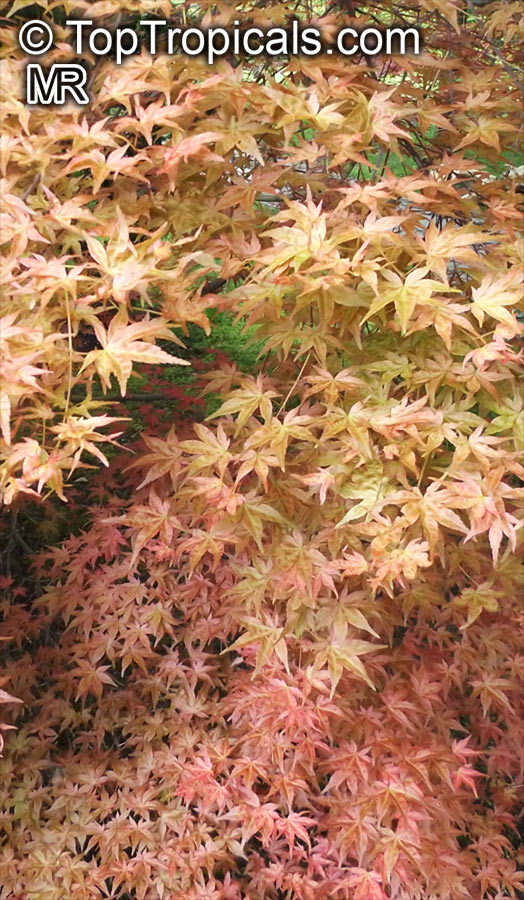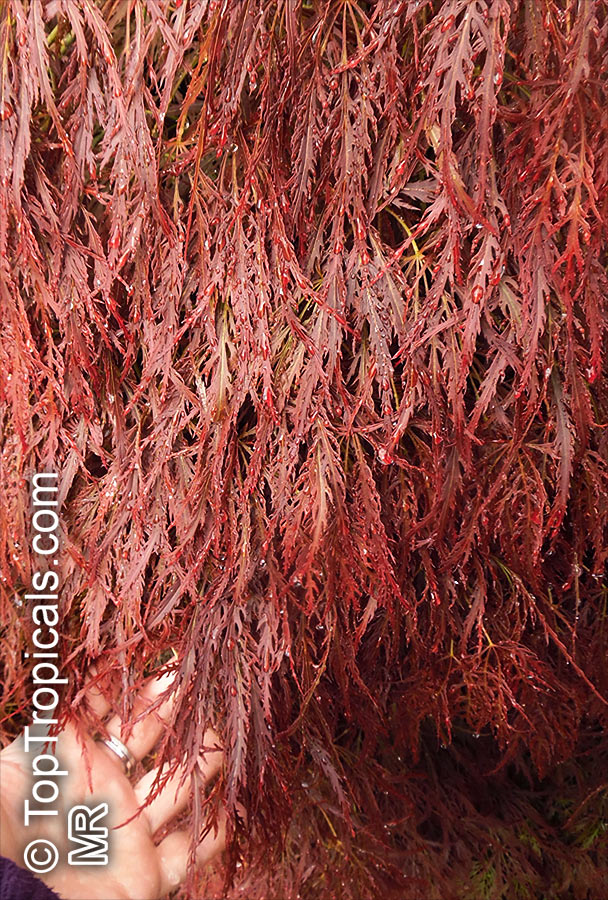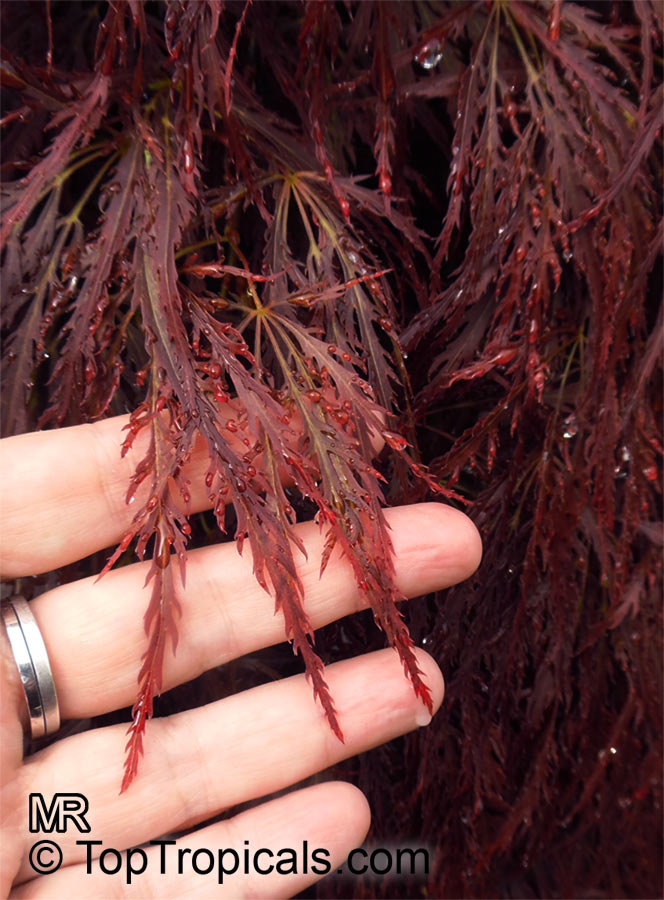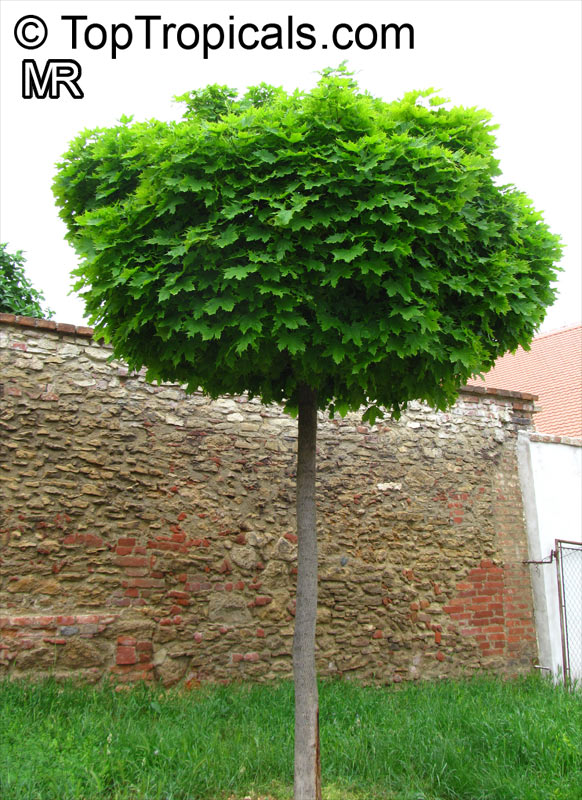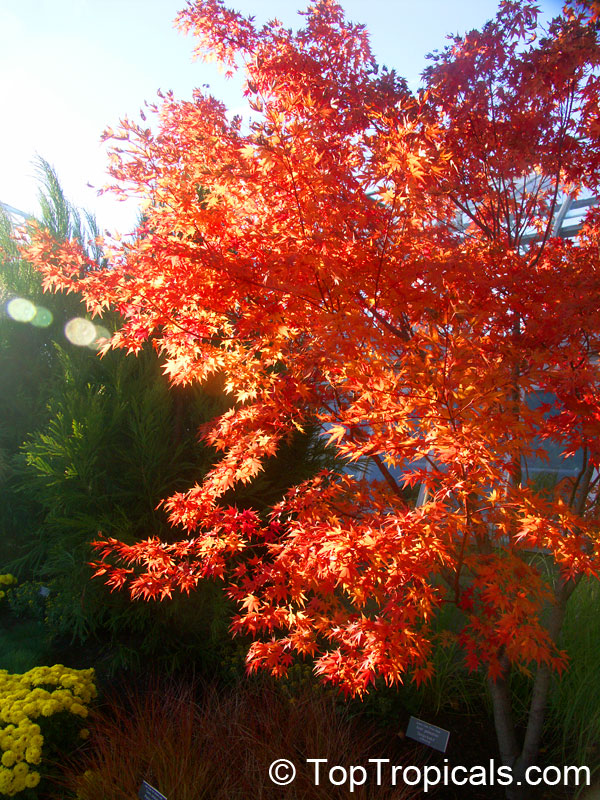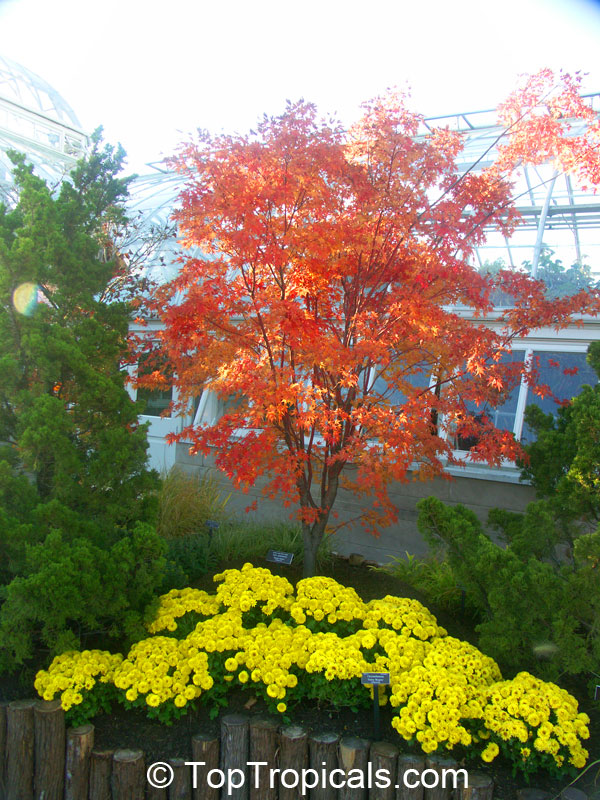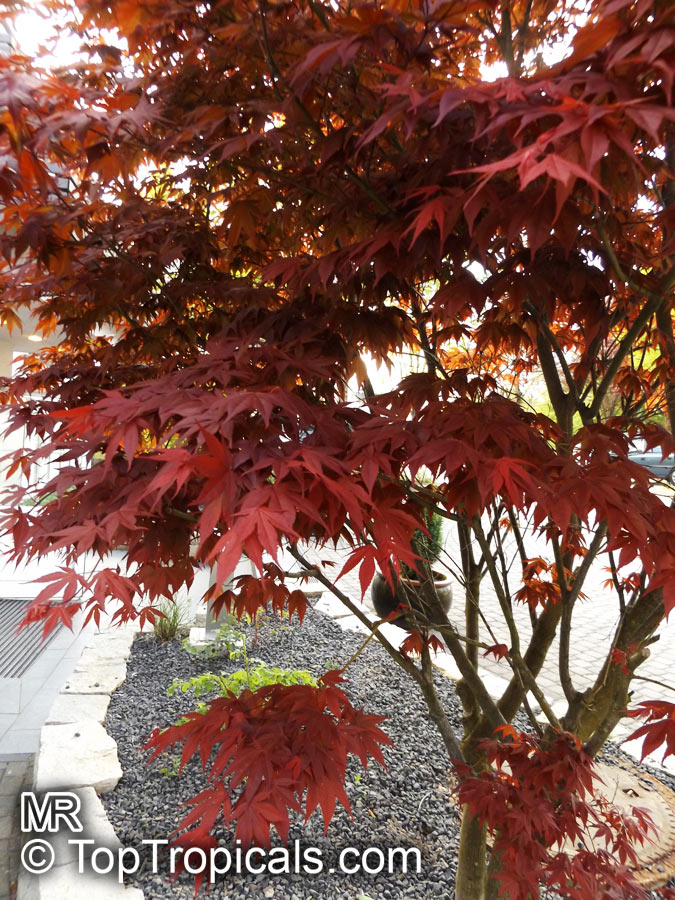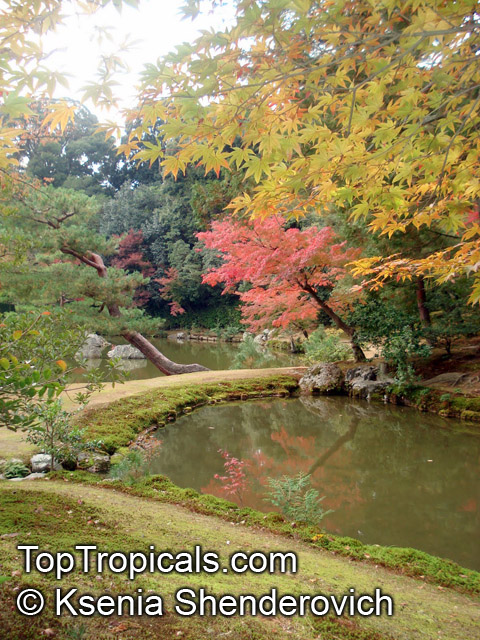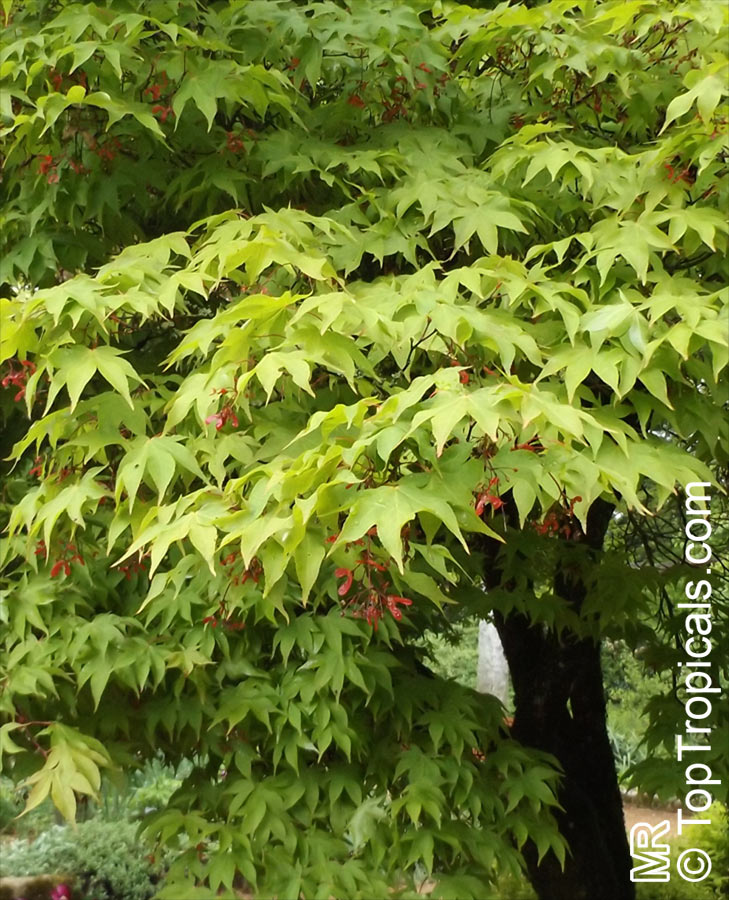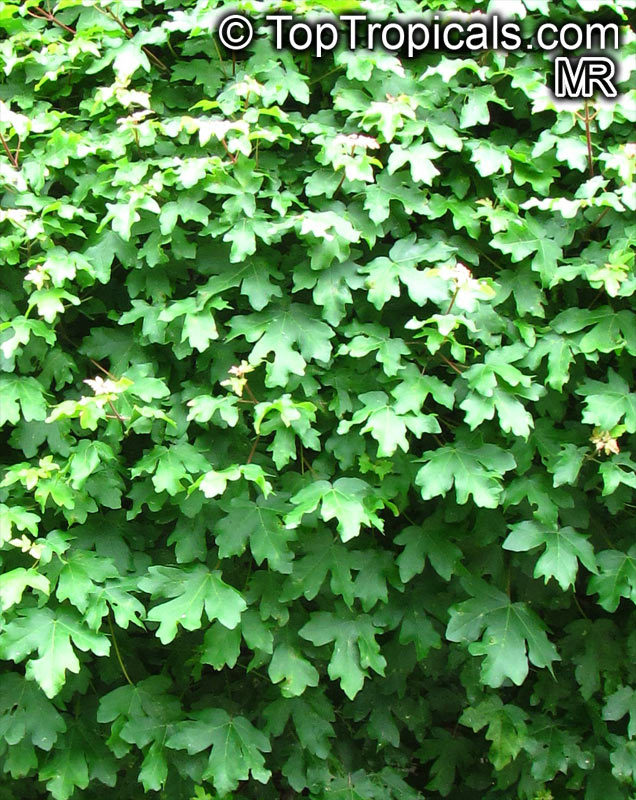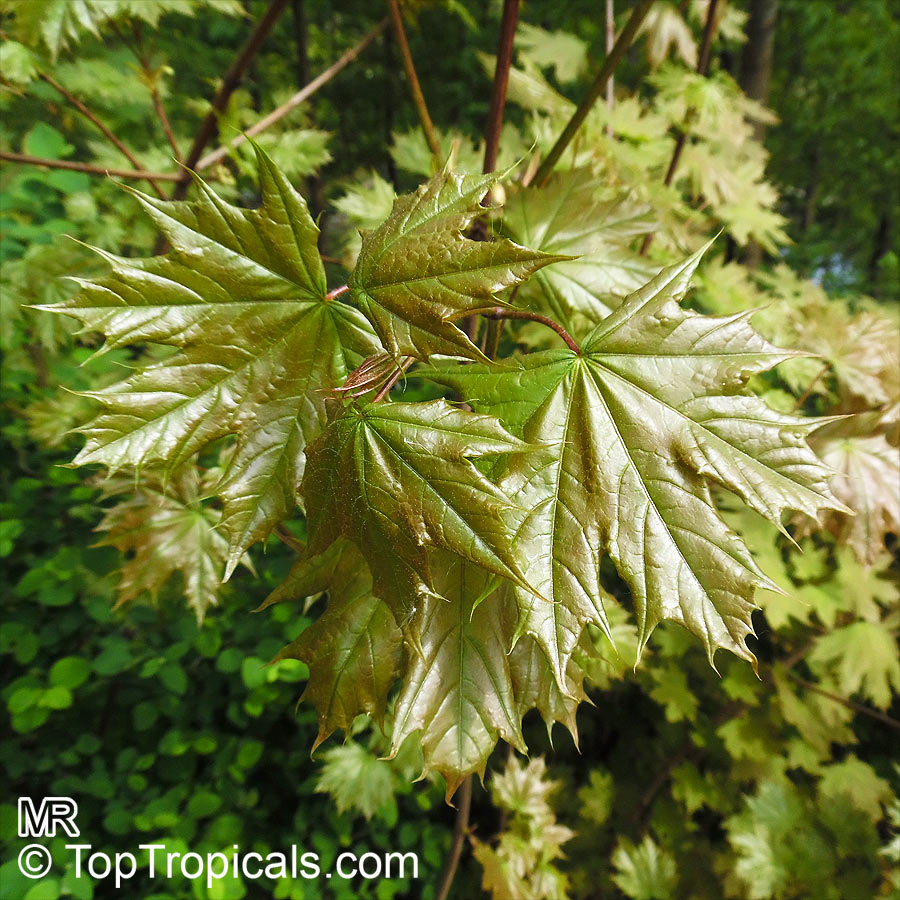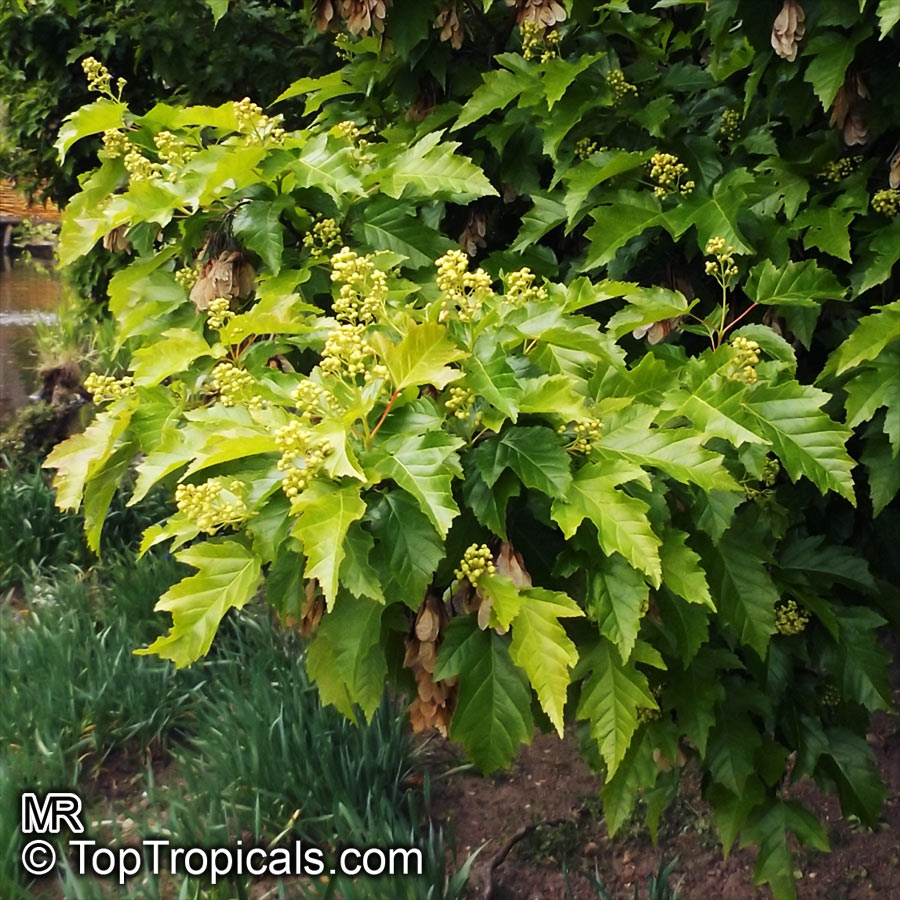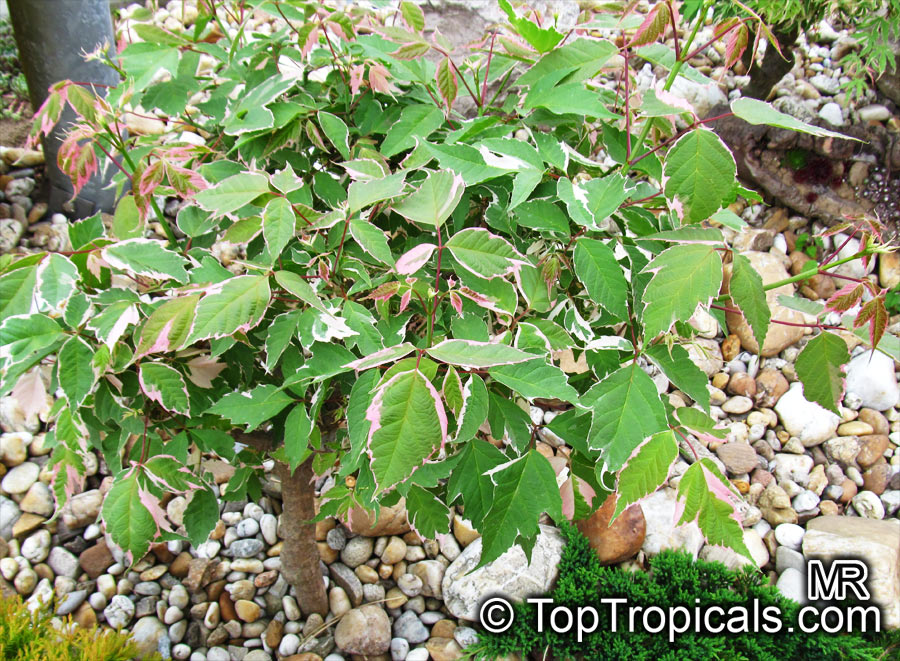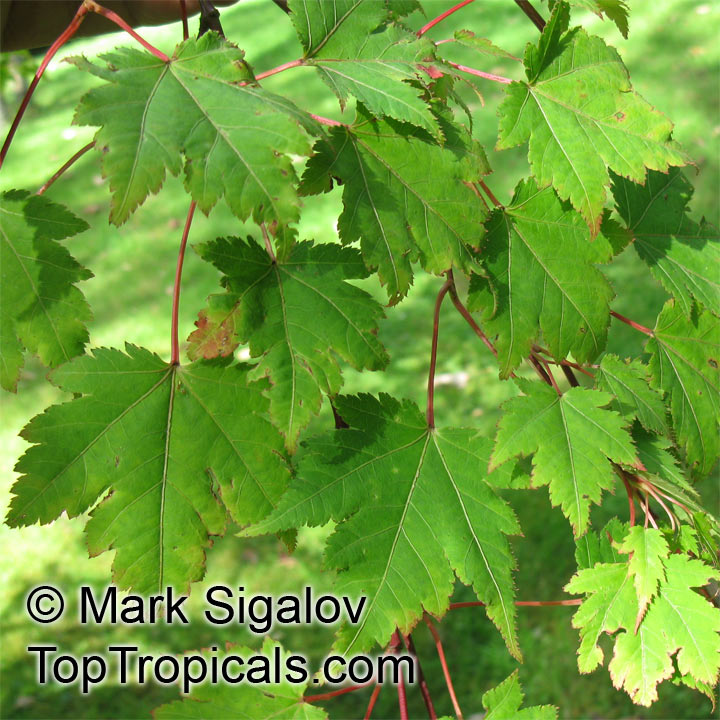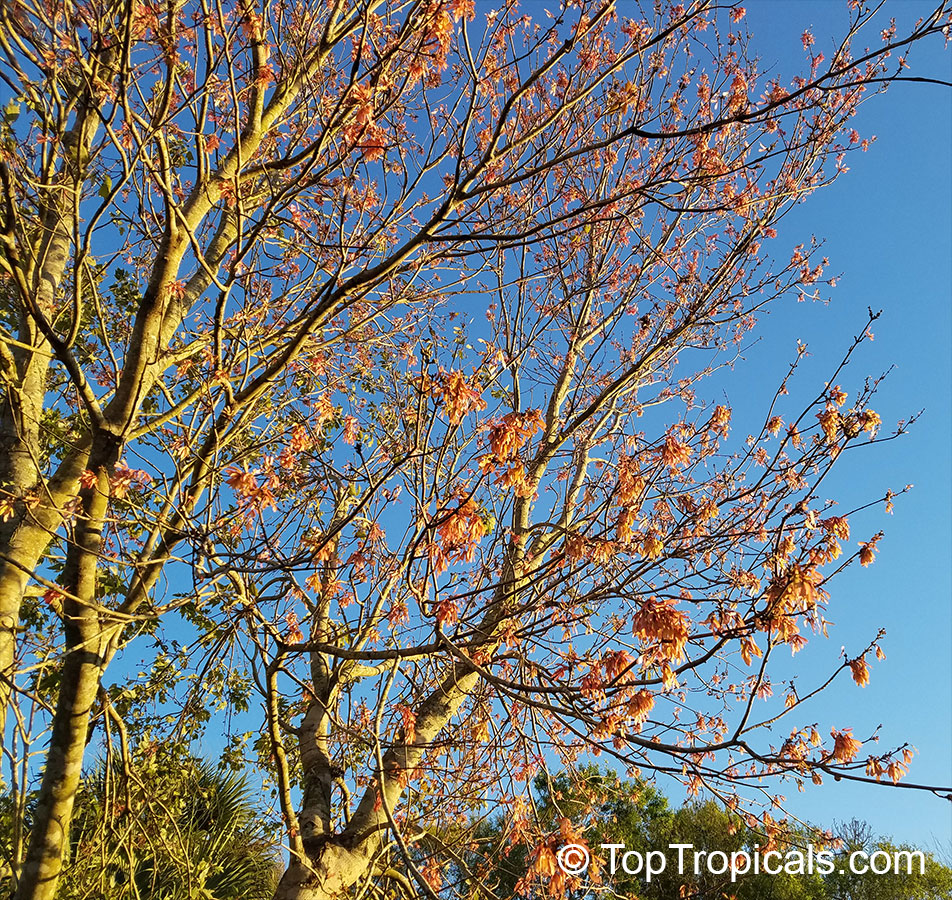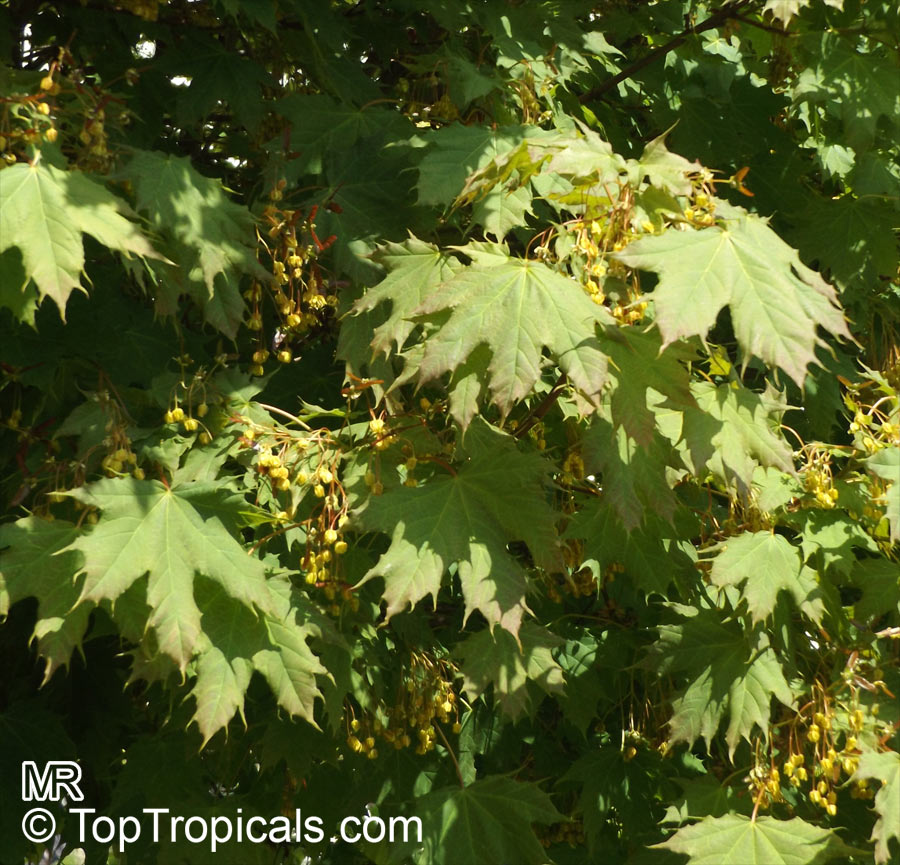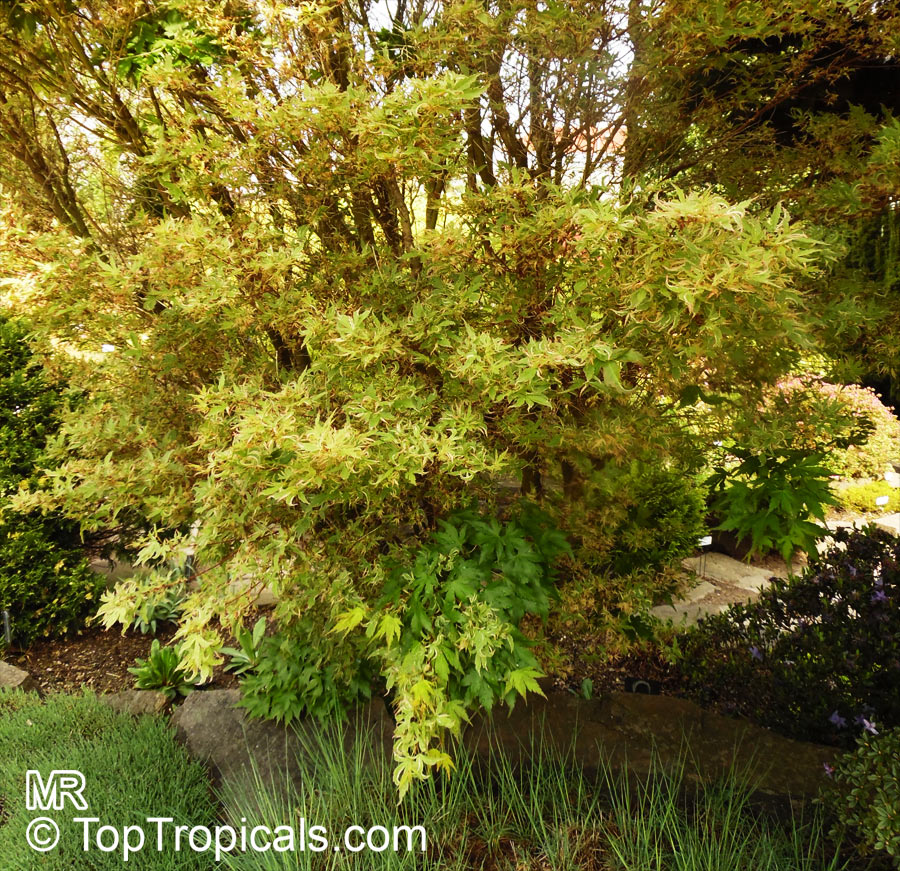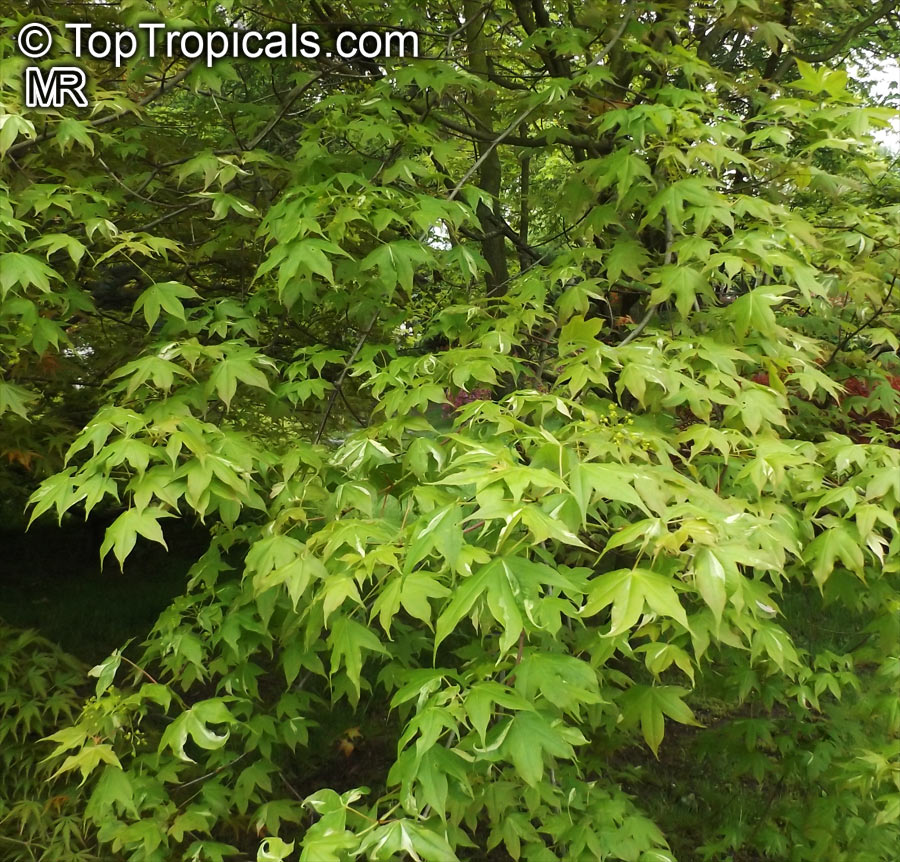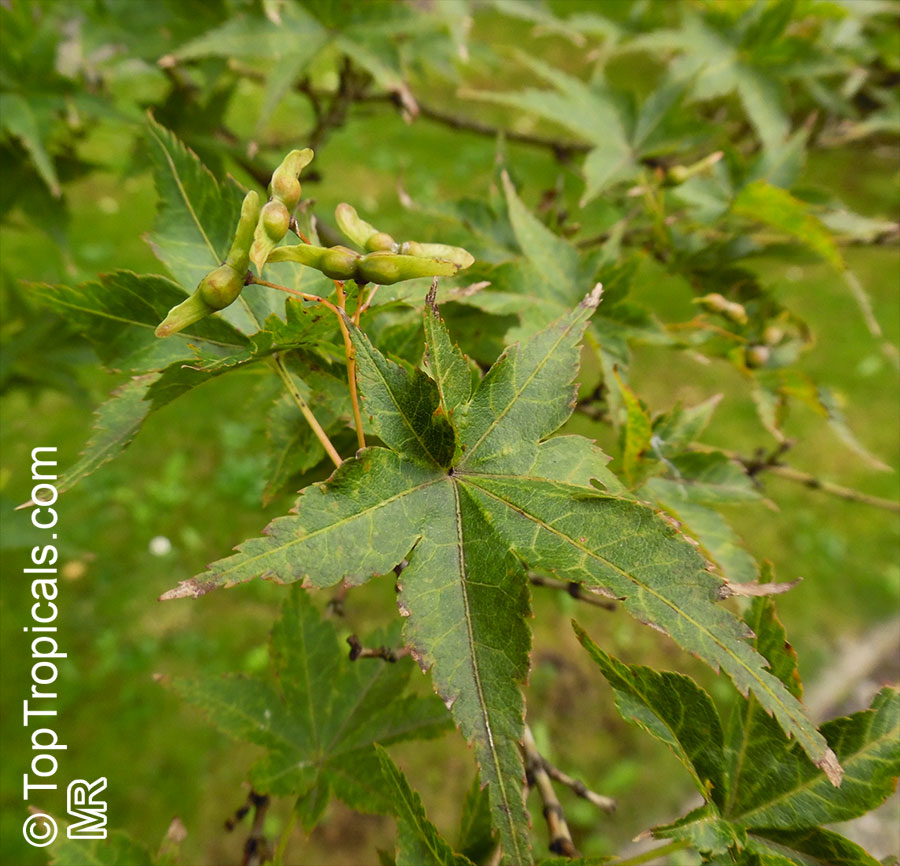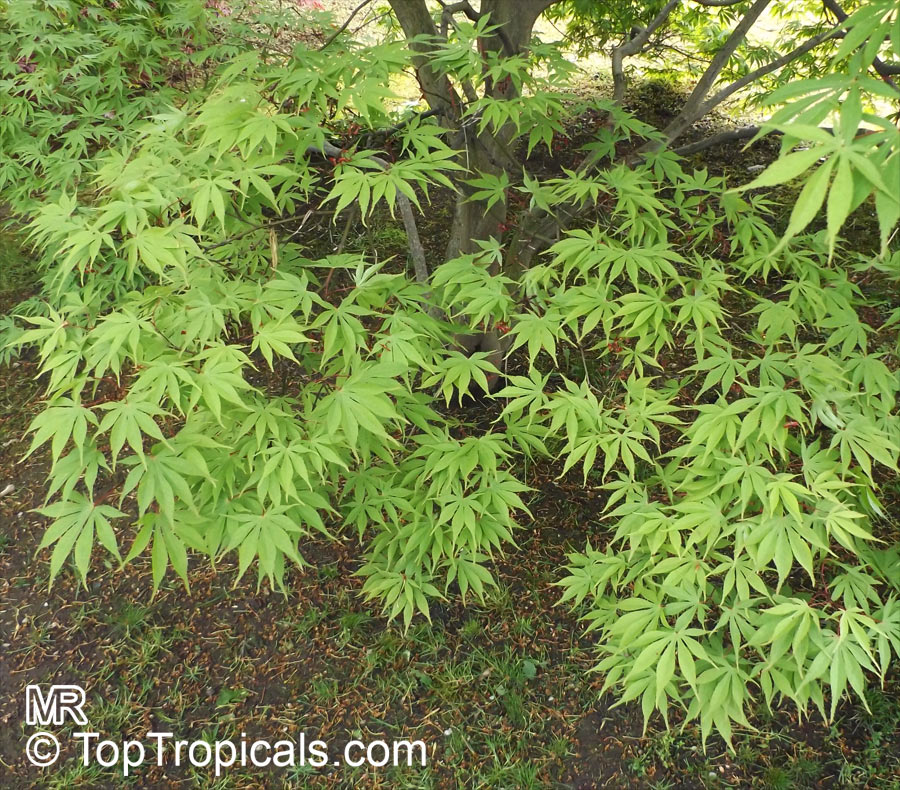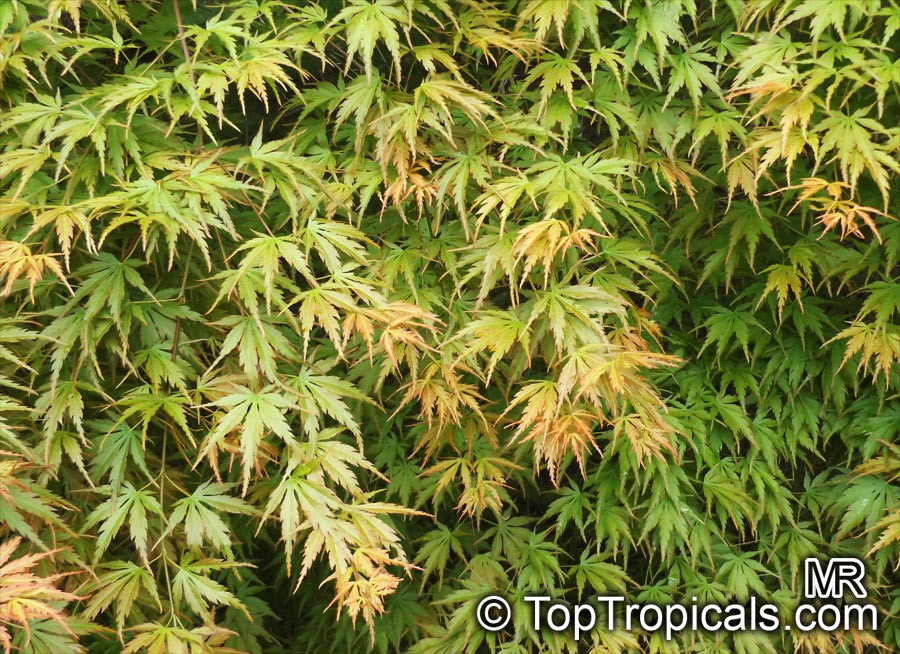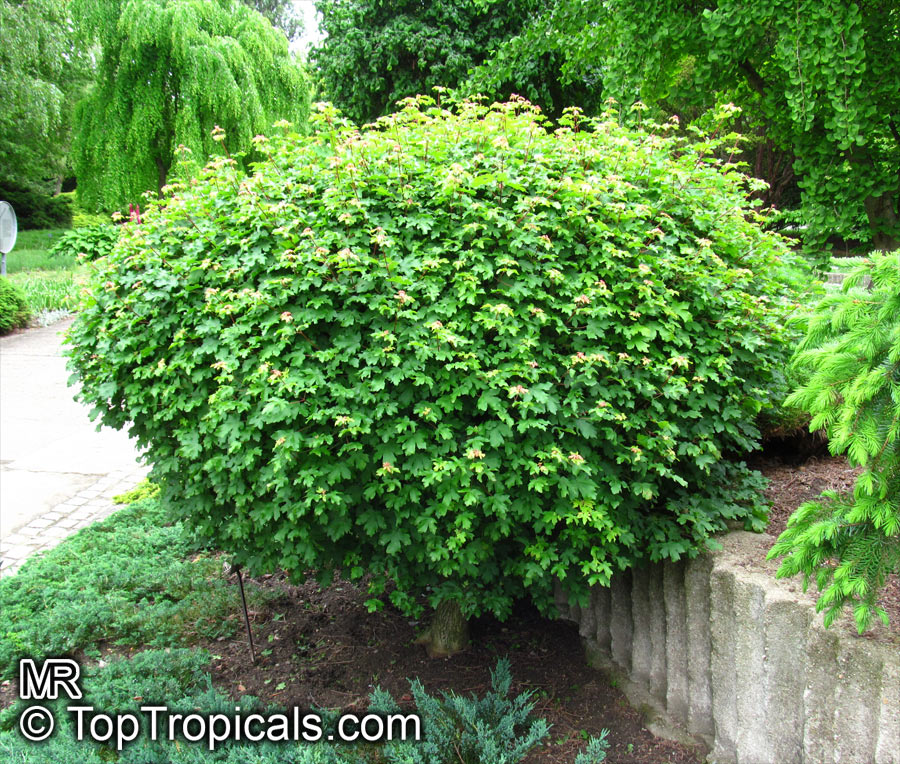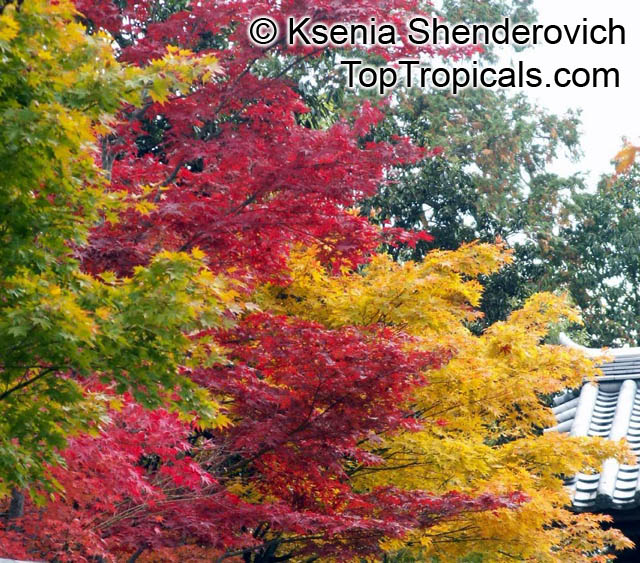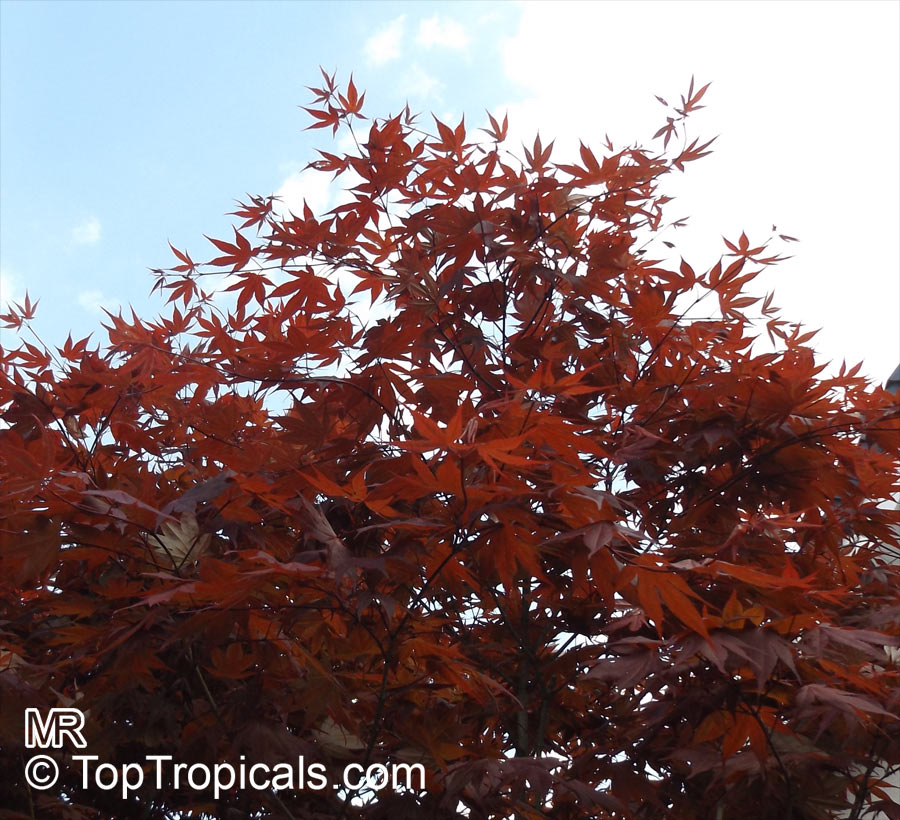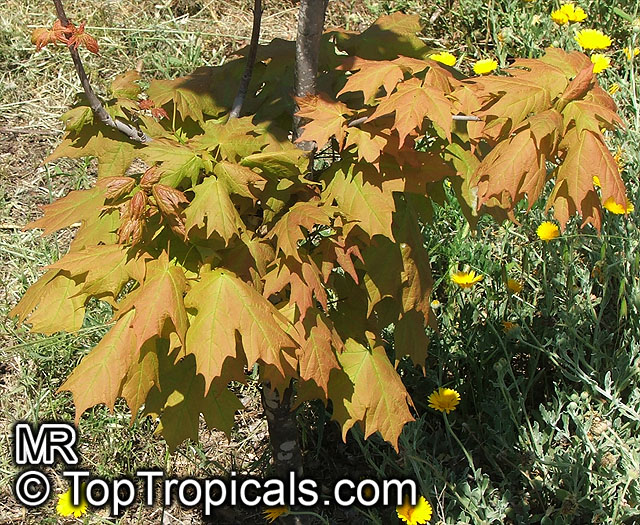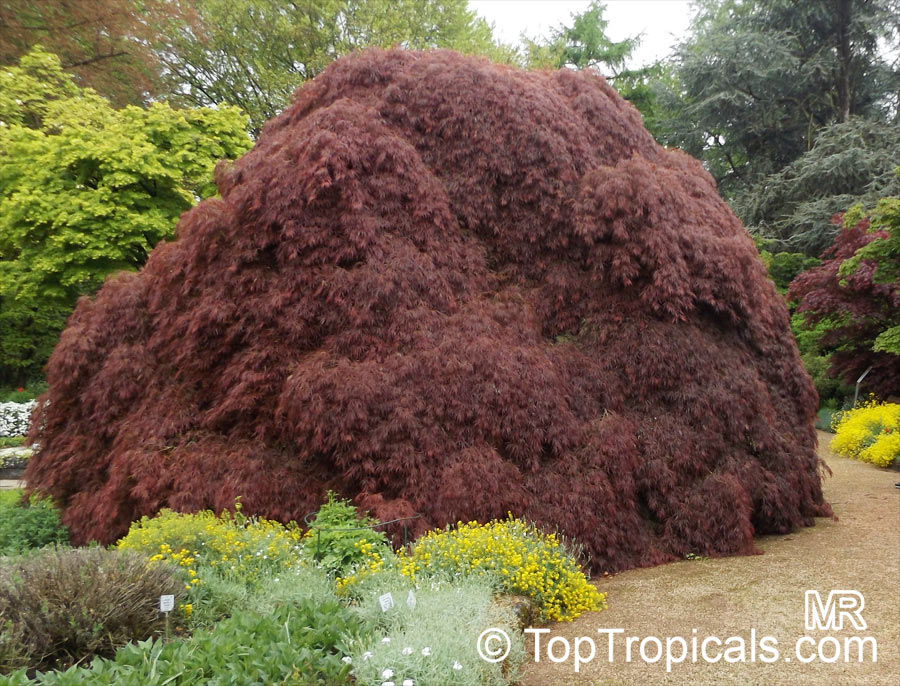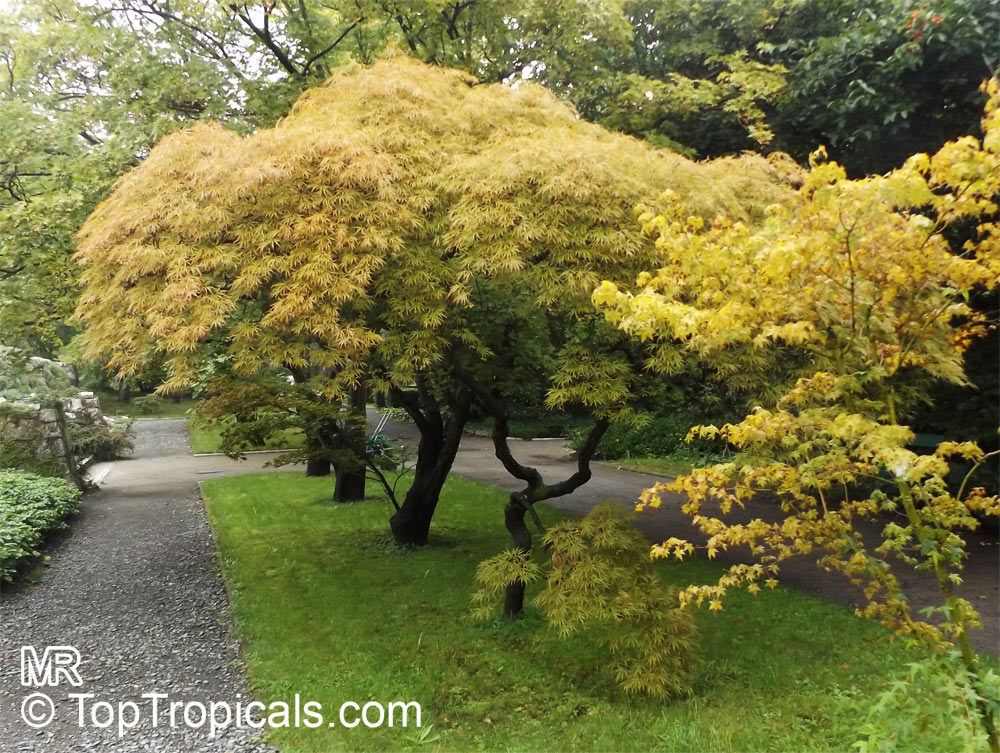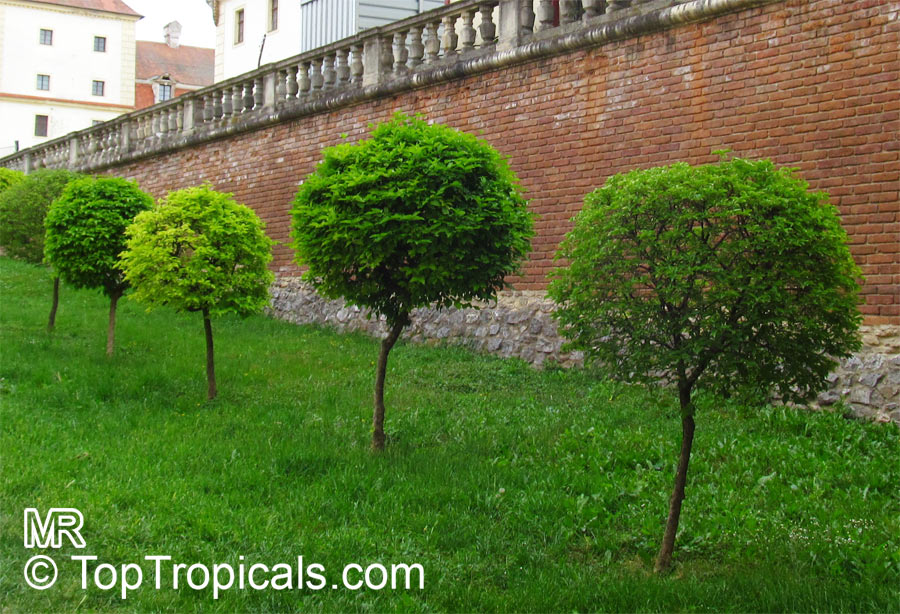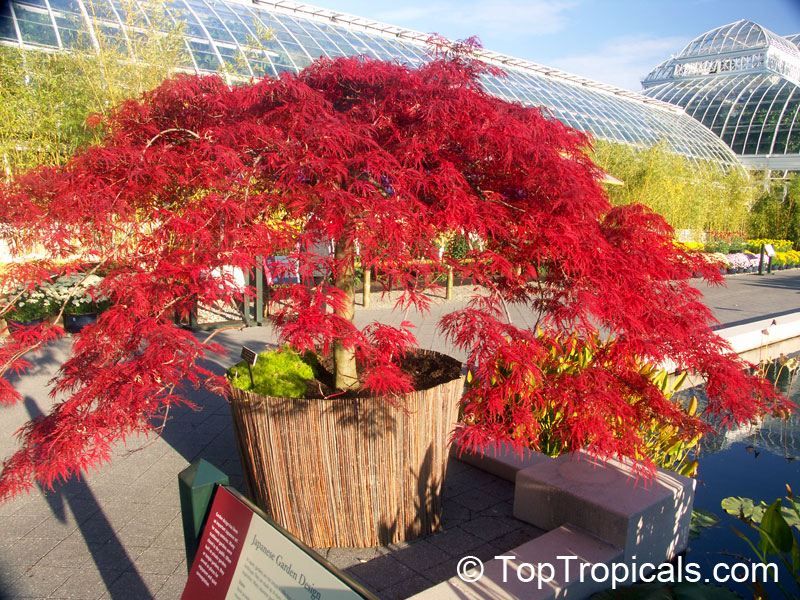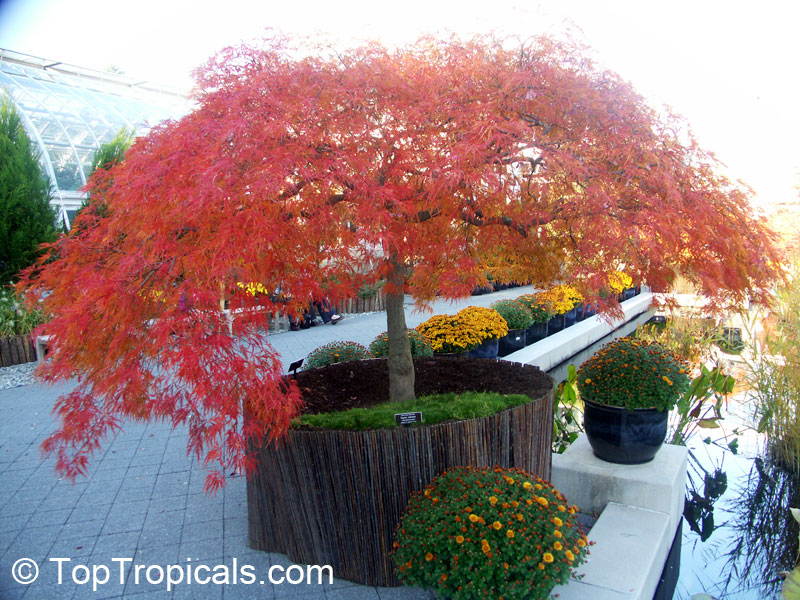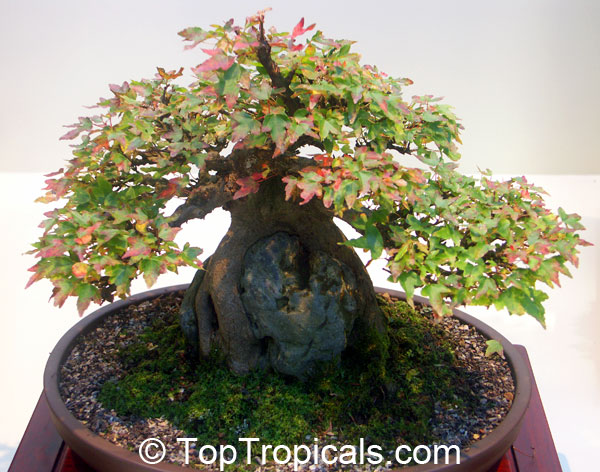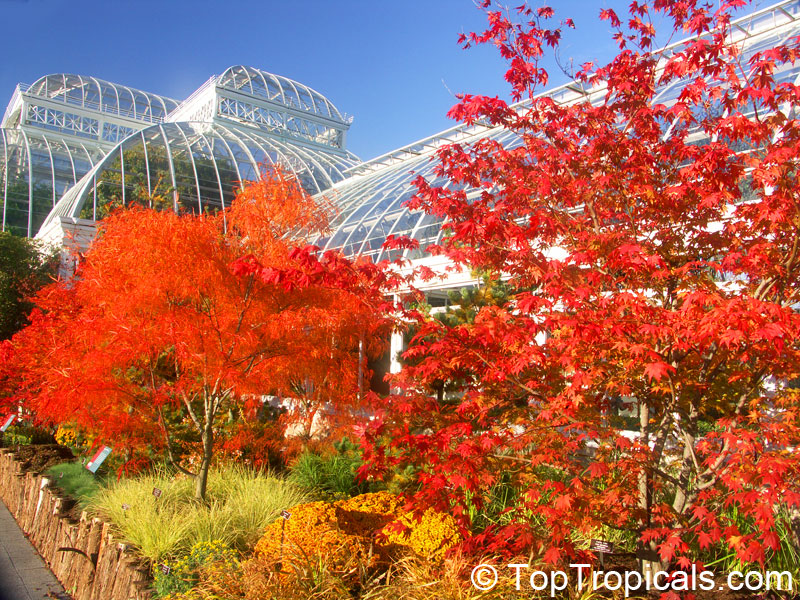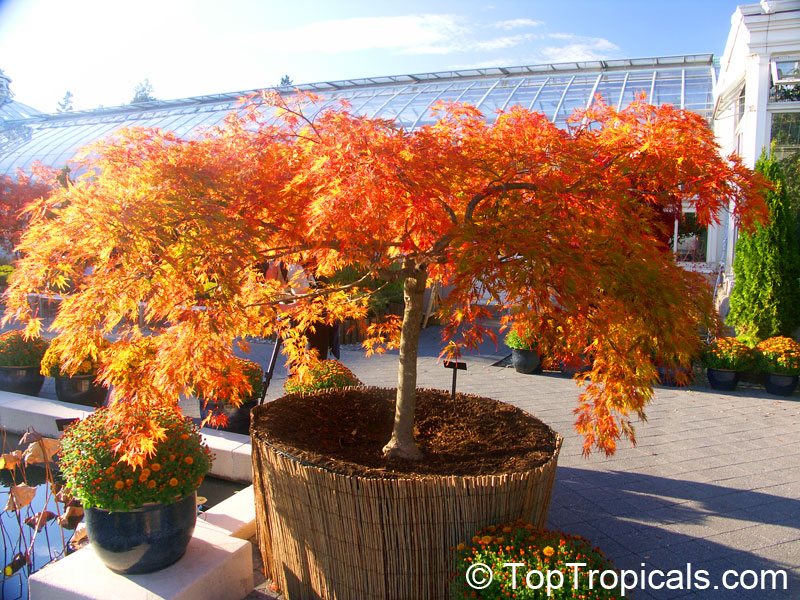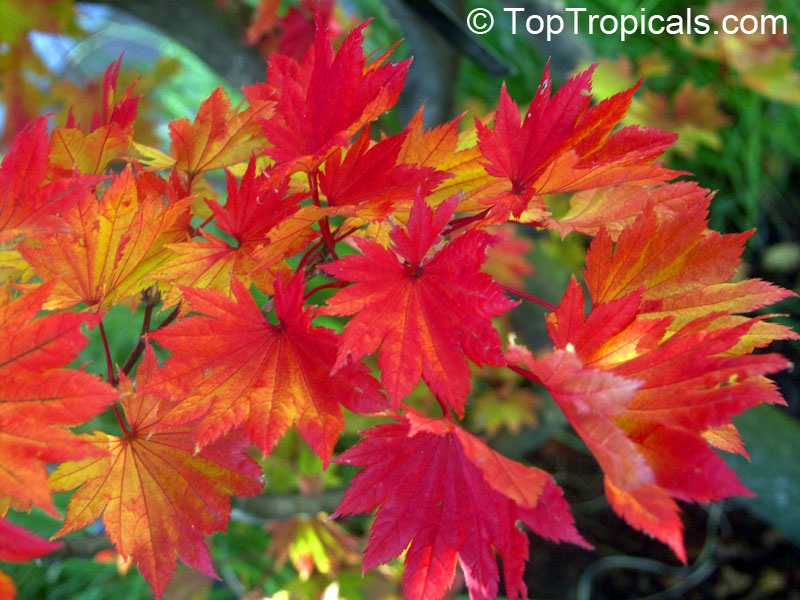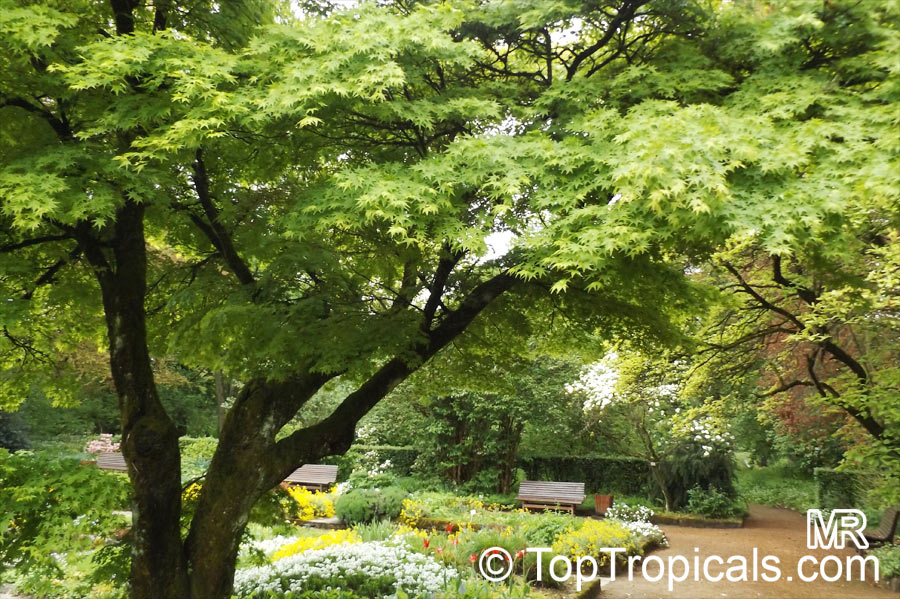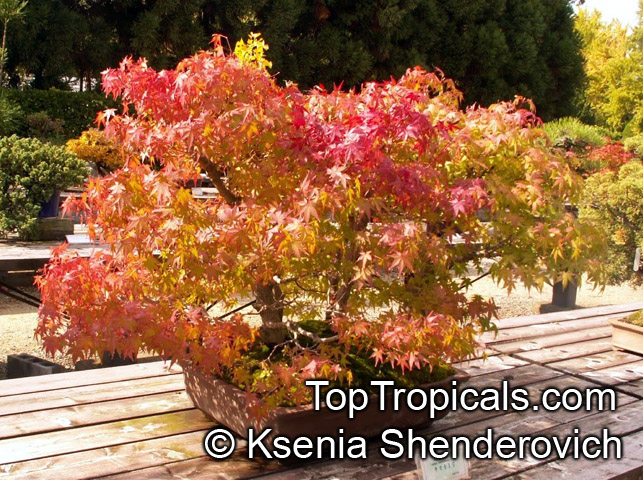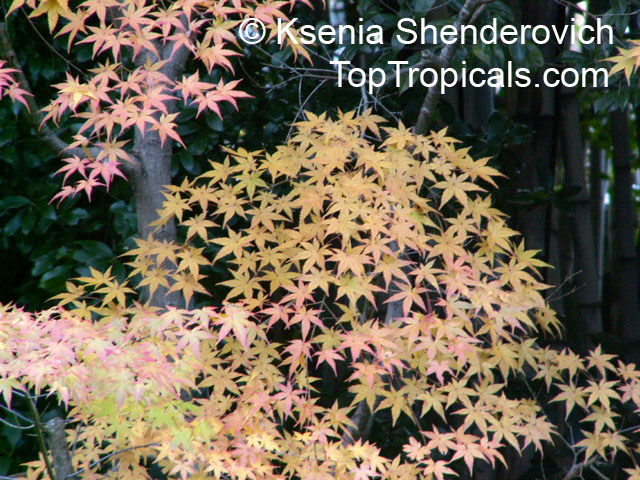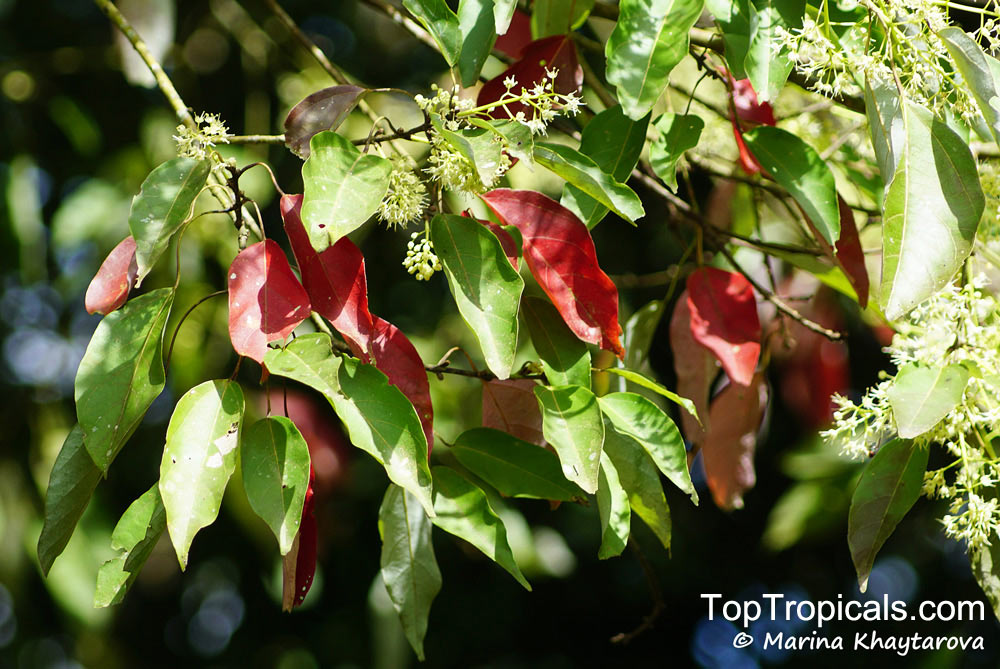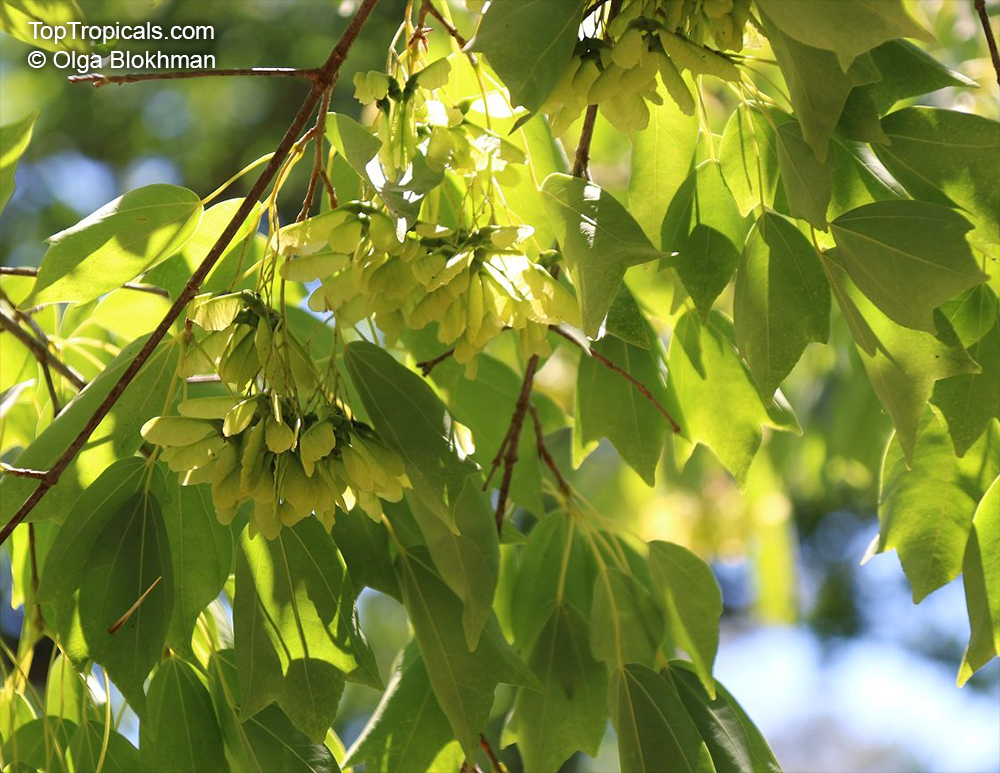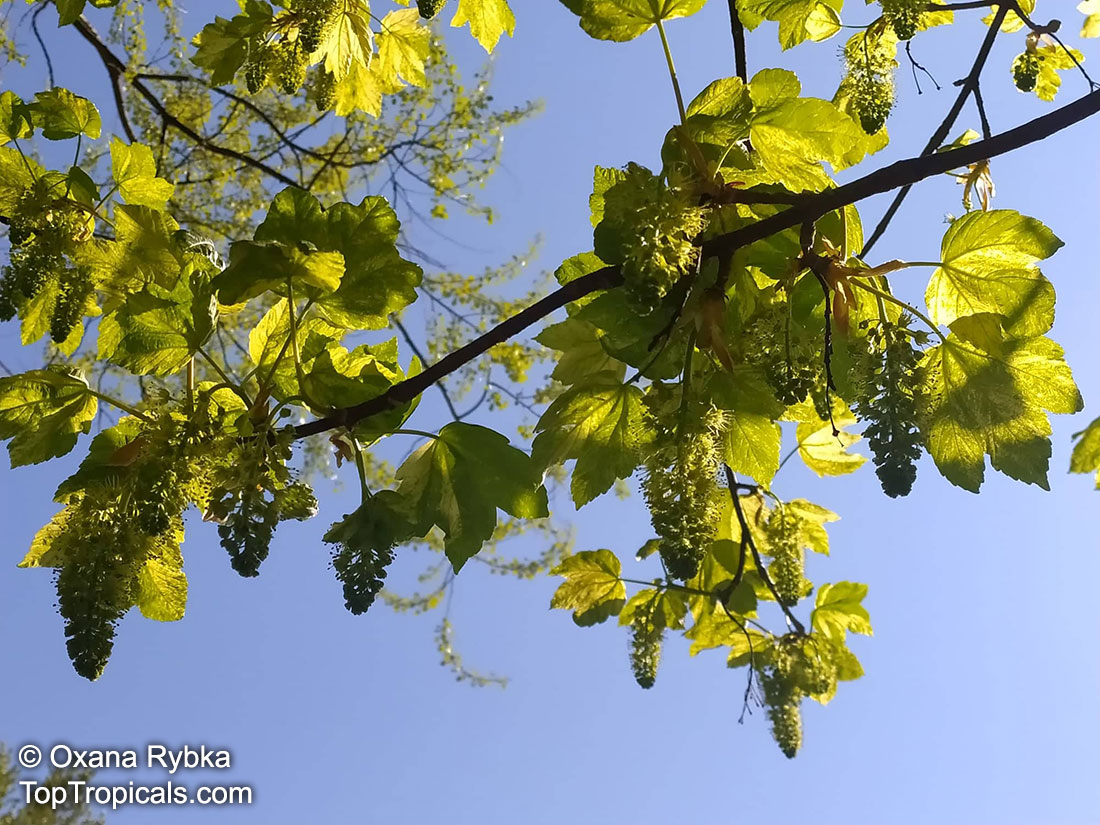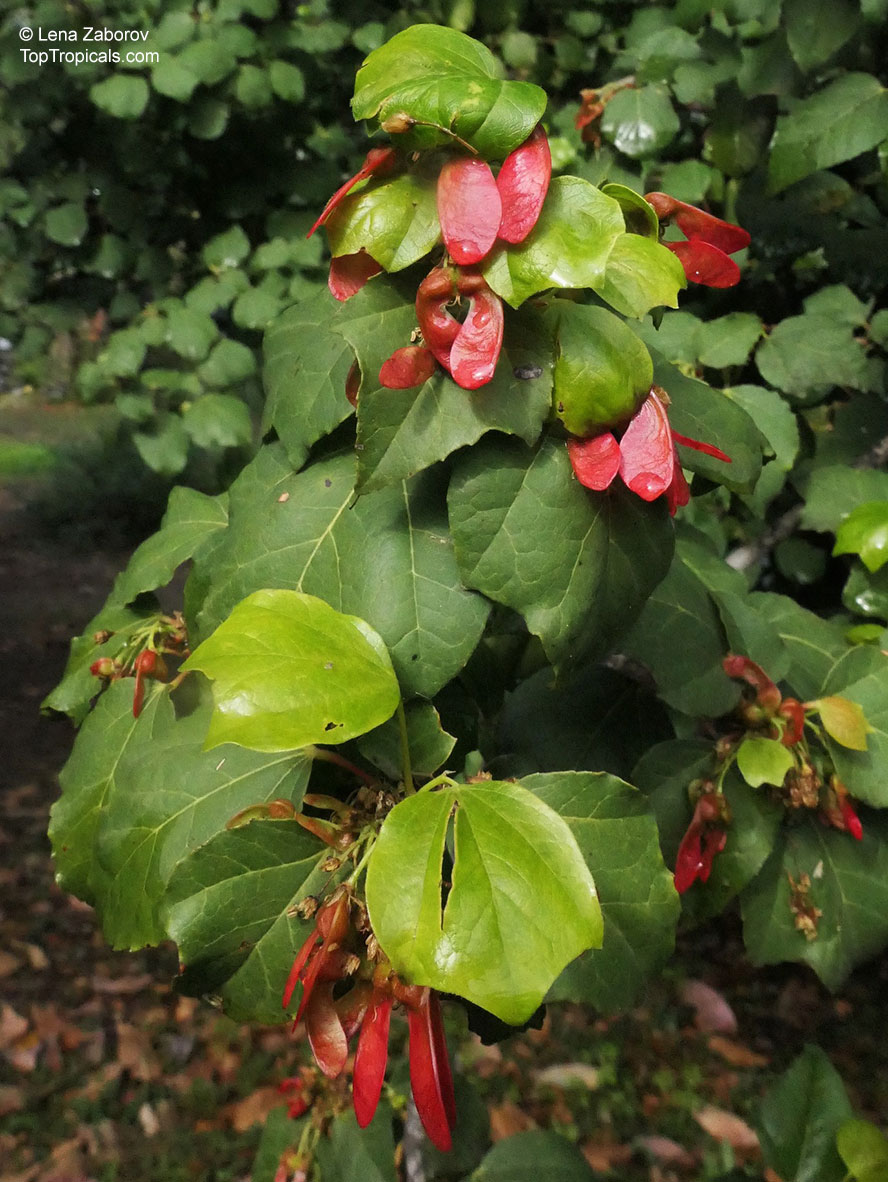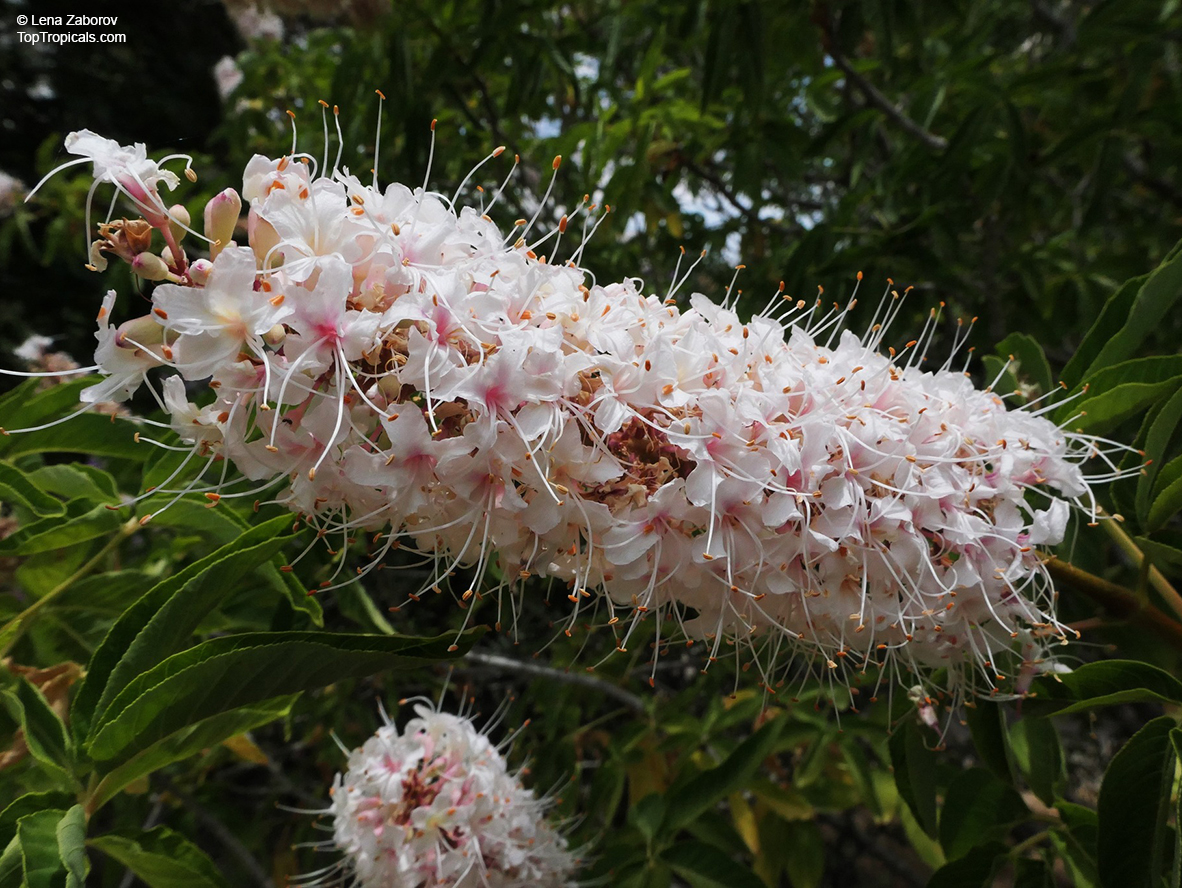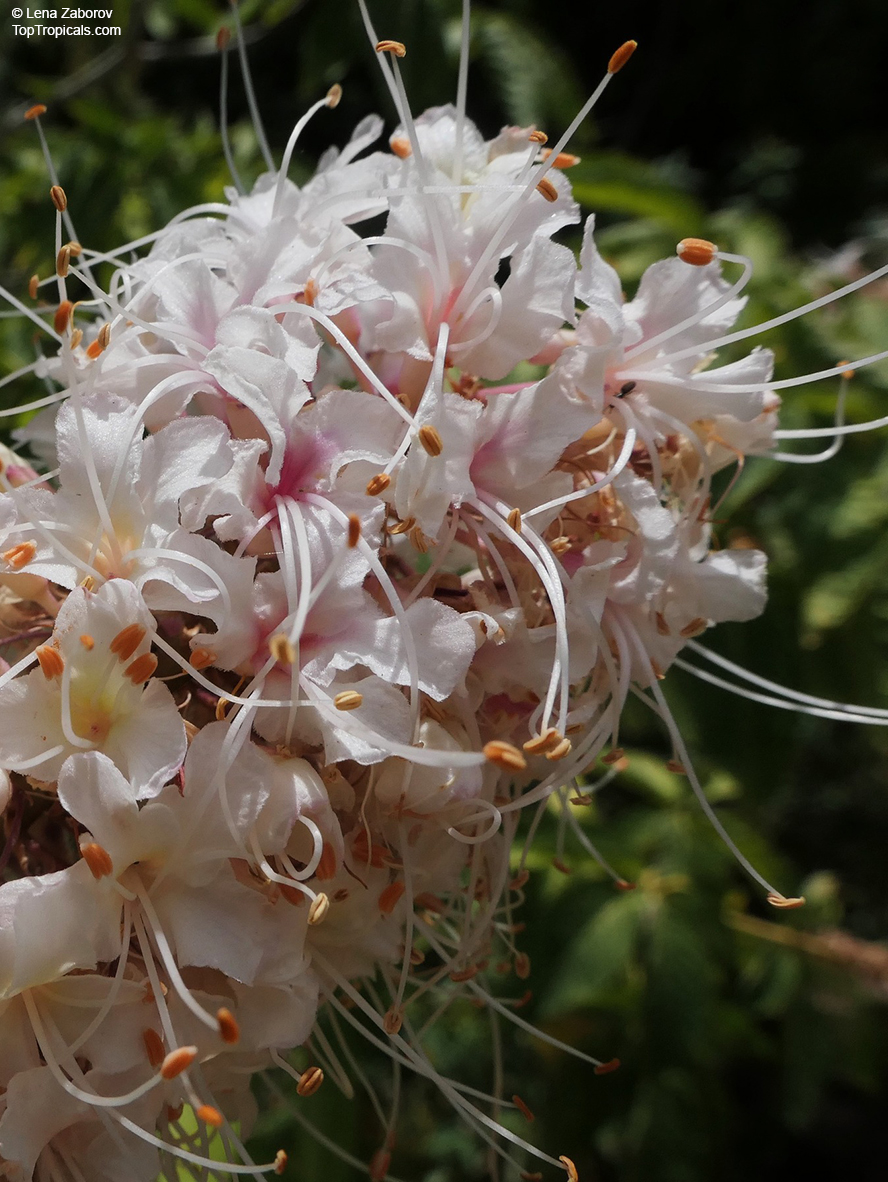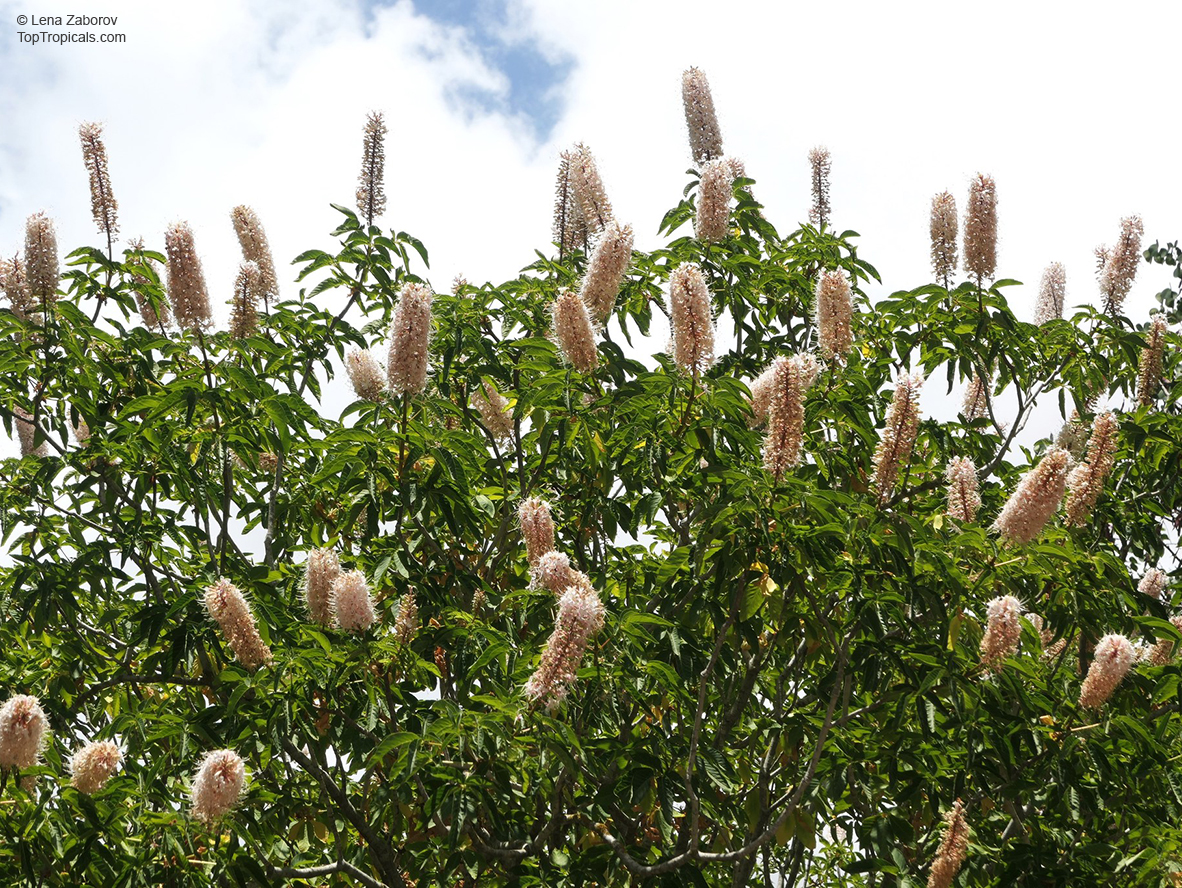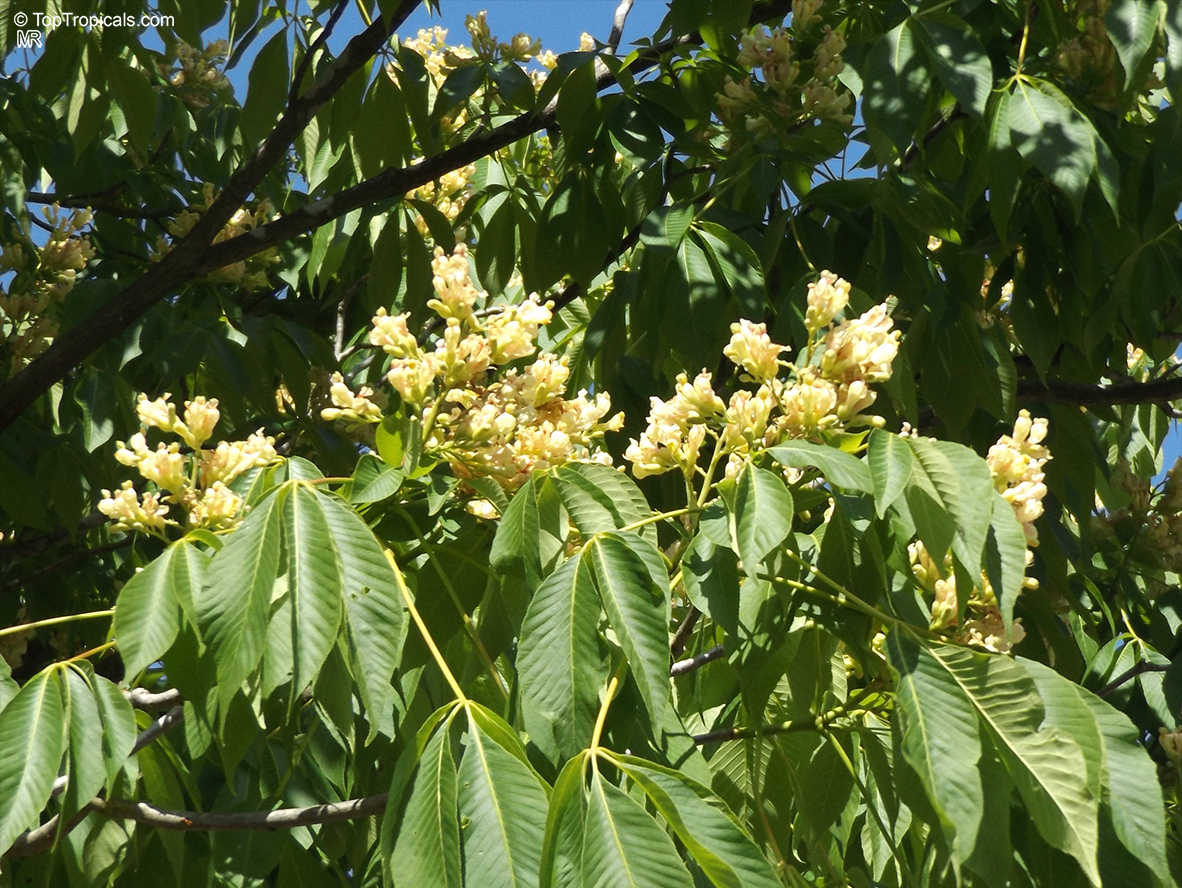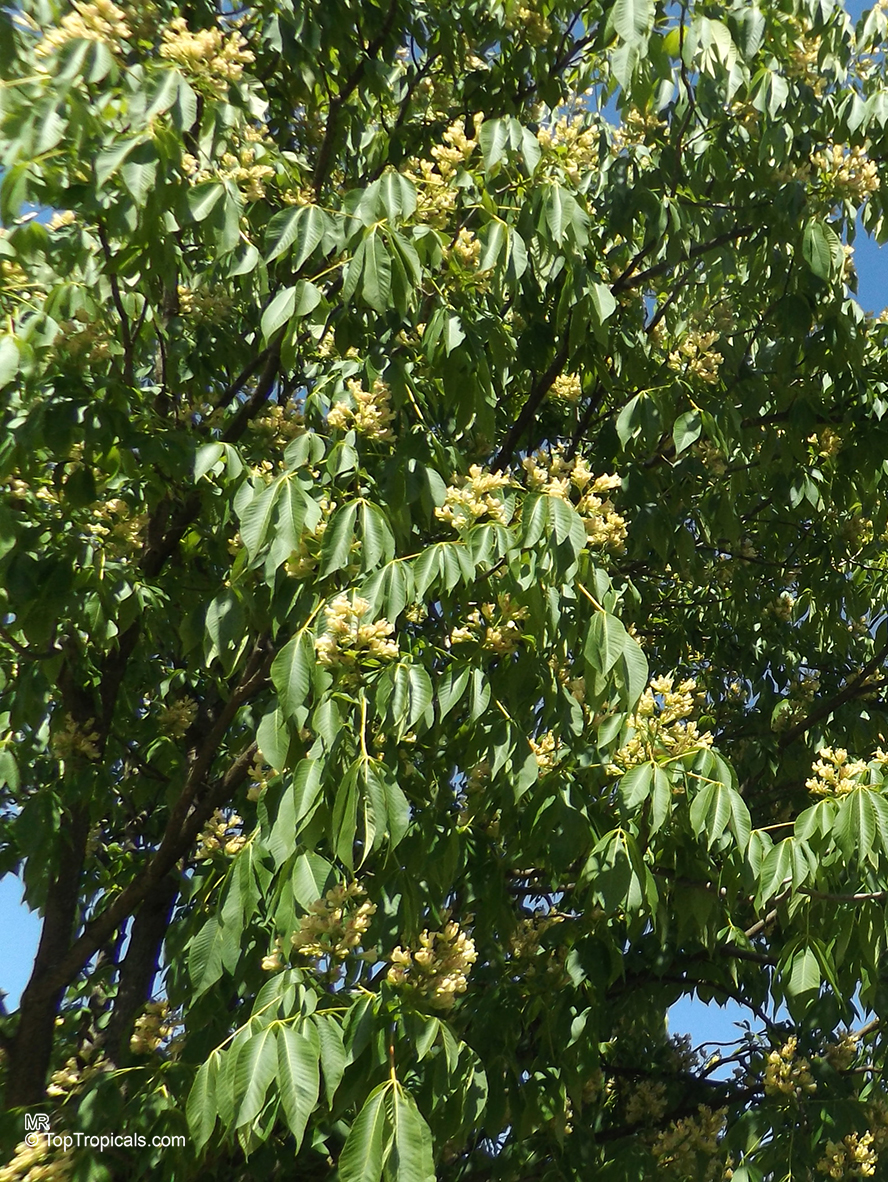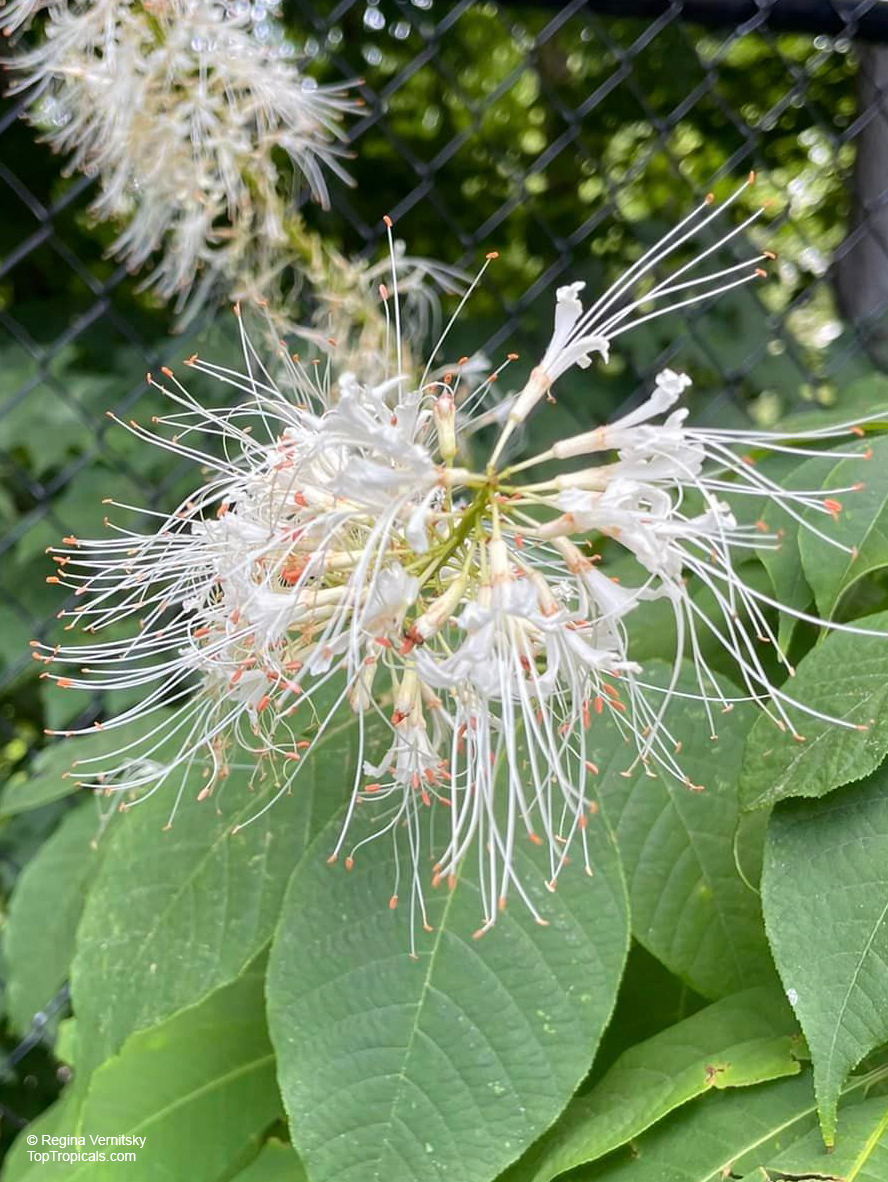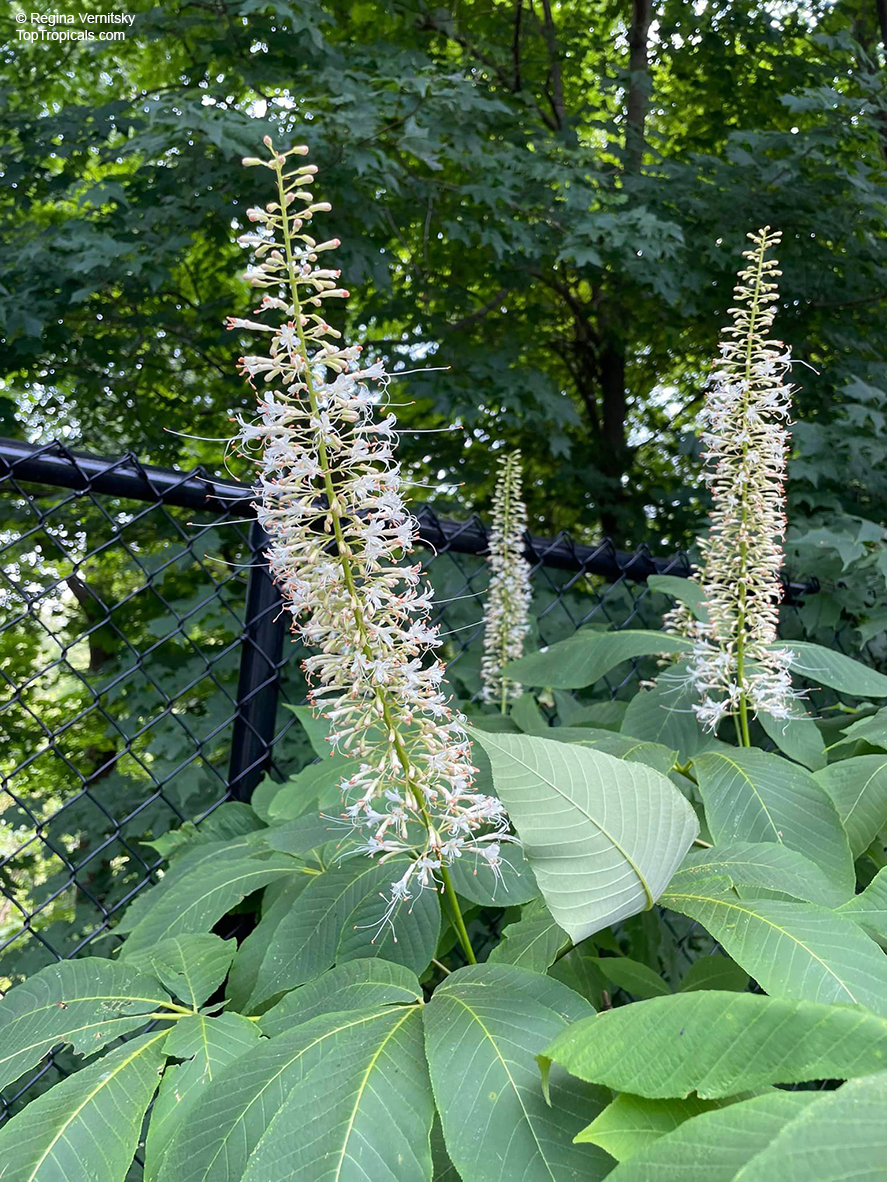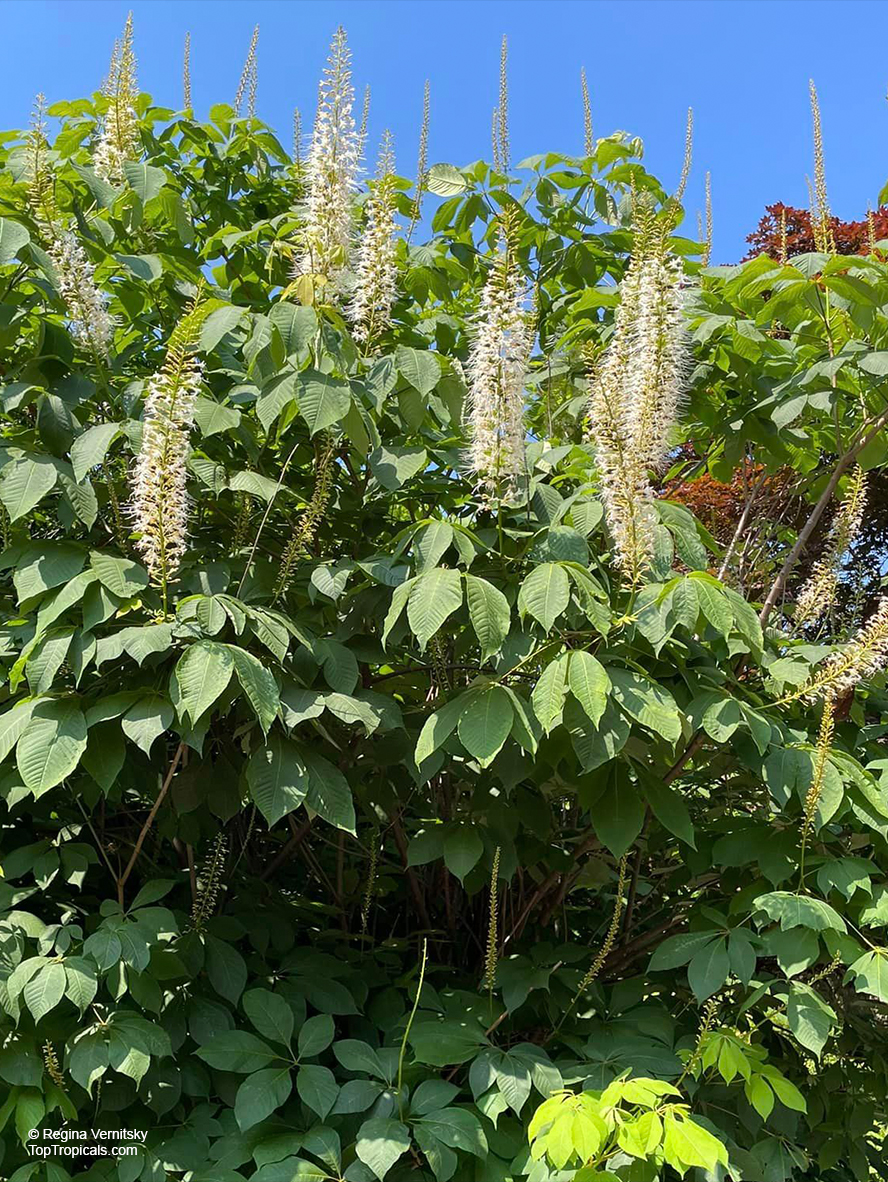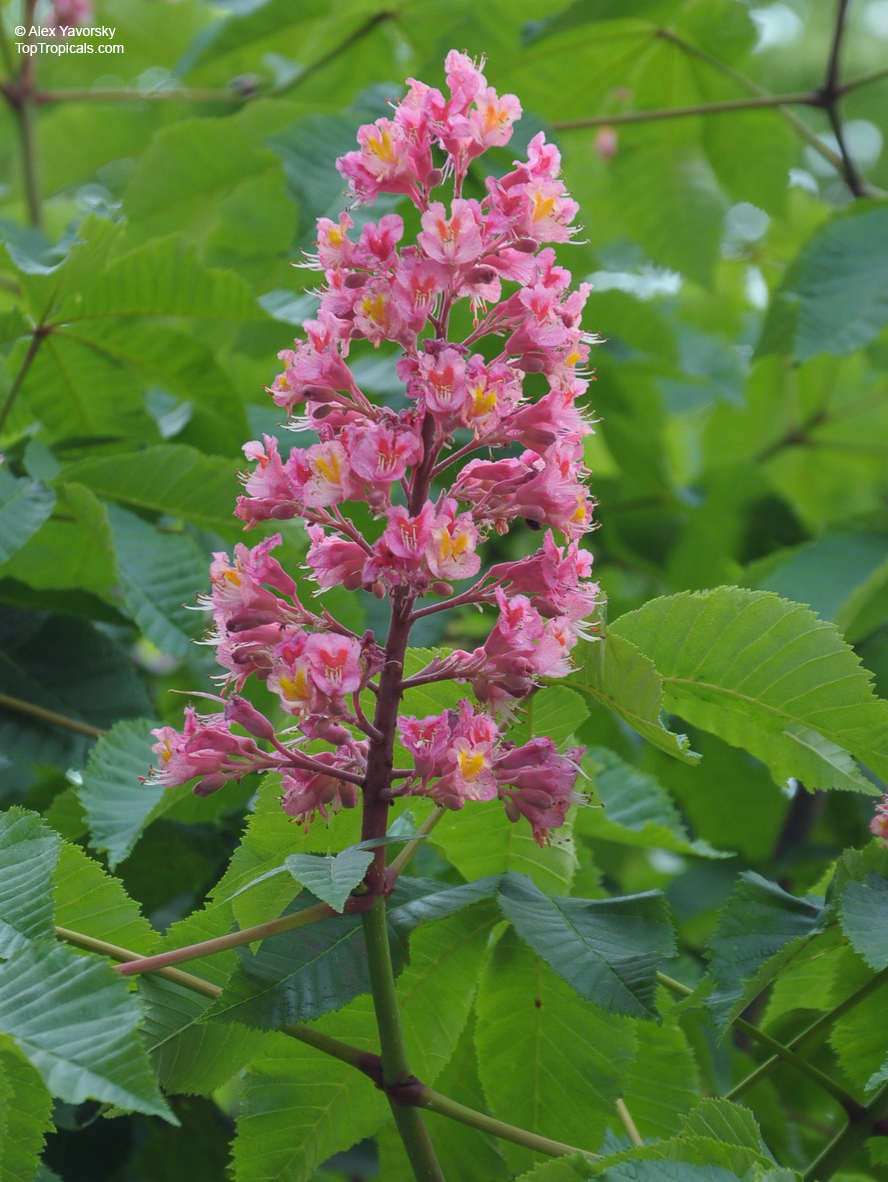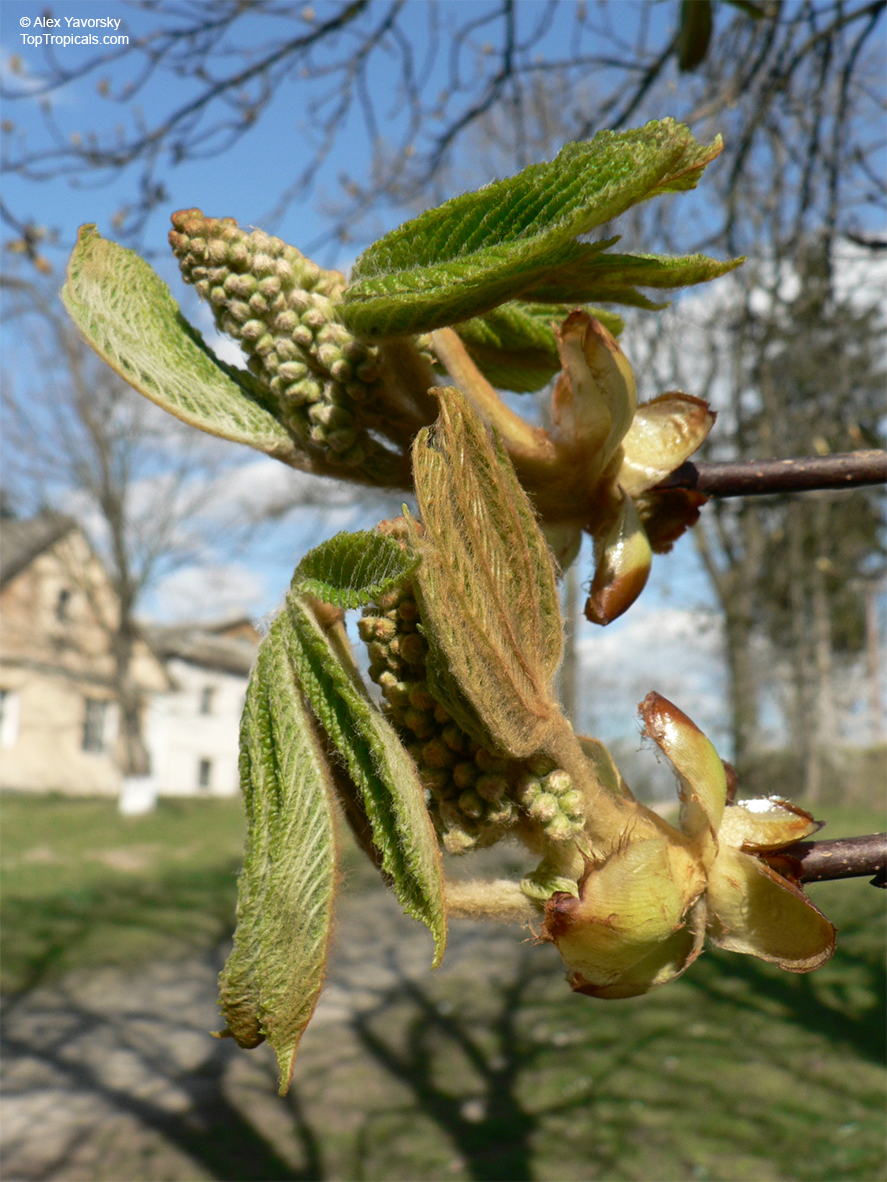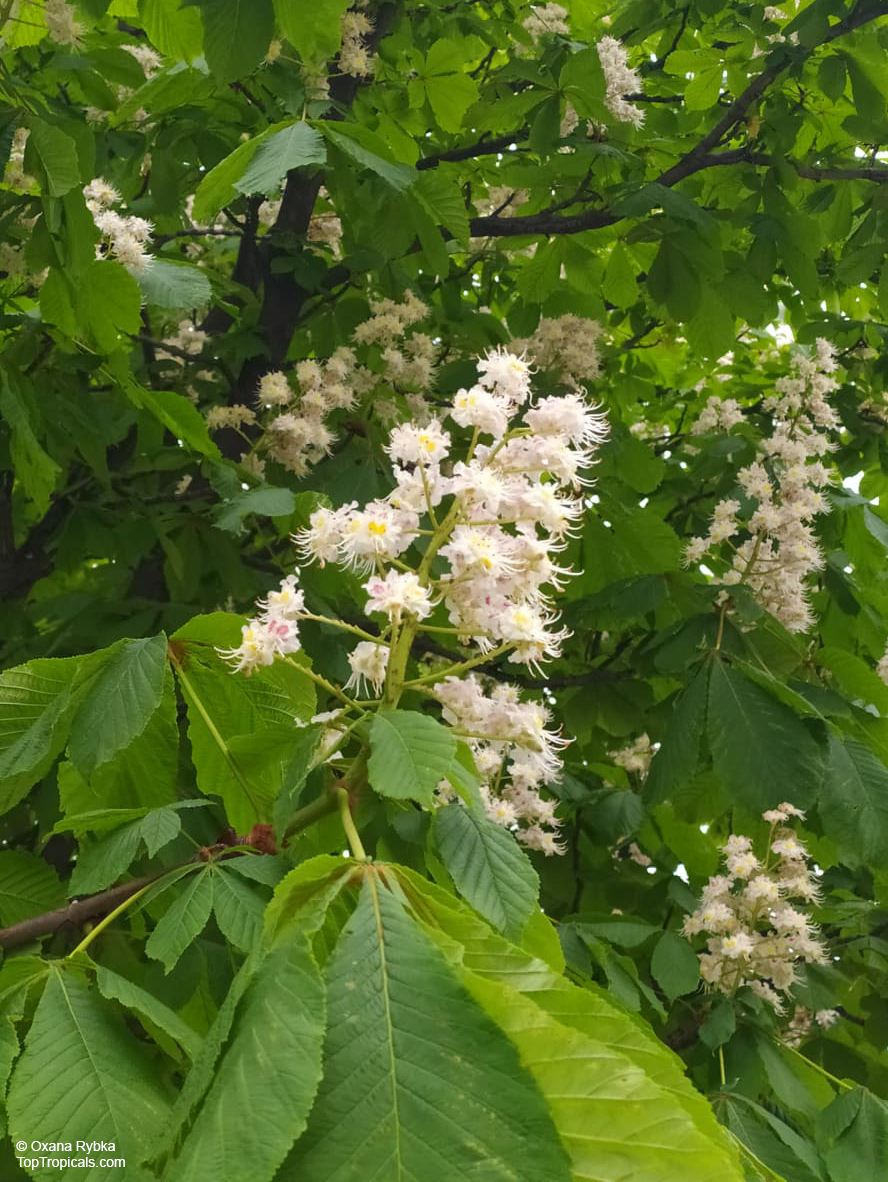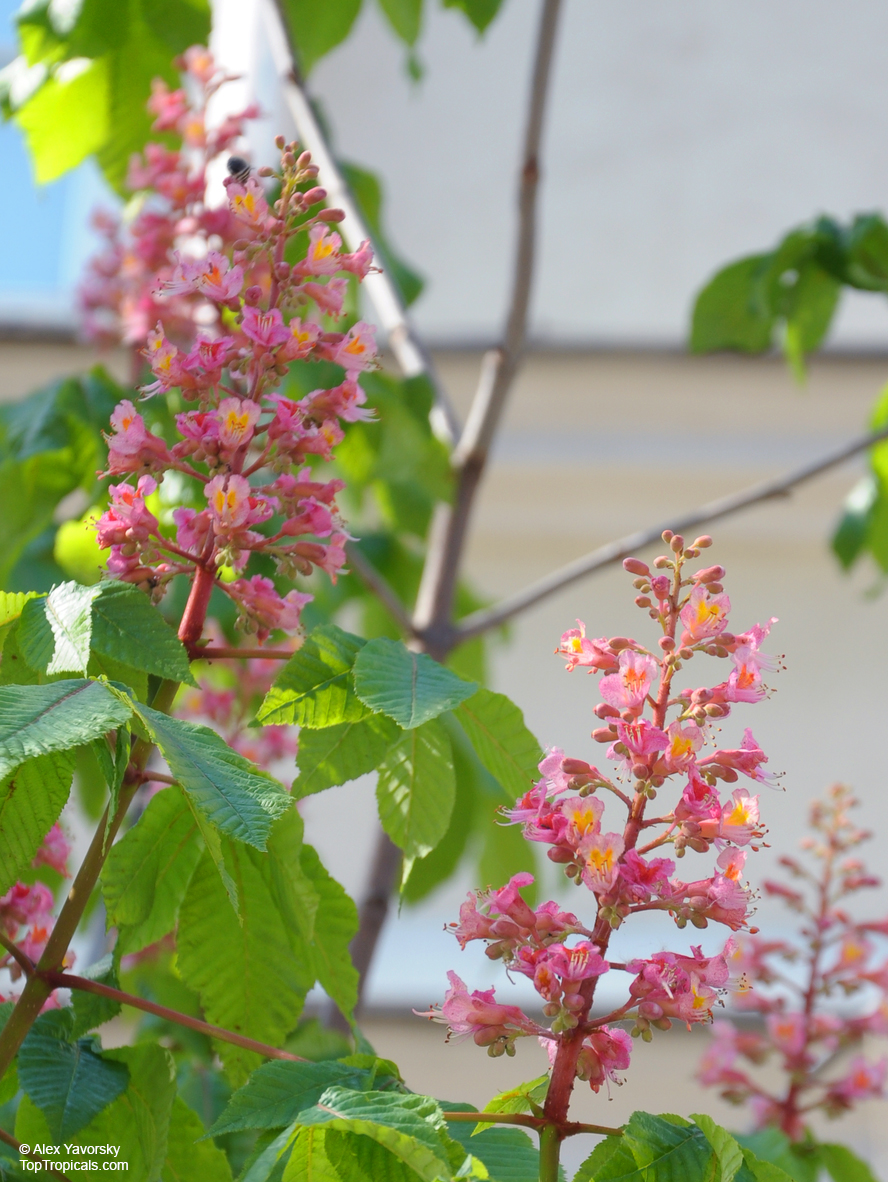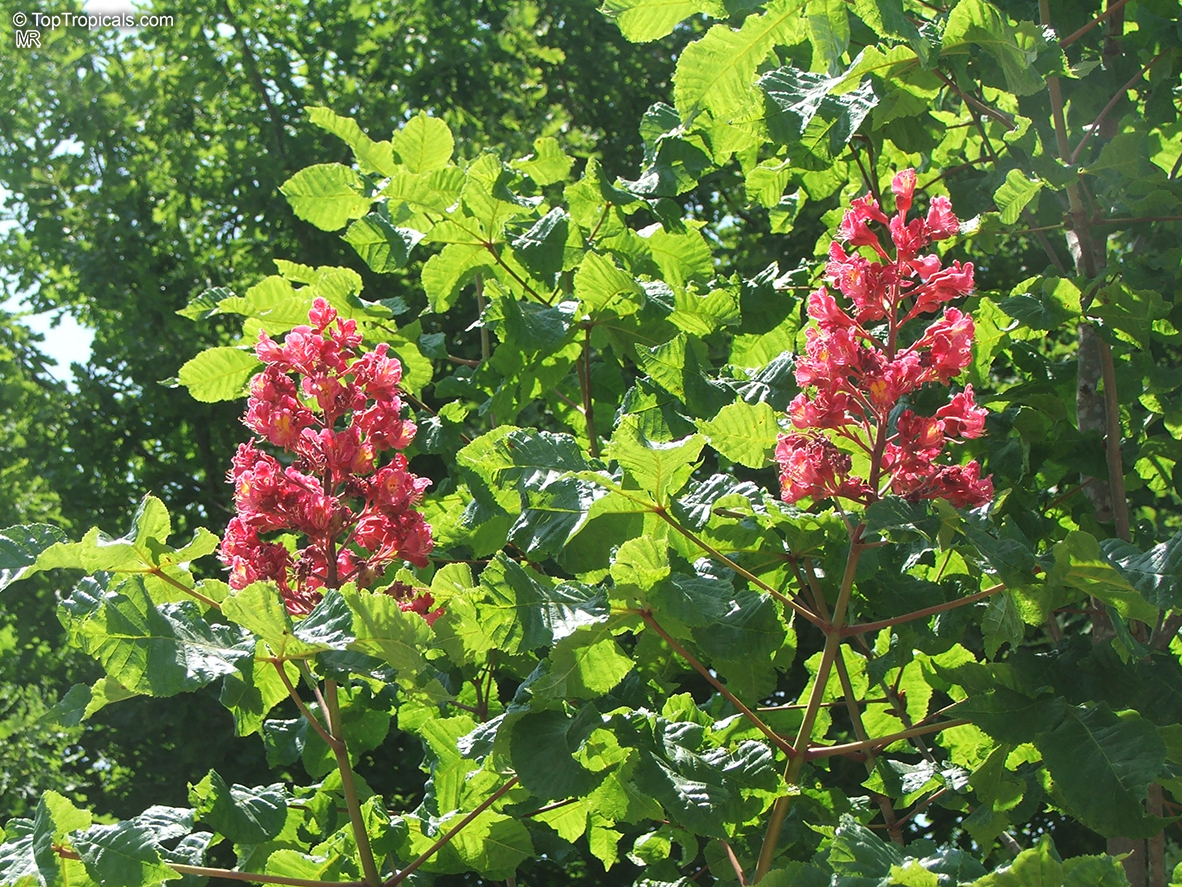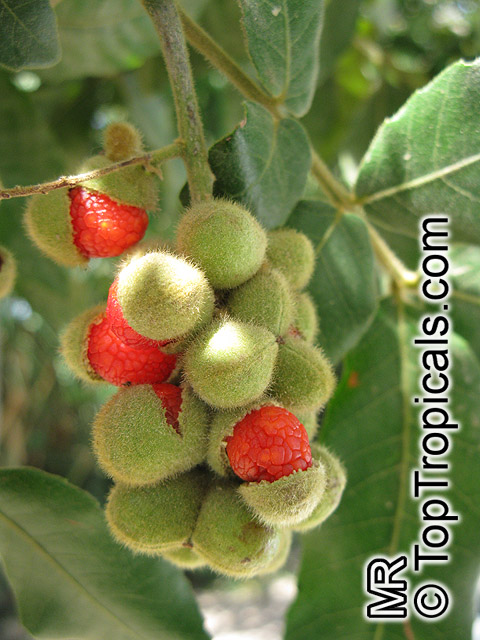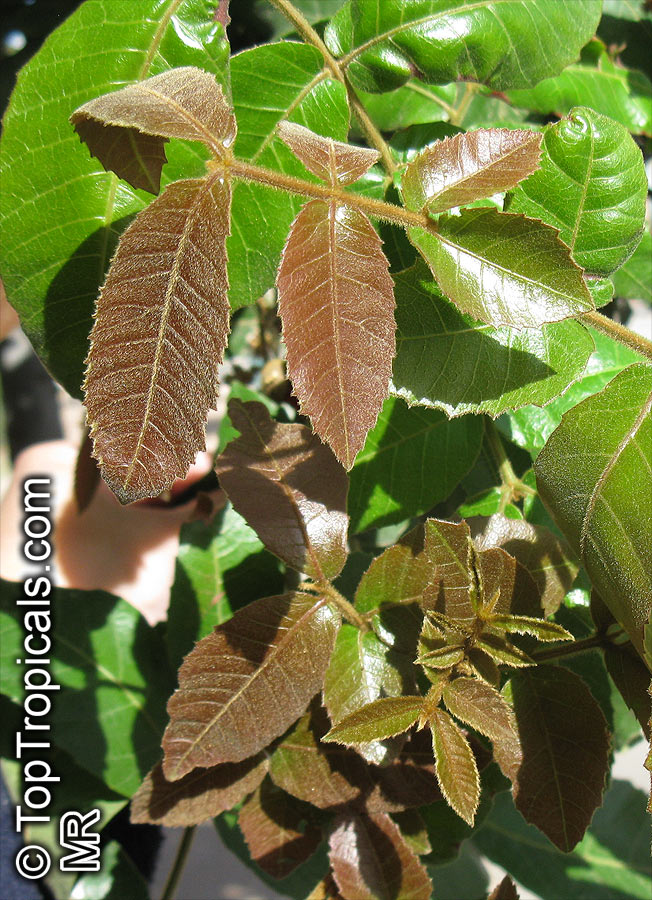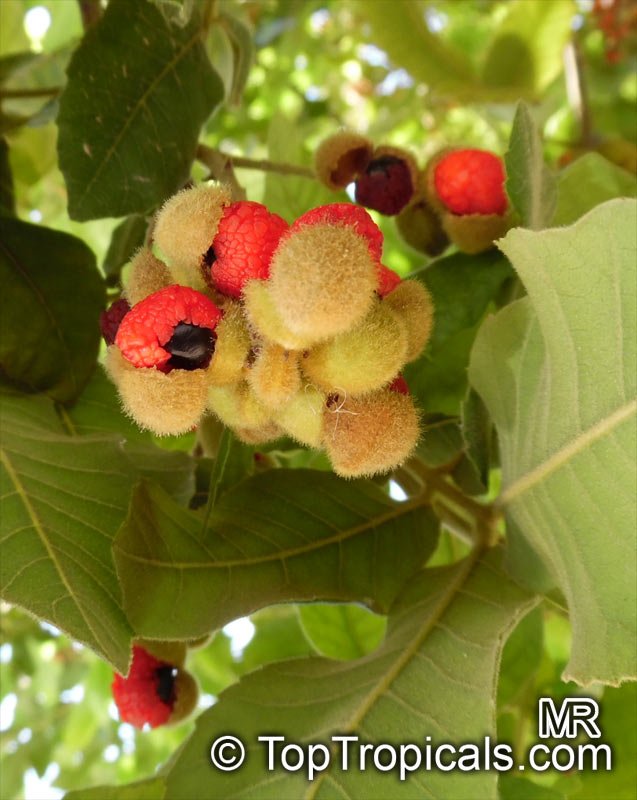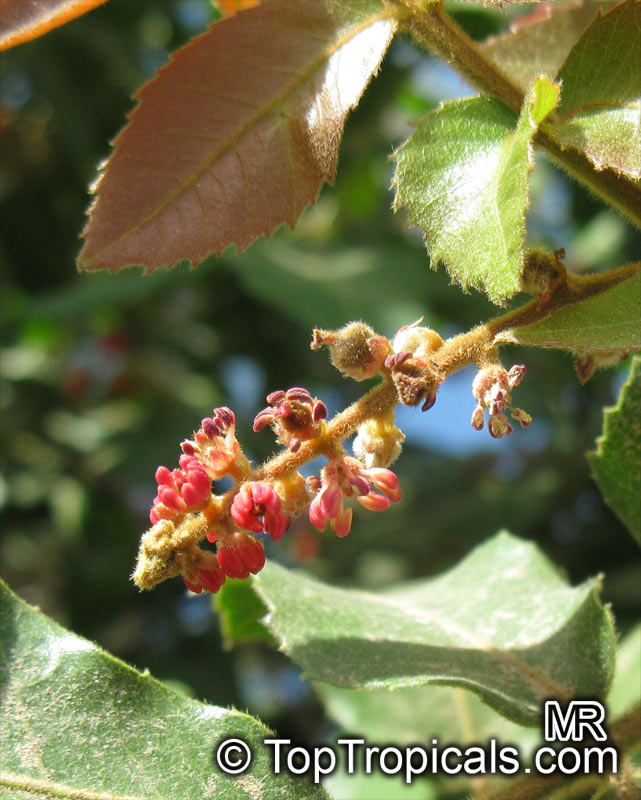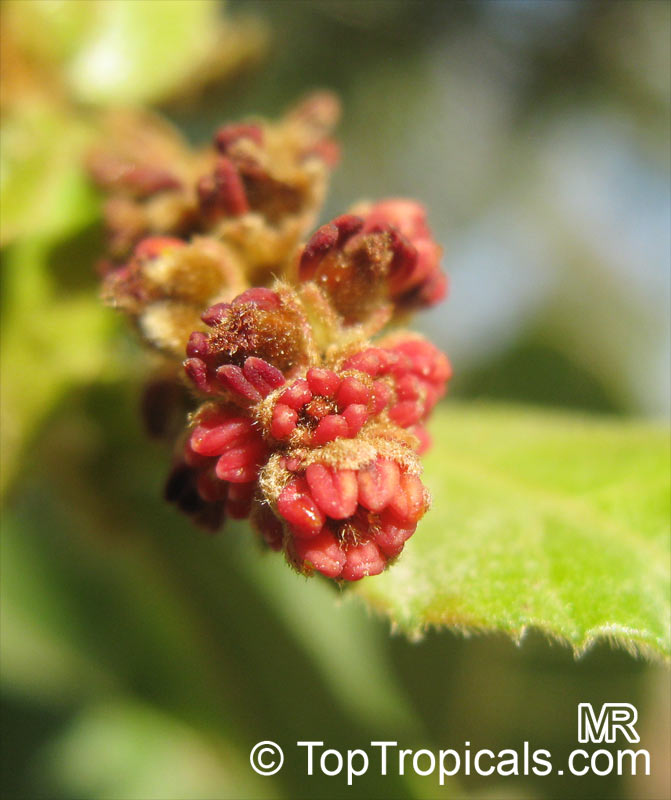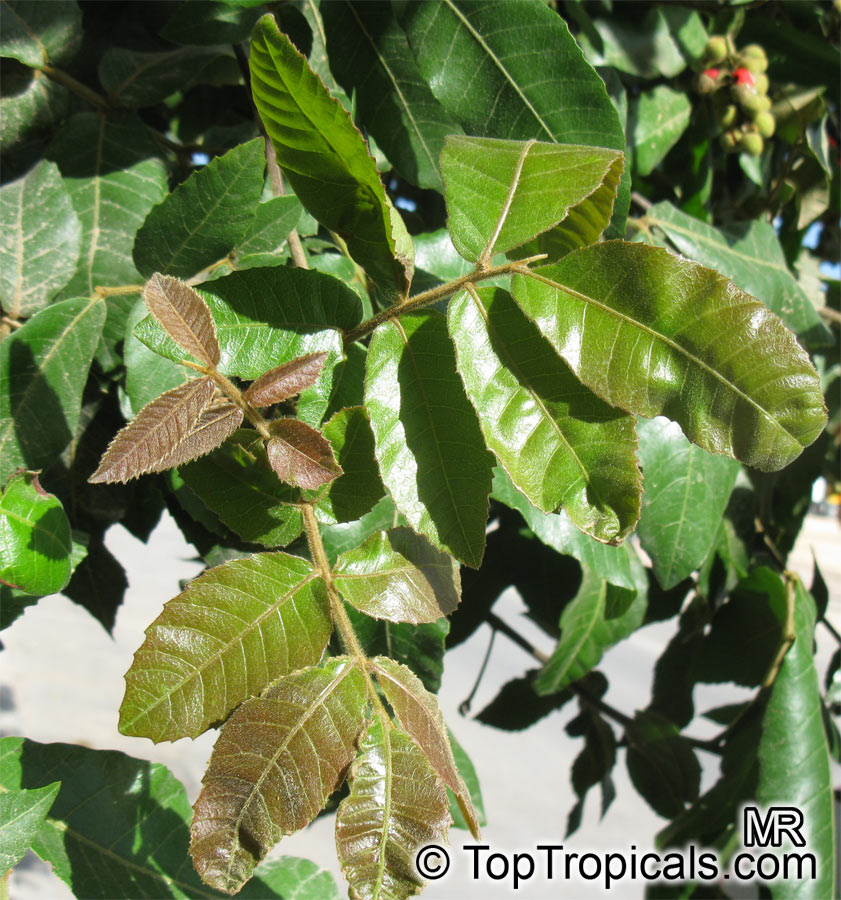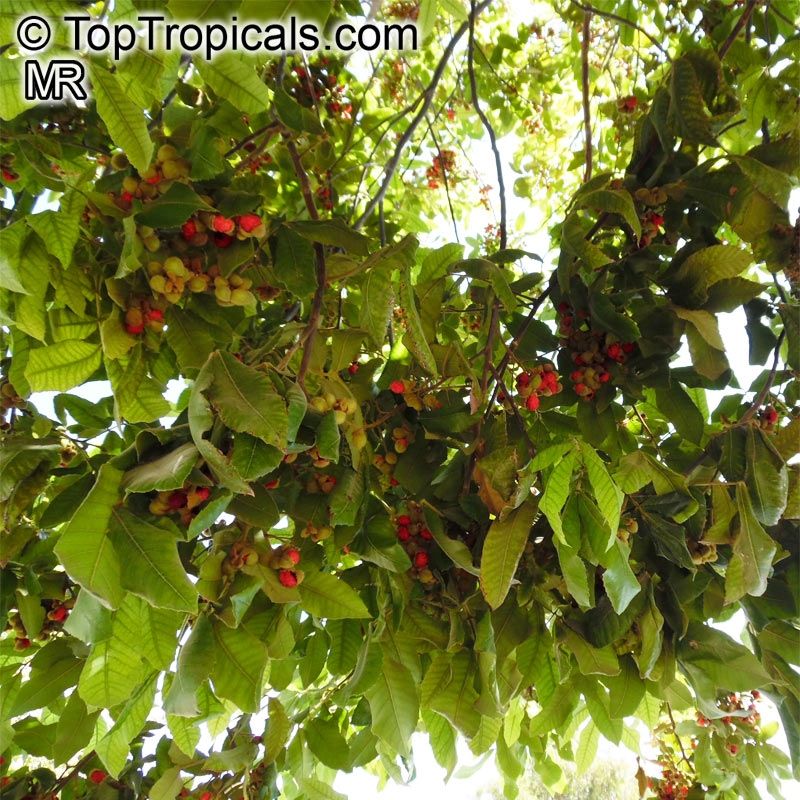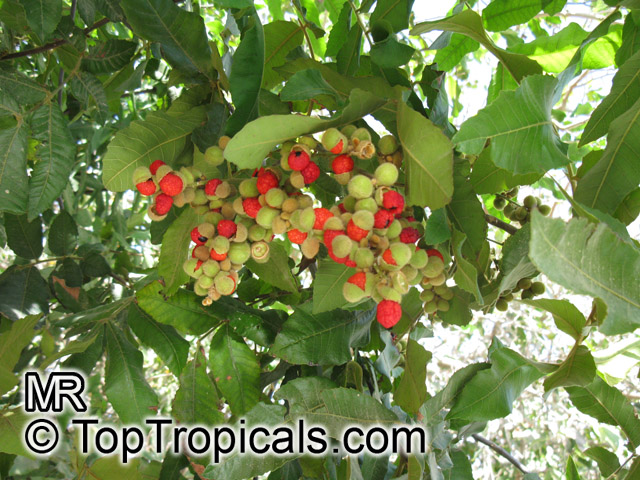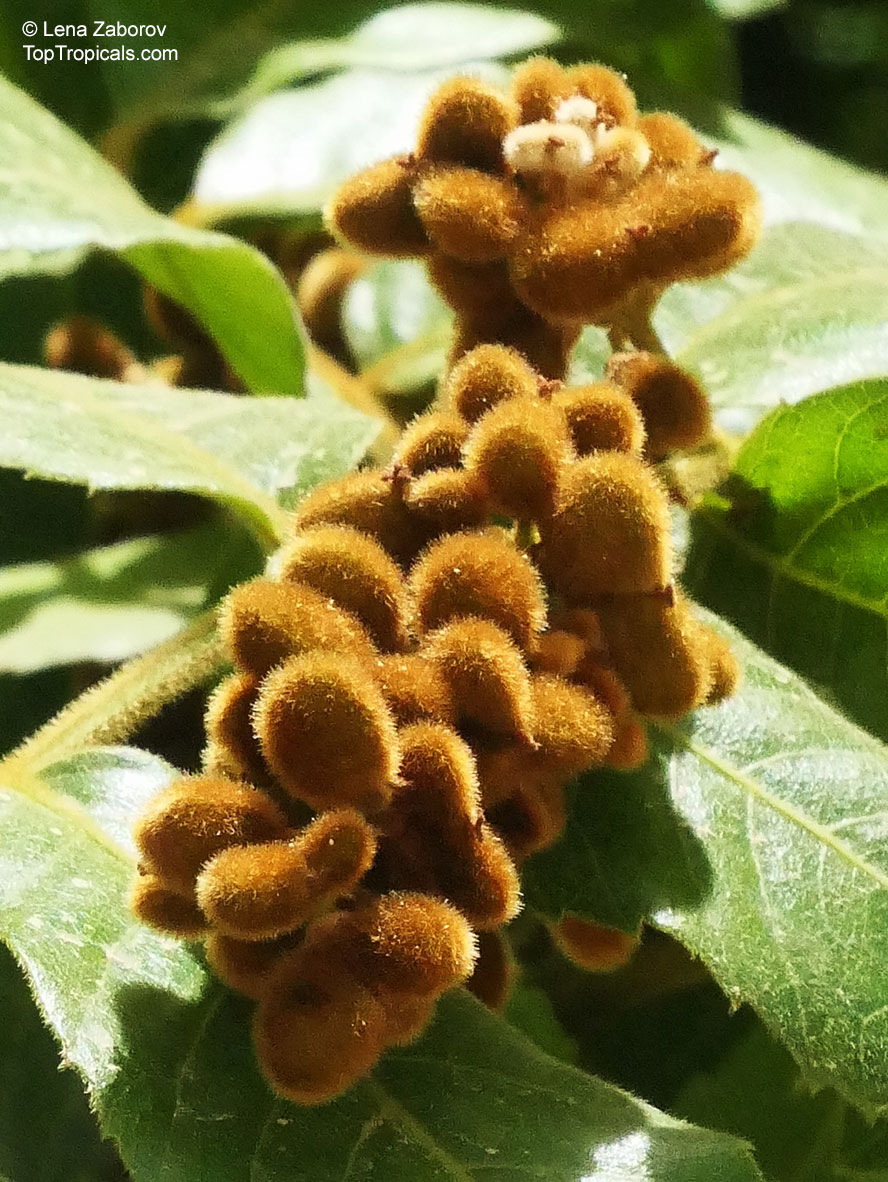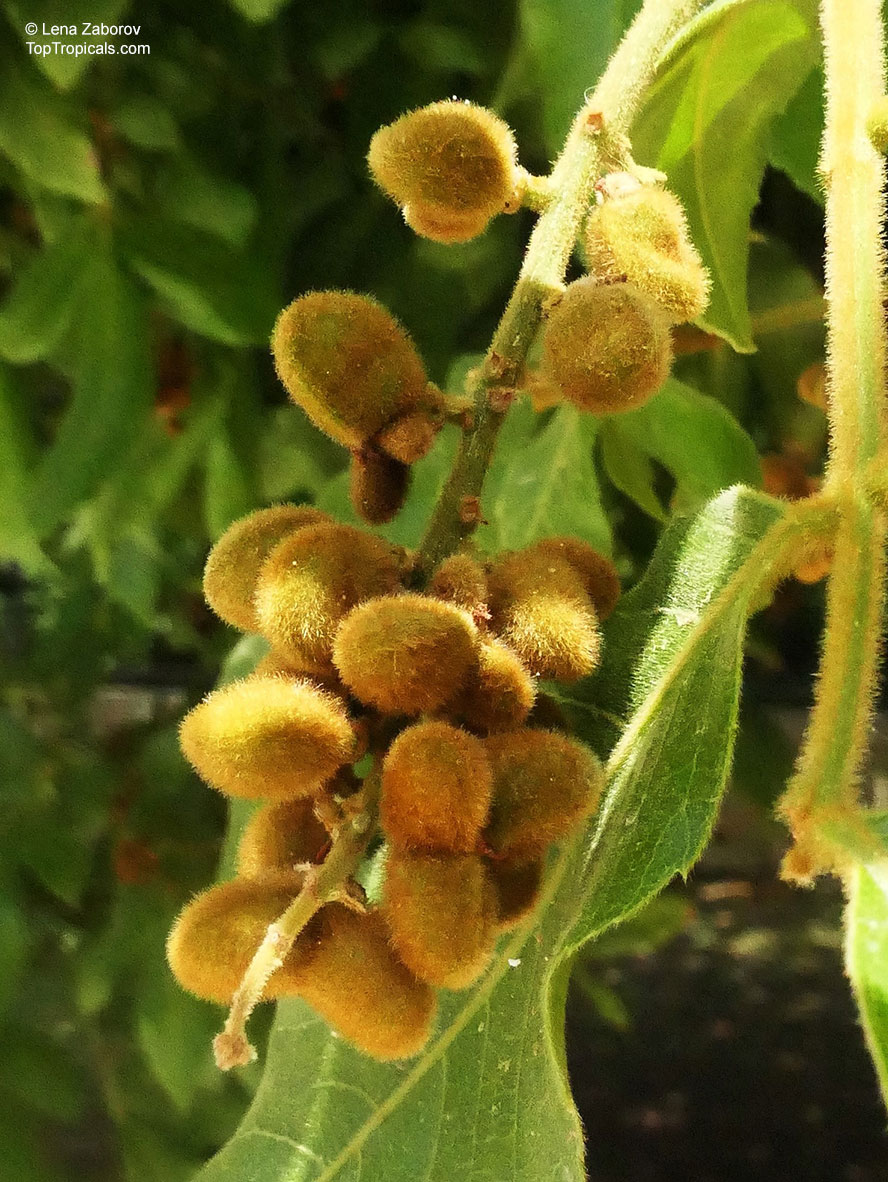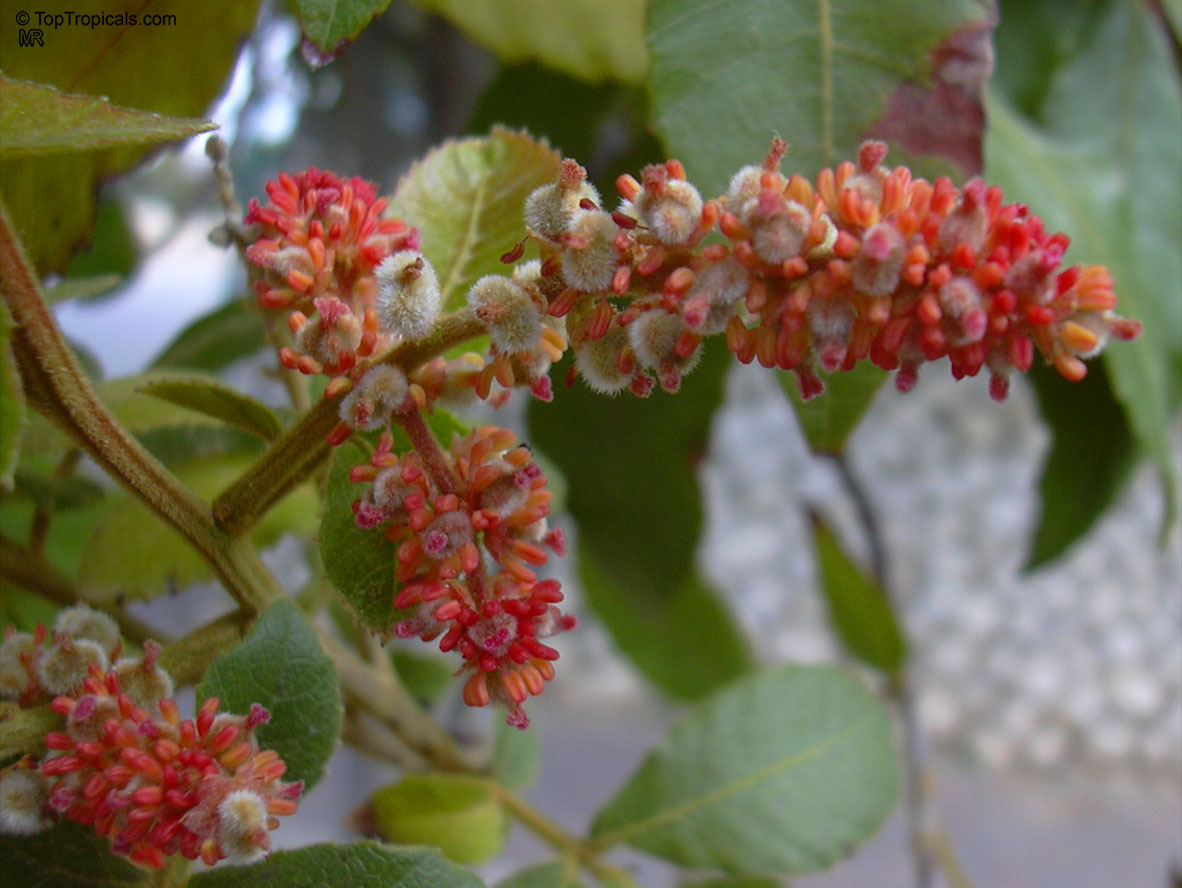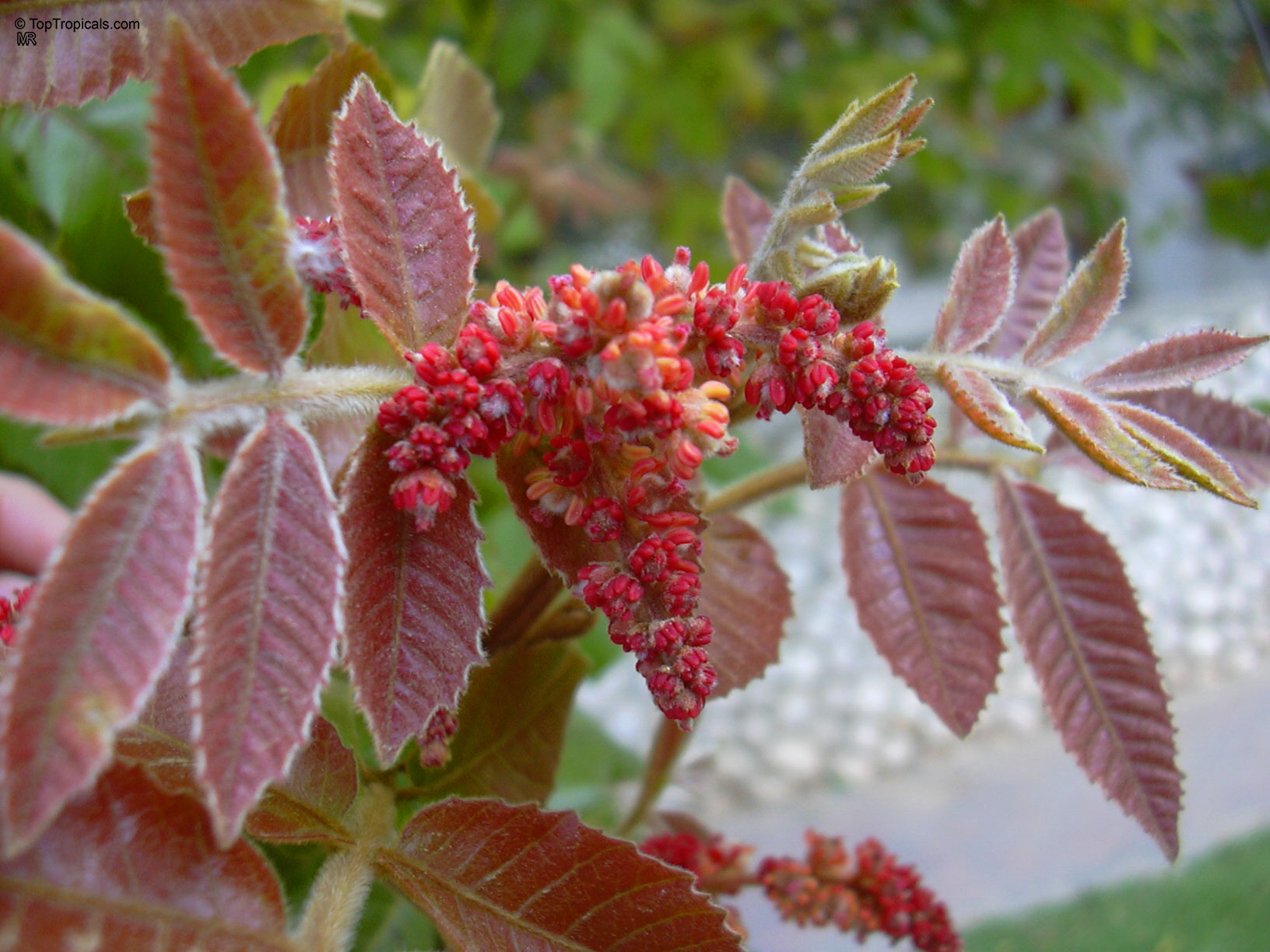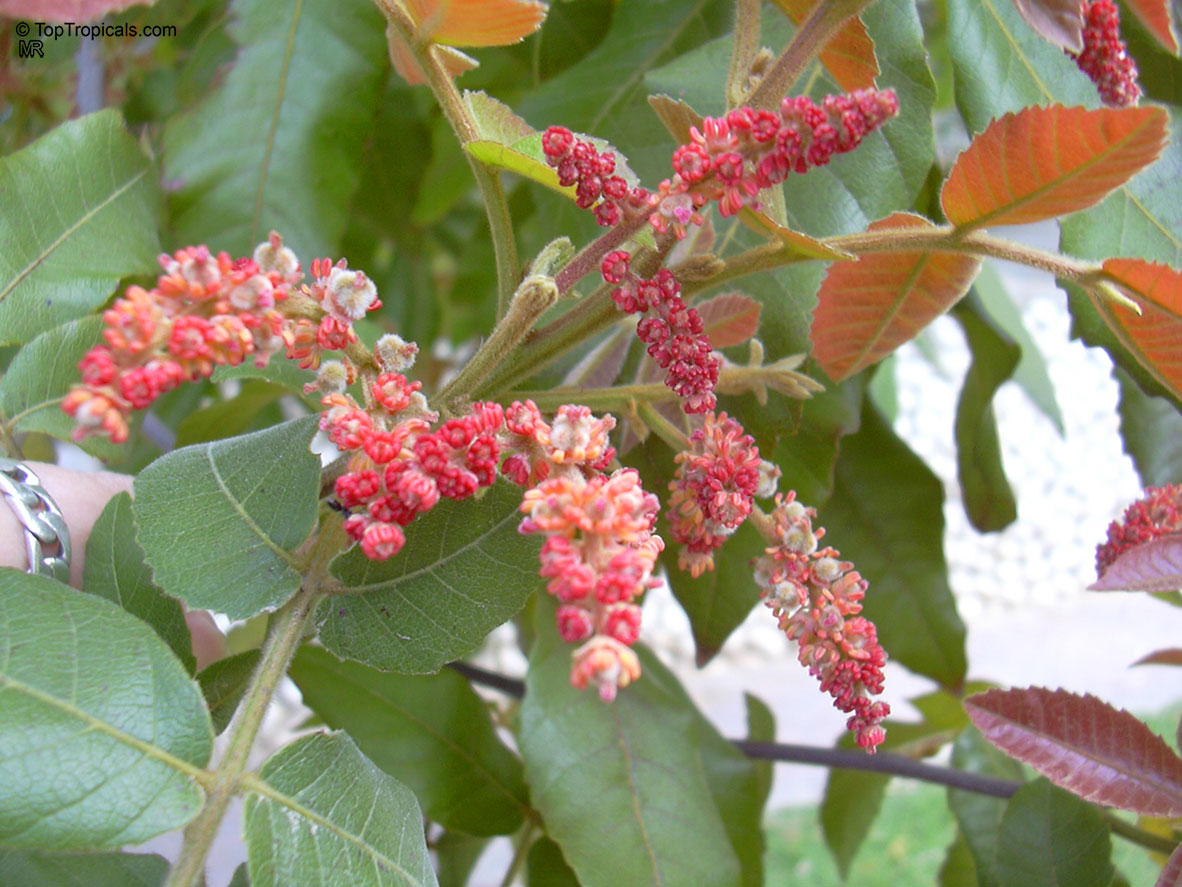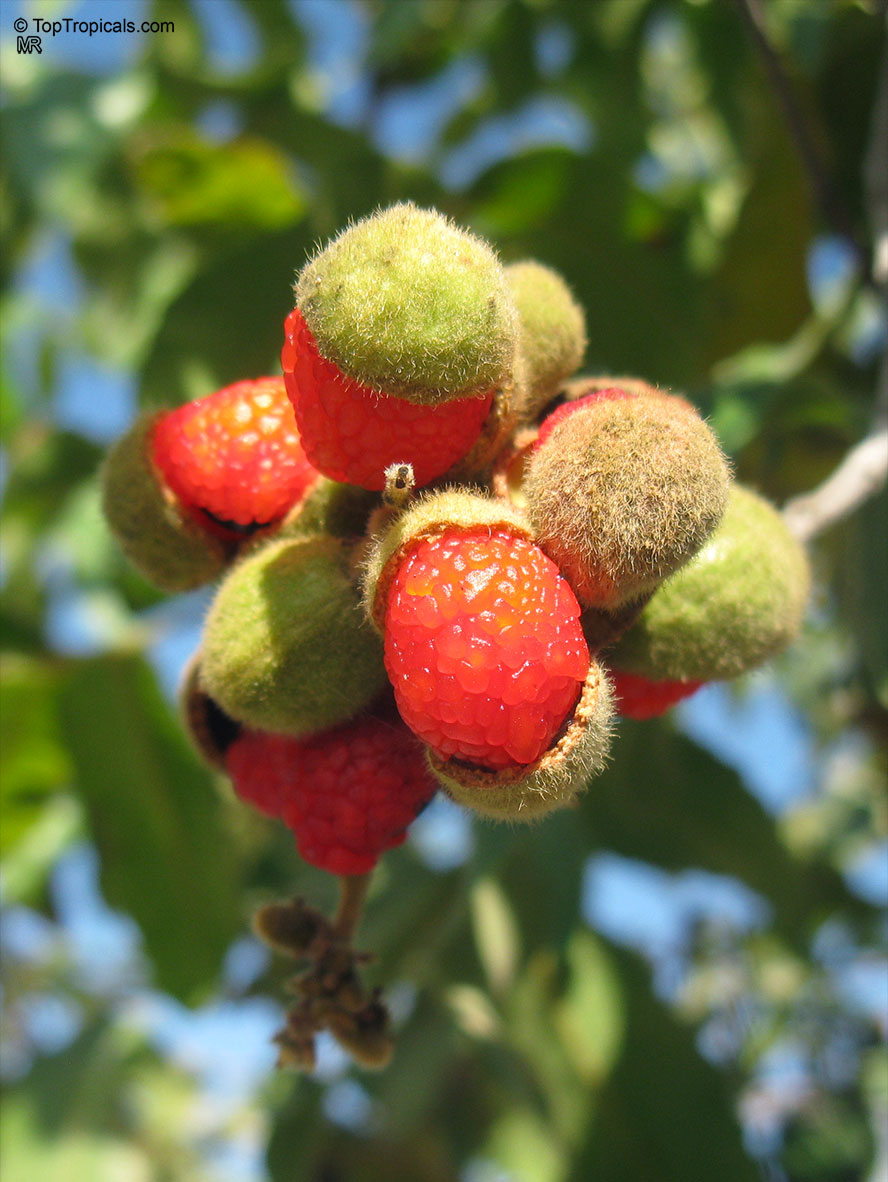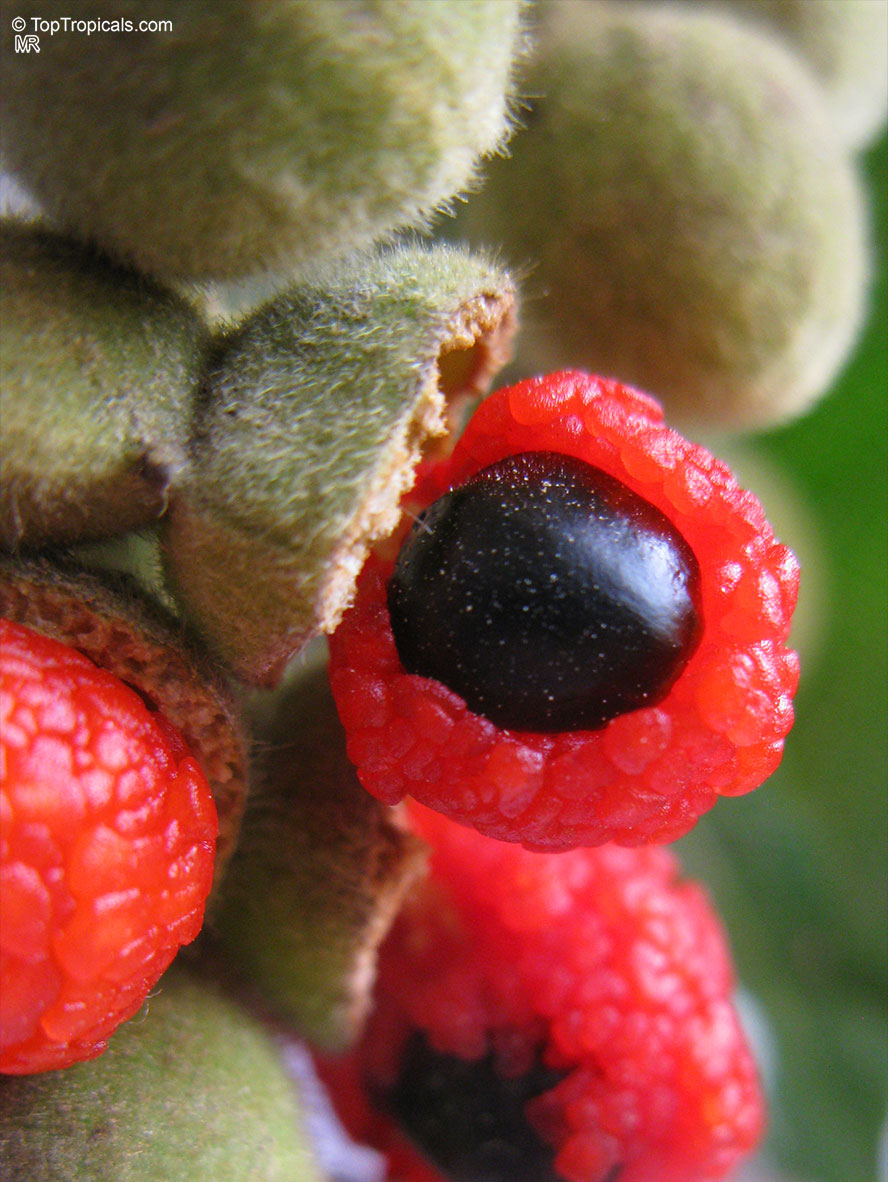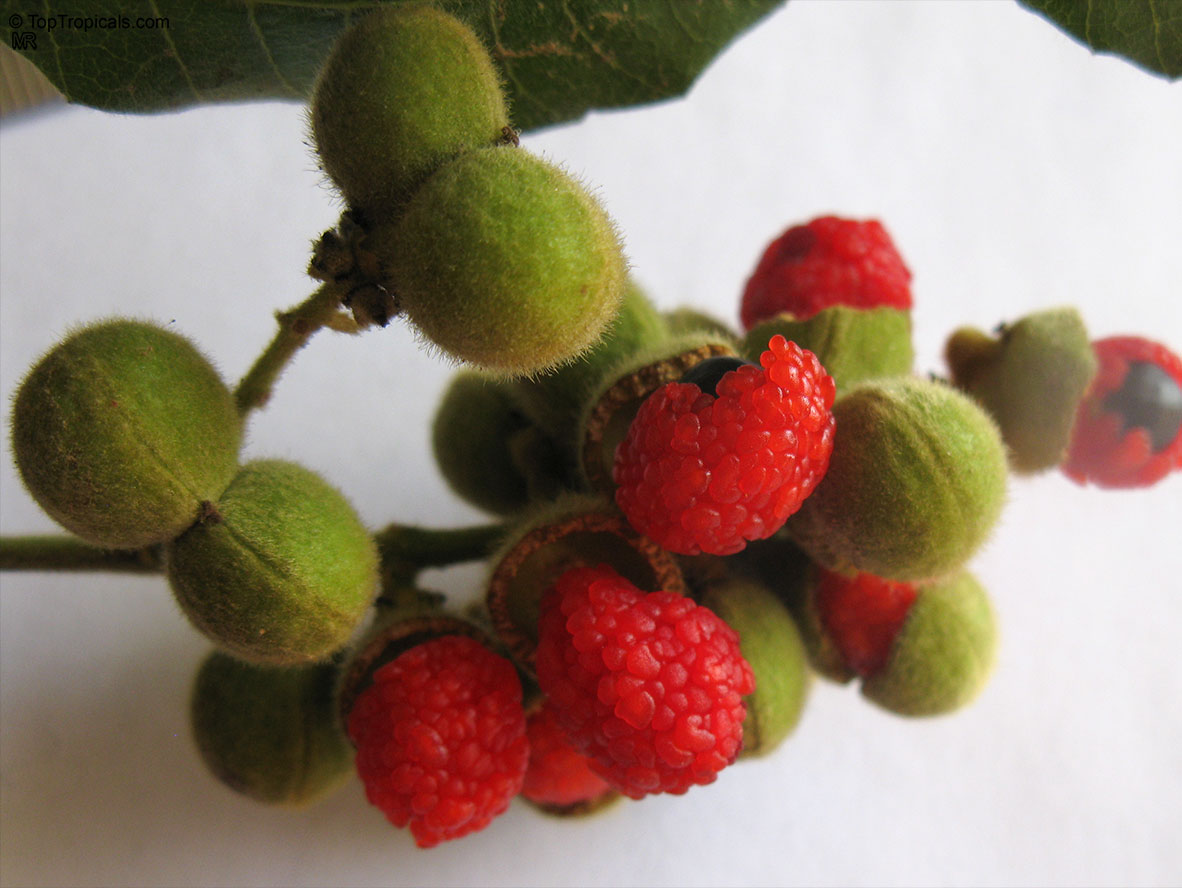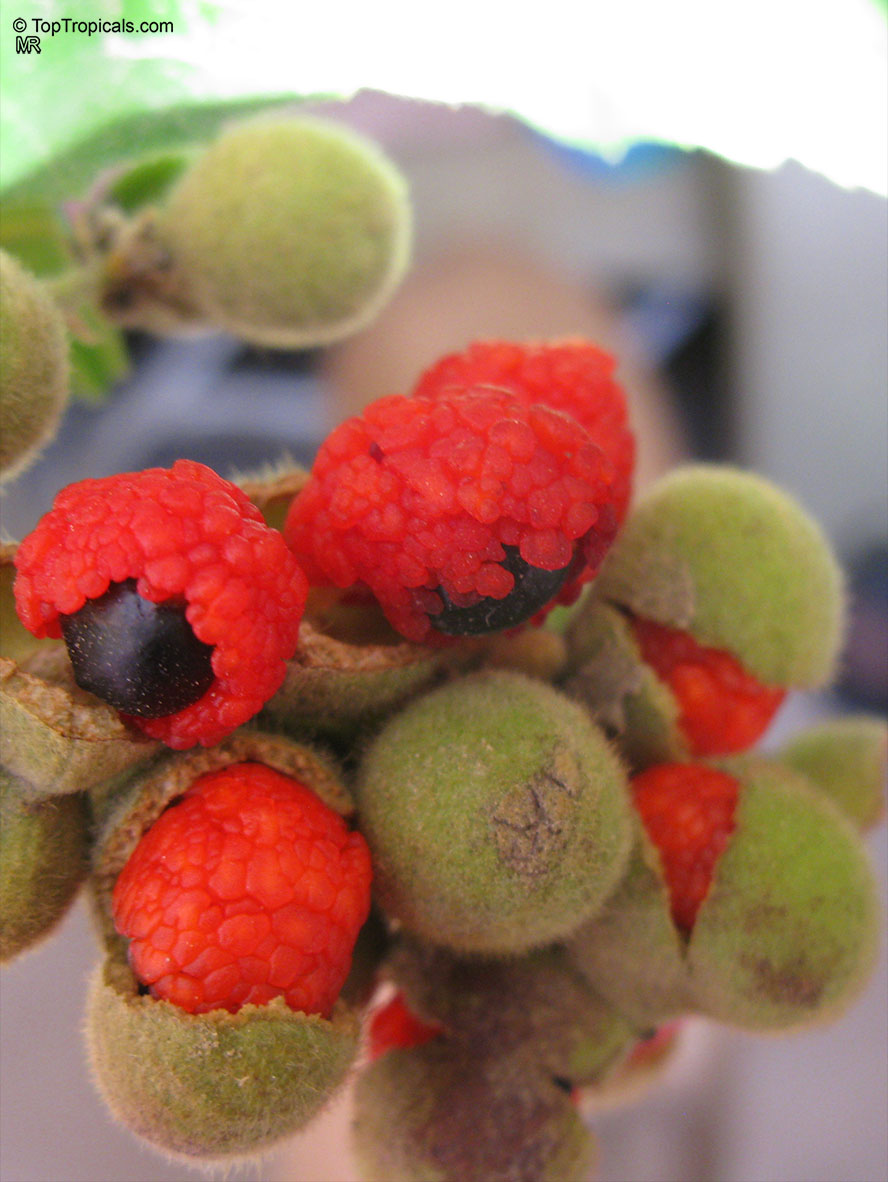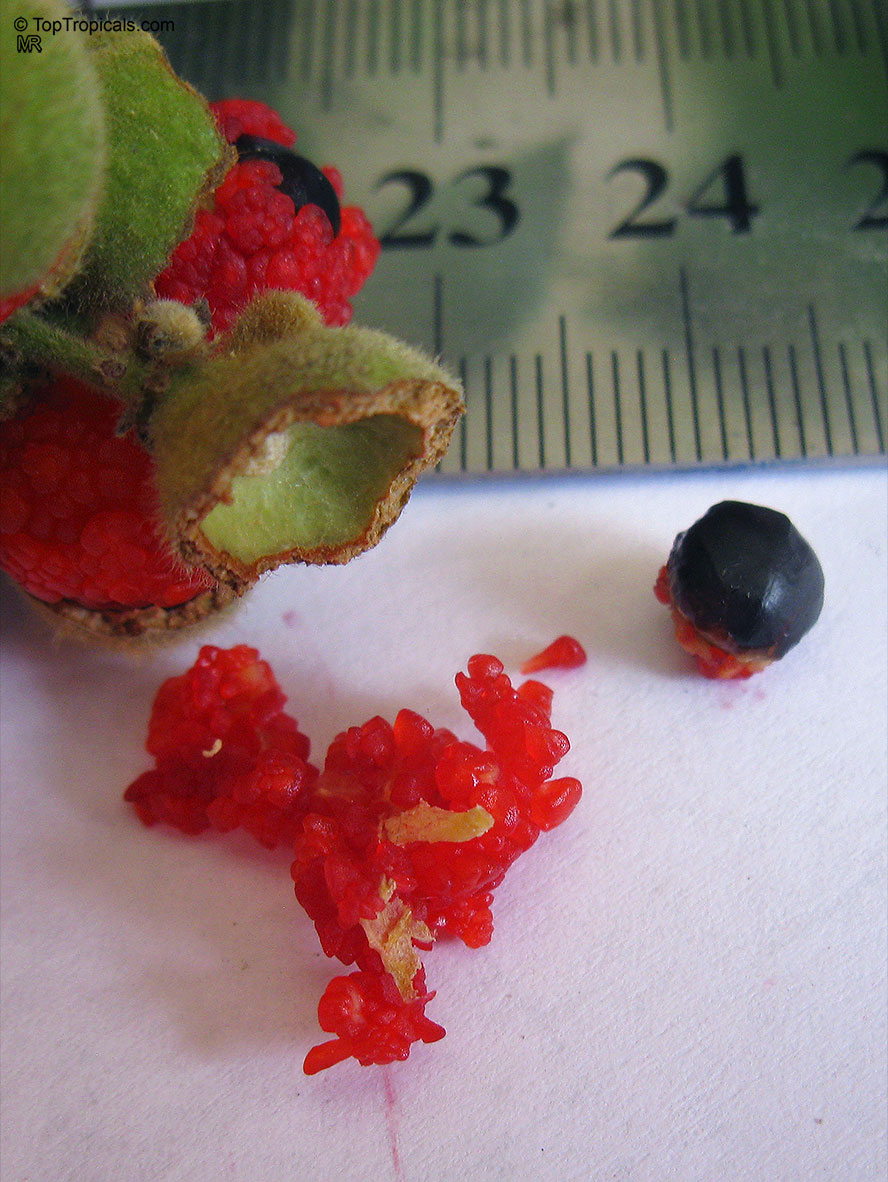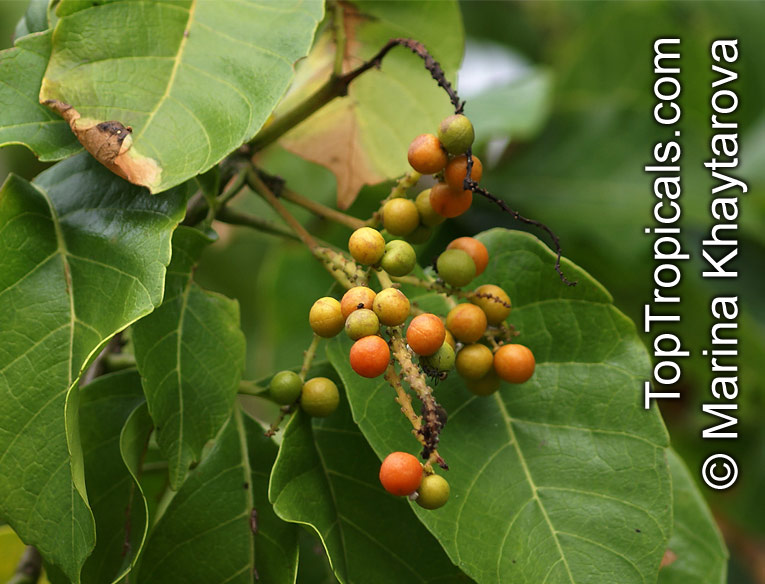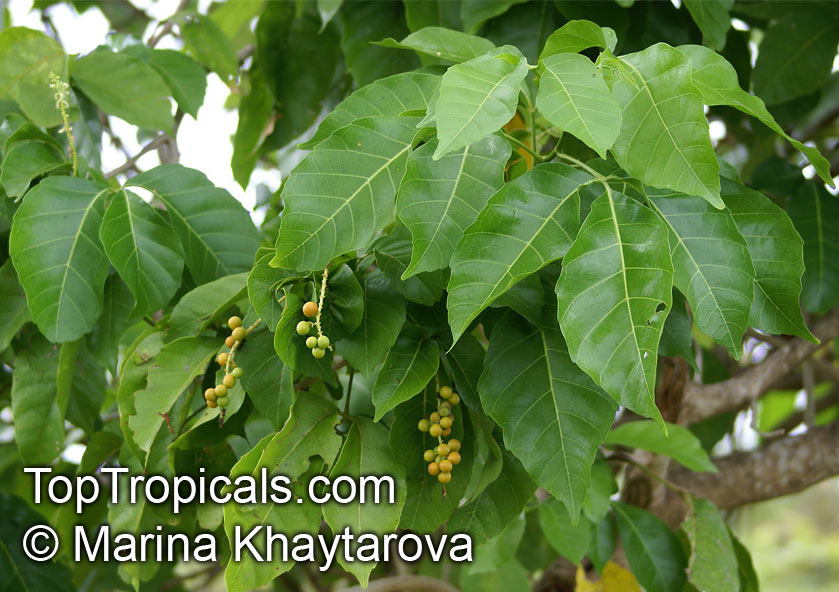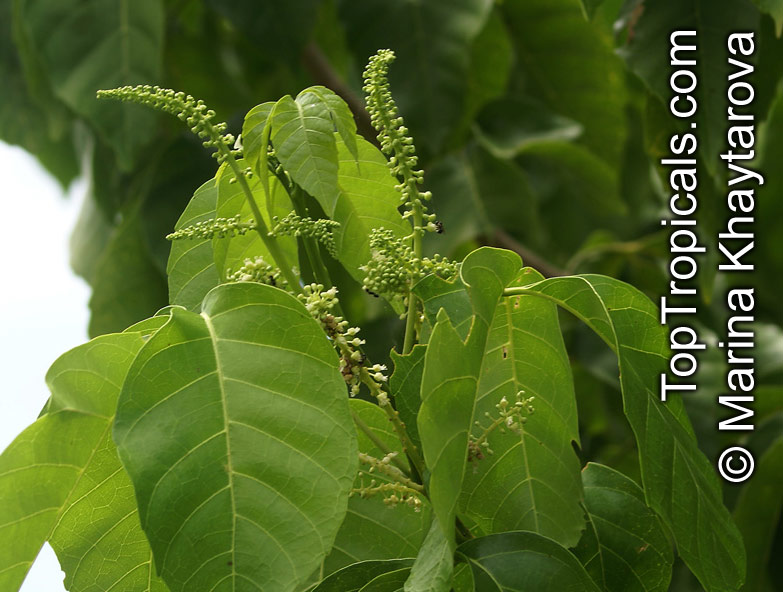Sapindaceae - Botanical Family
Top Tropicals Plant Encyclopedia
| Number of plants found: 47 | Next | 
|
Go to page: | 1 | 2 | 3 | 4 | 5 |
Botanical name: Acer japonicum
Common names: Amur maple, Downy Japanese maple, Fullmoon maple
Family: Sapindaceae
Origin: Japan









Acer japonicum is a small deciduous tree growing to 5-10 m (rarely 15 m) tall, with a trunk up to 40 cm in diameter. In cultivation, it is often only a shrubby tree with multiple trunks joining at ground-level. In autumn, the leaves turn bright orange to dark red.
Botanical name: Acer palmatum
Common names: Japanese maple, Palmate maple, Smooth Japanese maple
Family: Sapindaceae
Origin: Japan









Acer palmatum includes thousands of named cultivars with a variety of forms, colors, leaf types, sizes, and preferred growing conditions. Heights of mature specimens range from 0.5 to 25 m (1.5 to 82 ft), depending on type.
Botanical name: Acer sp.
Common names: Red Maple, Soft Maple
Family: Sapindaceae









Maple is a widespread deciduous tree popular in eastern North America.
Many of its features, especially its leaves, are quite variable in form. Among these features it is best known for its brilliant deep scarlet foliage in autumn. Red Maple is adaptable to a very wide range of site conditions. It can be found growing in swamps, on poor dry soils, and most anywhere in between. Elevation is also not a limiting factor in its range. Due to its attractive fall foliage and pleasing form, it is often used as a shade tree for landscapes. It is used commercially on a small scale for maple syrup production as well as for its medium to high quality lumber. It is the State Tree of Rhode Island. It is very cold hardy.
Maple is a very popular plant in Japan and a subject for bonsai. Autumn in Japan is celebrated with colorful autumn leaves known as momijigari. The foliage of trees light up the Japanese landscape. Scarlet Japanese maples flash against emerald conifers, this is the beauty of momijigari as you view the spectacular colors of changing leaves.
The maples have long been known to be closely related to the family Sapindaceae.
This plant is grown from seed collected in Florida, so it is suited for planting in Florida. It may perform worse up North.
Recommended Fertilizer: SUNSHINE Robusta - Rapid Growth Booster
Botanical name: Aesculus californica
Common names: California Buckeye, California Horse-chestnut
Family: Sapindaceae
Origin: California









Aesculus californica is a large deciduous shrub or small tree, up to 4�"12 m (13�"39 ft) tall, with gray bark often coated with lichens and mosses. It is used as an ornamental plant for its striking leaf buds, lime green foliage, fragrant white flowers, red-brown foliage in mid to late summer, and architectural silver branches through fall. The tree also acts as a soil binder, which prevents erosion in hilly regions.
The seeds are poisonous. The nectar and pollen of the flowers is toxic to honeybees, so the trees should not be planted near apiaries.
Botanical name: Aesculus flava
Common name: Yellow Buckeye
Family: Sapindaceae
Origin: Eastern United States




Botanical name: Aesculus parviflora
Common names: Bottlebrush Buckeye, Small-flowered Buckeye
Family: Sapindaceae
Origin: Southeastern United States








Aesculus parviflora is grown as an ornamental plant in gardens, where its August flowering attracts butterflies. It prefers moist, well-drained soils in part shade to full shade.
This plant is highly poisonous to humans IF EATEN.
Botanical name: Aesculus sp.
Common names: Buckeye, Horse Chestnut, Horse-chestnut
Family: Sapindaceae








The genus Aesculus, with species called Buckeye and Horse Chestnut, comprises 13�"19 species of flowering plants . They are trees and shrubs native to the temperate Northern Hemisphere, with six species native to North America and seven to 13 species native to Eurasia. Several hybrids occur.
Botanical name: Aesculus x carnea
Common name: Red Horsechestnut
Family: Sapindaceae






Aesculus x carnea, or Red Horsechestnut,] is a medium-sized tree, an artificial hybrid between Aesculus pavia (Red Buckeye) and Aesculus. hippocastanum (Horsechestnut).
Botanical name: Alectryon tomentosus
Common names: Hairy alectryon, Woolly rambutan, Hairy bird's eye
Family: Sapindaceae
Origin: Australia
Hardiness: 30°F



The Alectryon tomentosus is a small tree with a red aril and black seeds. It is an attractive plant with pinkish, new growth. They require good drainage and attract birds.
| Next |  |
Use link to repeat this search:
https://toptropicals.com/cgi-bin/garden_catalog/cat.cgi?search_op=and&keyword_op=and&language=e&family=Sapindaceae&number=10
&no_change_lang=1&user=tt&sale=1&first=0
